We decided to visit the Meadowlark Botanical Gardens this weekend as the weather was forecast to be pretty good. It was a bit questionable on our way there but the skies cleared quickly! We saw quite a variety of flowers, as usual, and many birds. In particular, there seemed to be Eastern Bluebirds everywhere! Later on in the afternoon, we visited the Red Rock Wilderness Overlook Regional Park in Leesburg for the first time.
Meadowlark Botanical Gardens
On our way to the Meadowlark Botanical Gardens, the sky was overcast. As we got closer to the park, we saw a bit of blue in the sky. We arrived at around 10:30am, 30 minutes after the 10am daily opening time. By then, the sky seemed to be clearing.
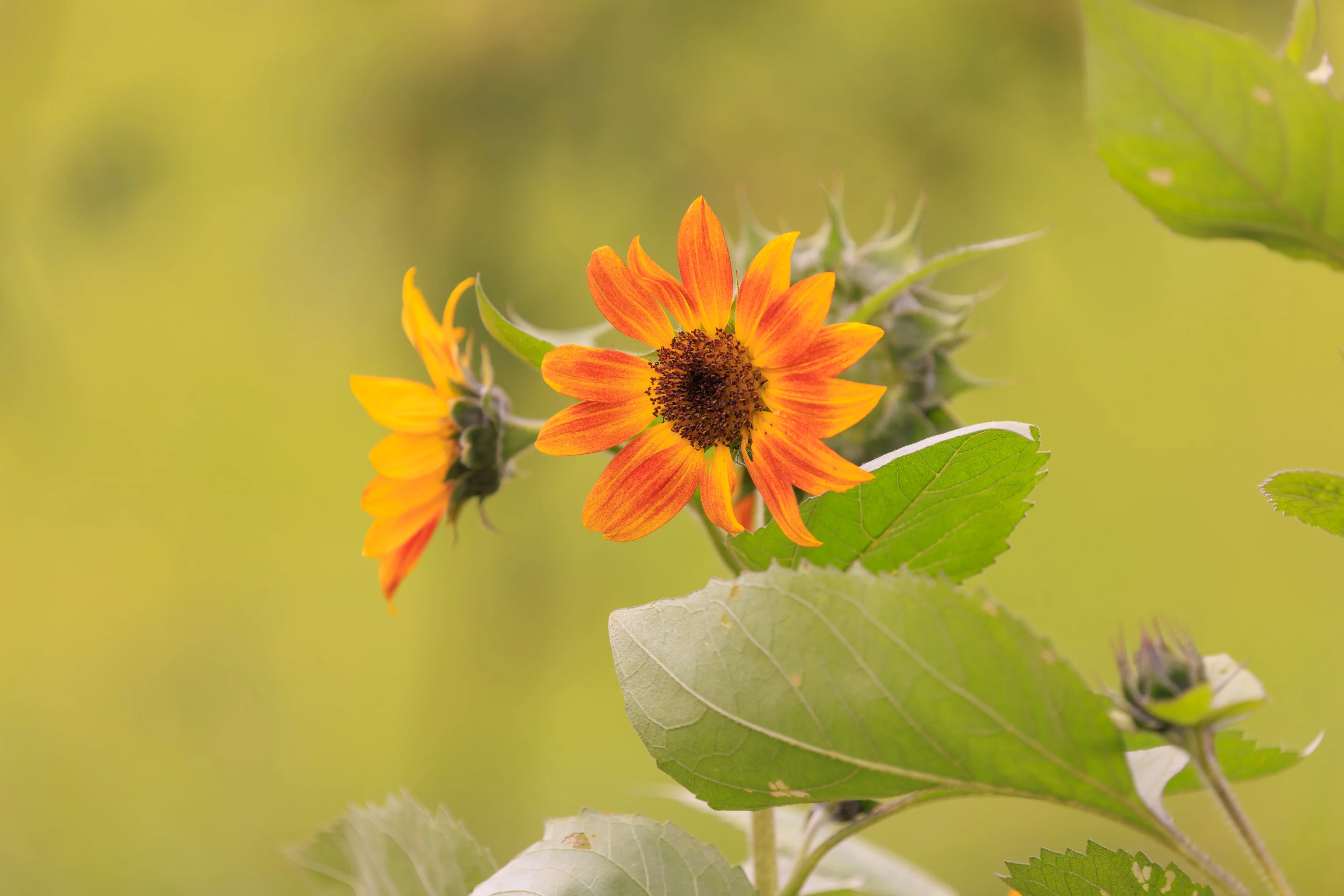
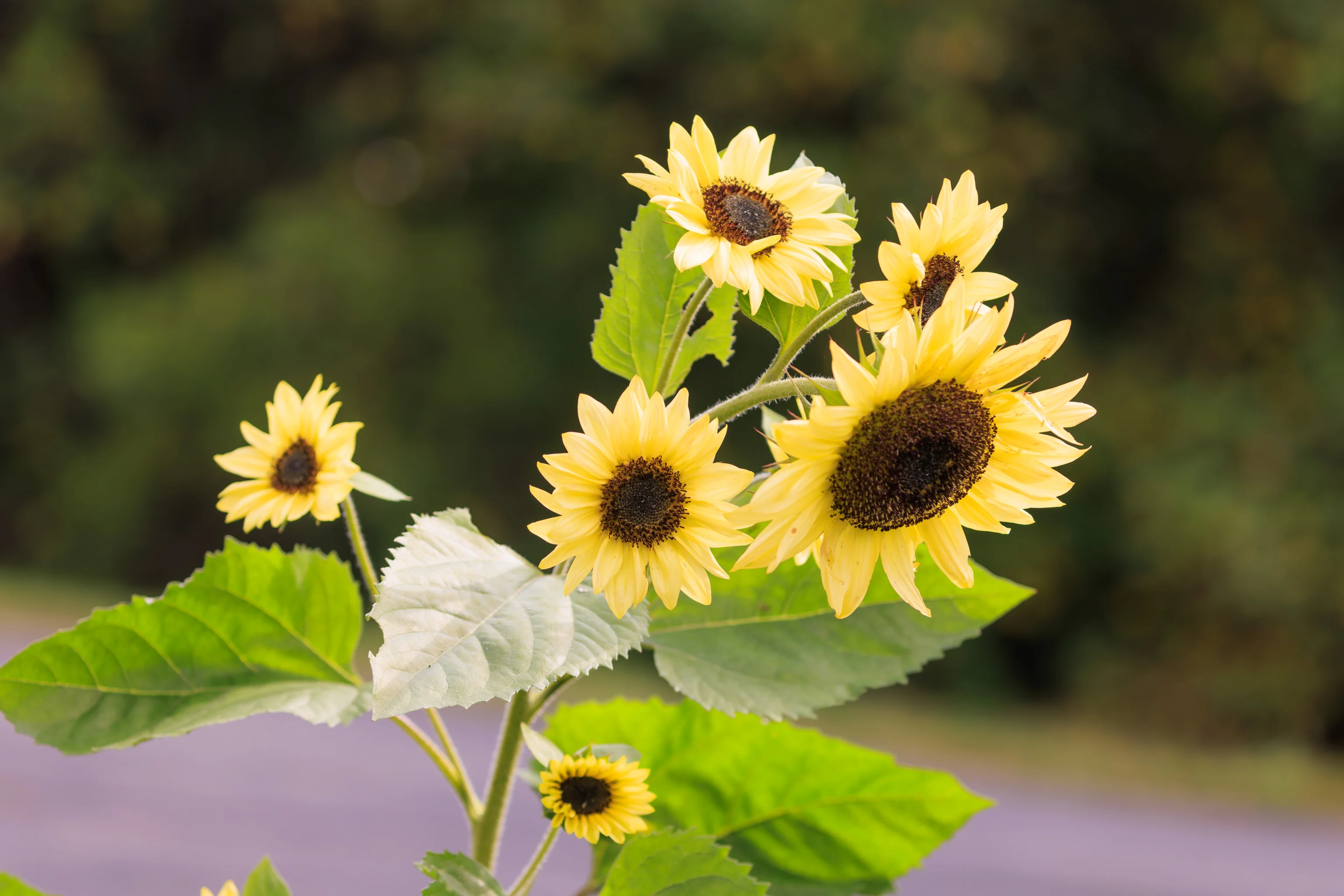
We enjoyed the flowers as we walked on our usual route, passing by around the greenhouse near the entrance. Most of the flowers were similar to the ones we saw during our previous visit just two weeks ago. Still, there always seems to be something new, or perhaps something we overlooked before.
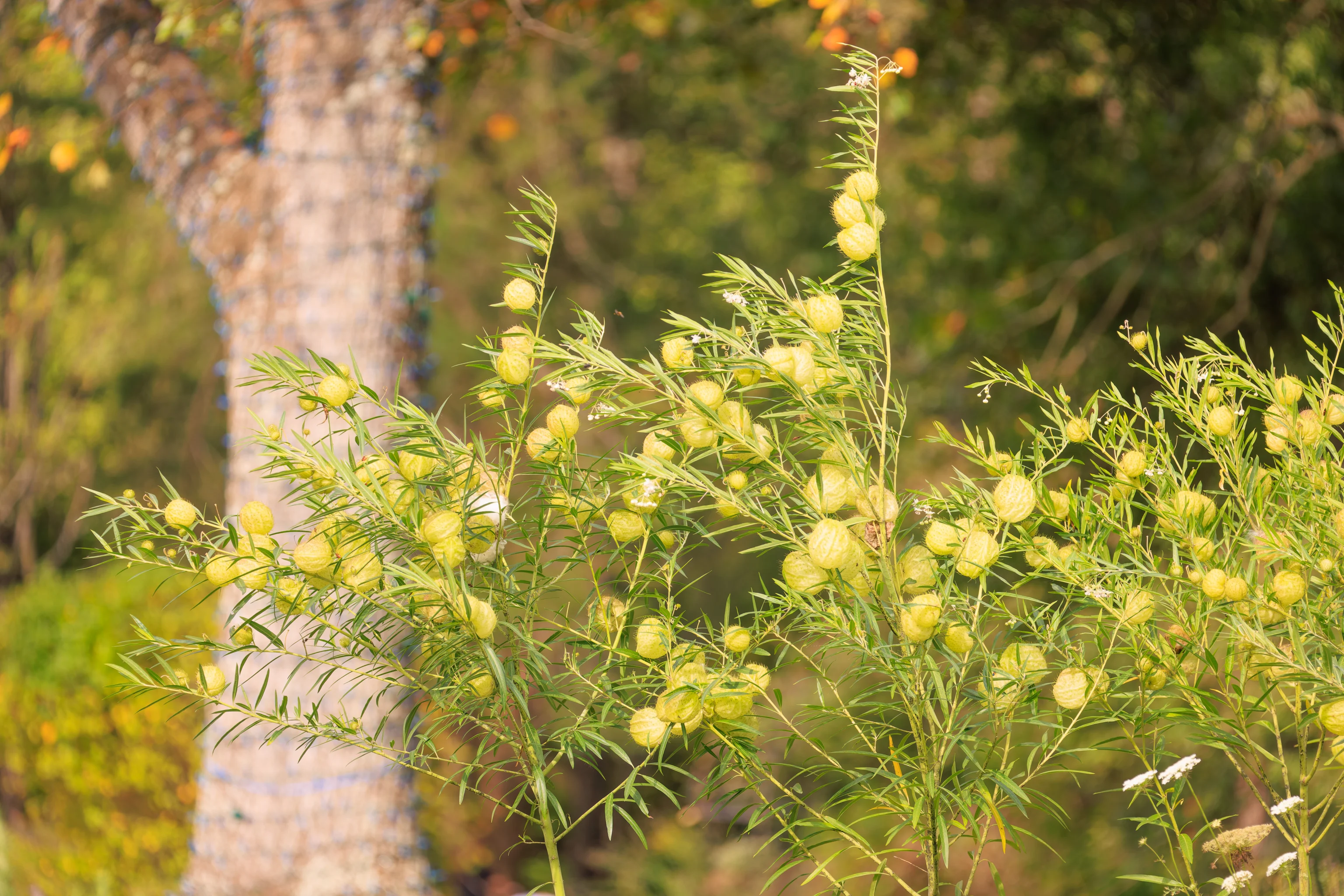
We noticed this plant when we were here two weeks ago. We weren’t sure what it was then and we still aren’t sure now. But it might be Gomphocarpus Physocarpus, also known as Balloon Plant or Hairy Balls, among other nicknames.
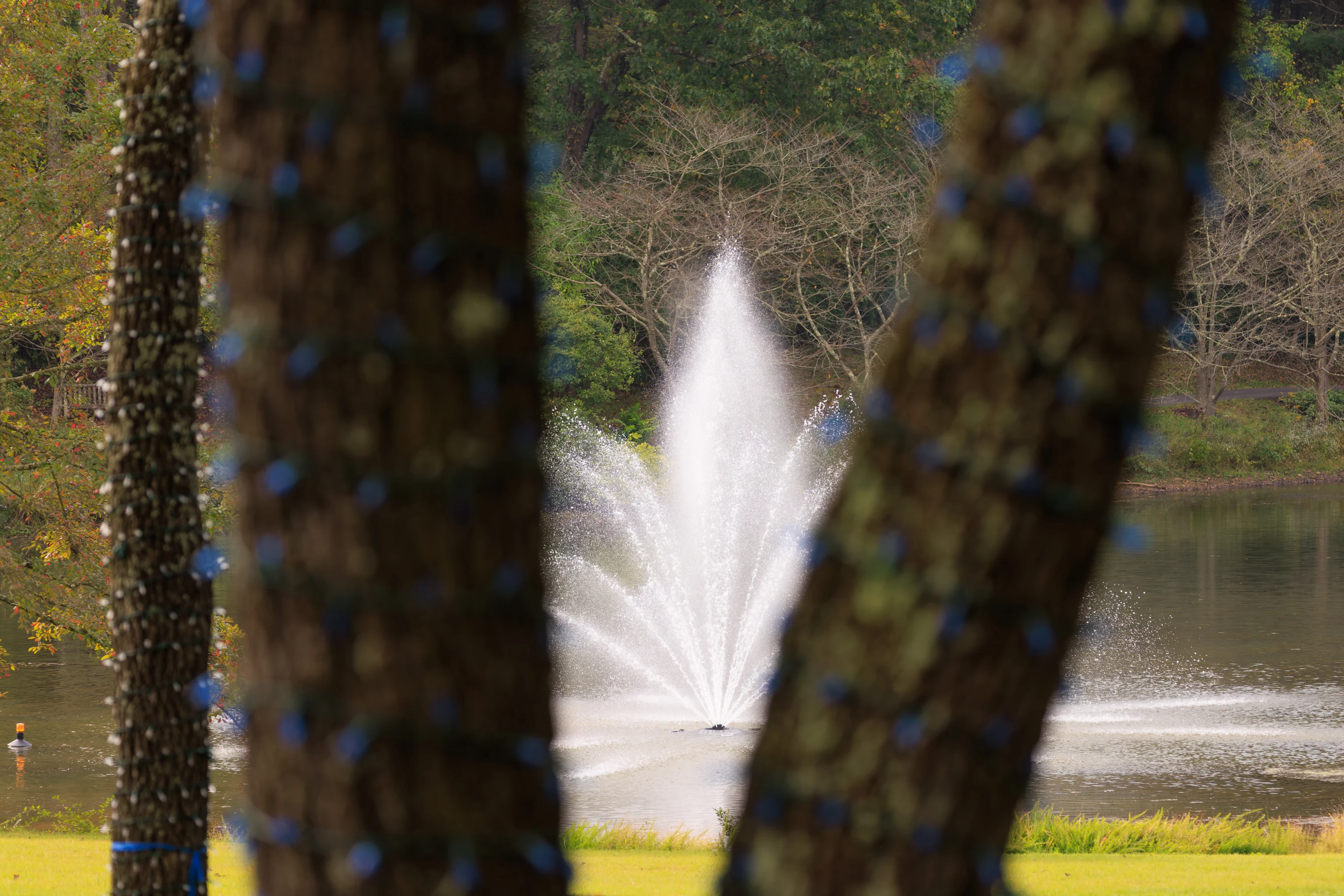
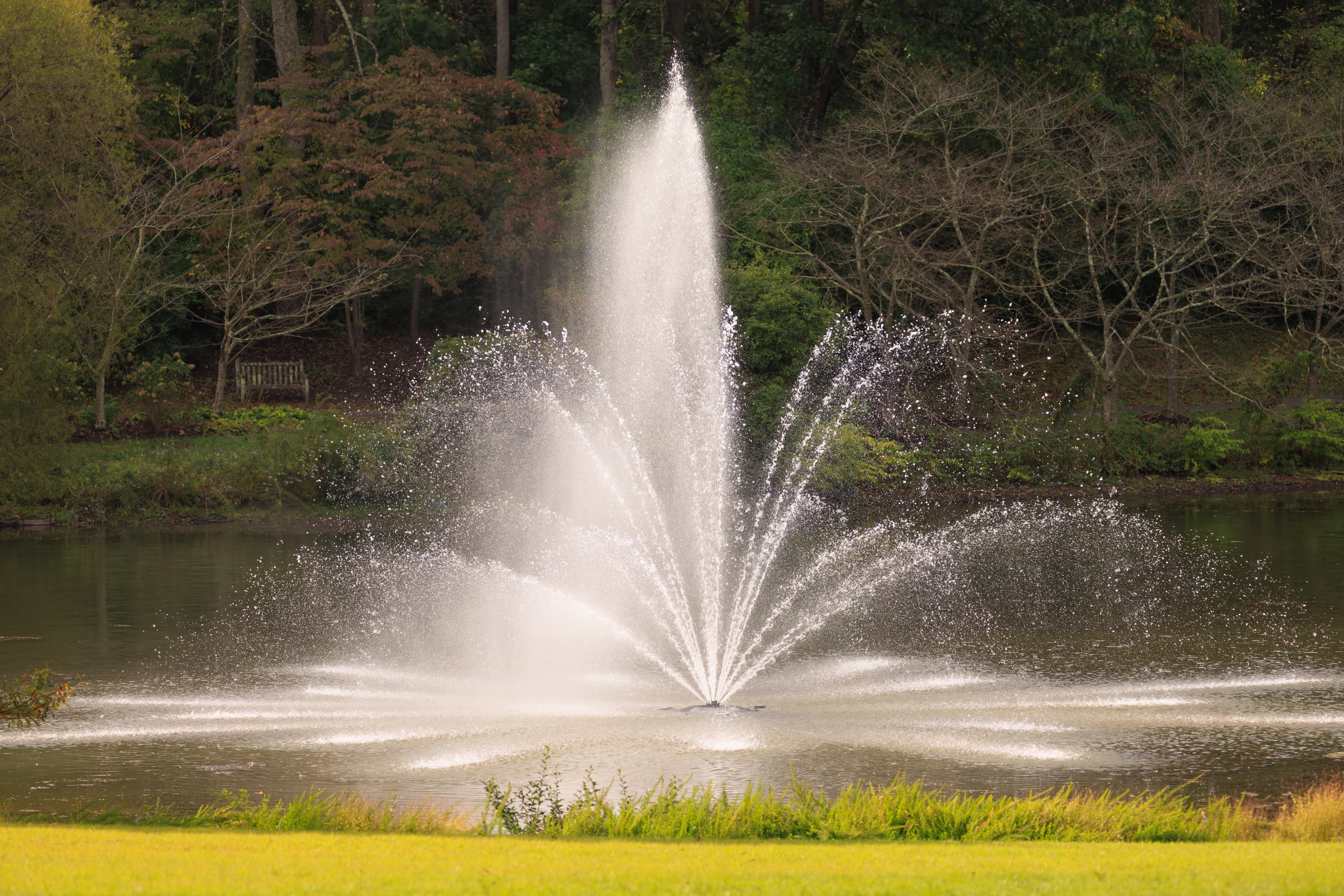
Soon, we saw the new fountain in front of us as we headed downhill. The forested area on the west side of the hill normally has quite a few birds, however, today, we had trouble spotting any. We could hear them but didn’t really see any.
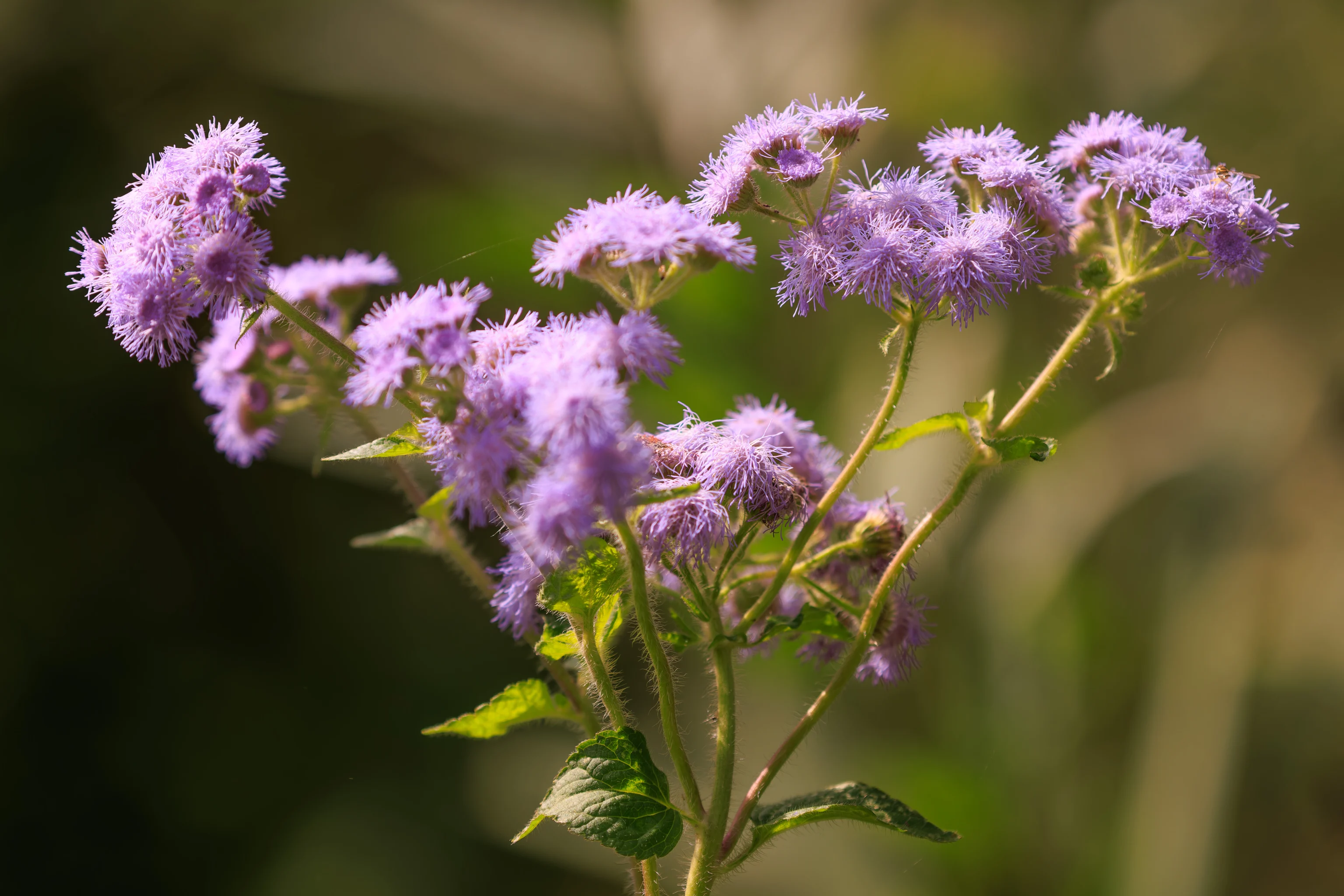
Google Lens seems to think this is Conoclinium Coelestinum, also known as Blue Mistflower. According to Wikipedia, it does come in purple.
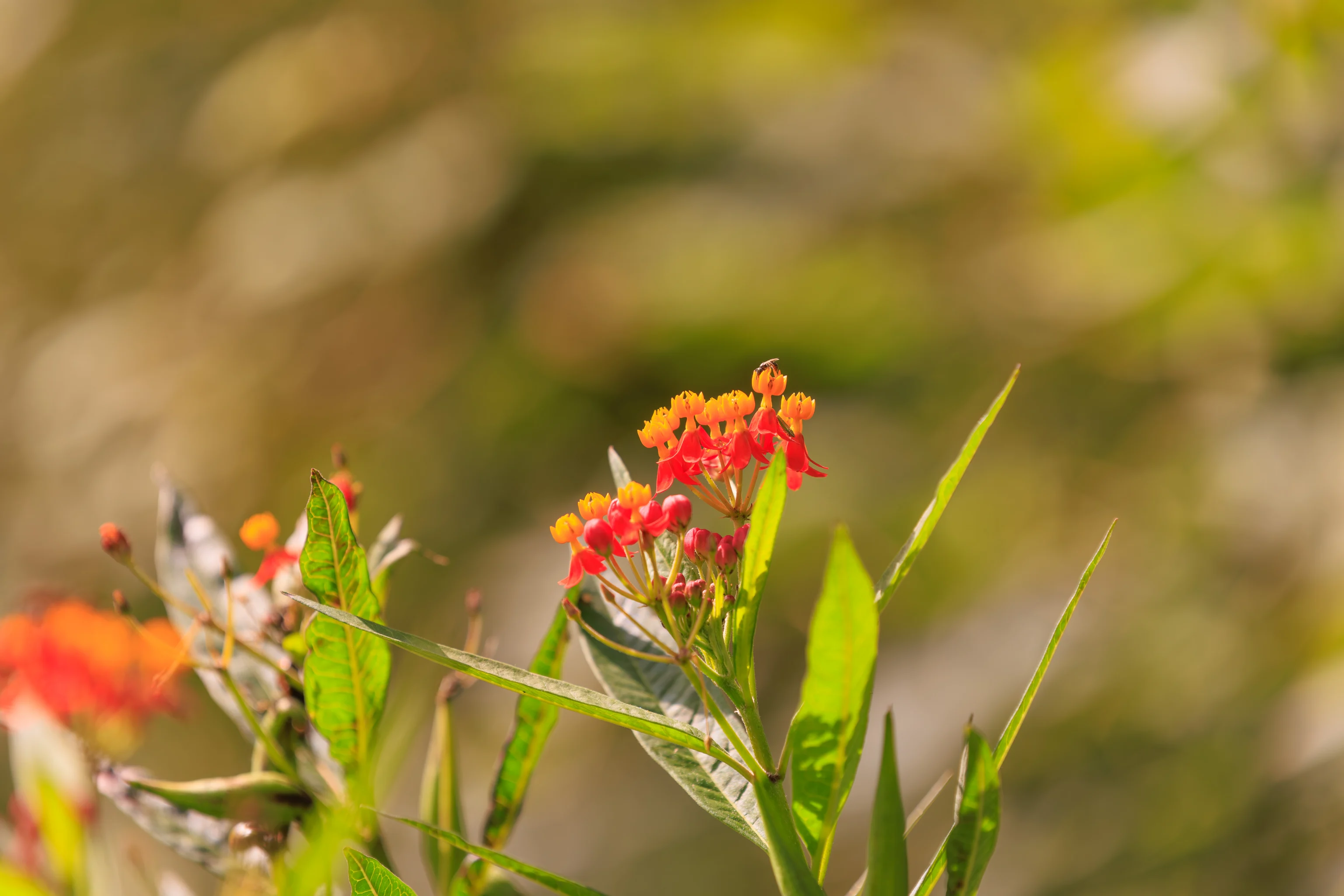
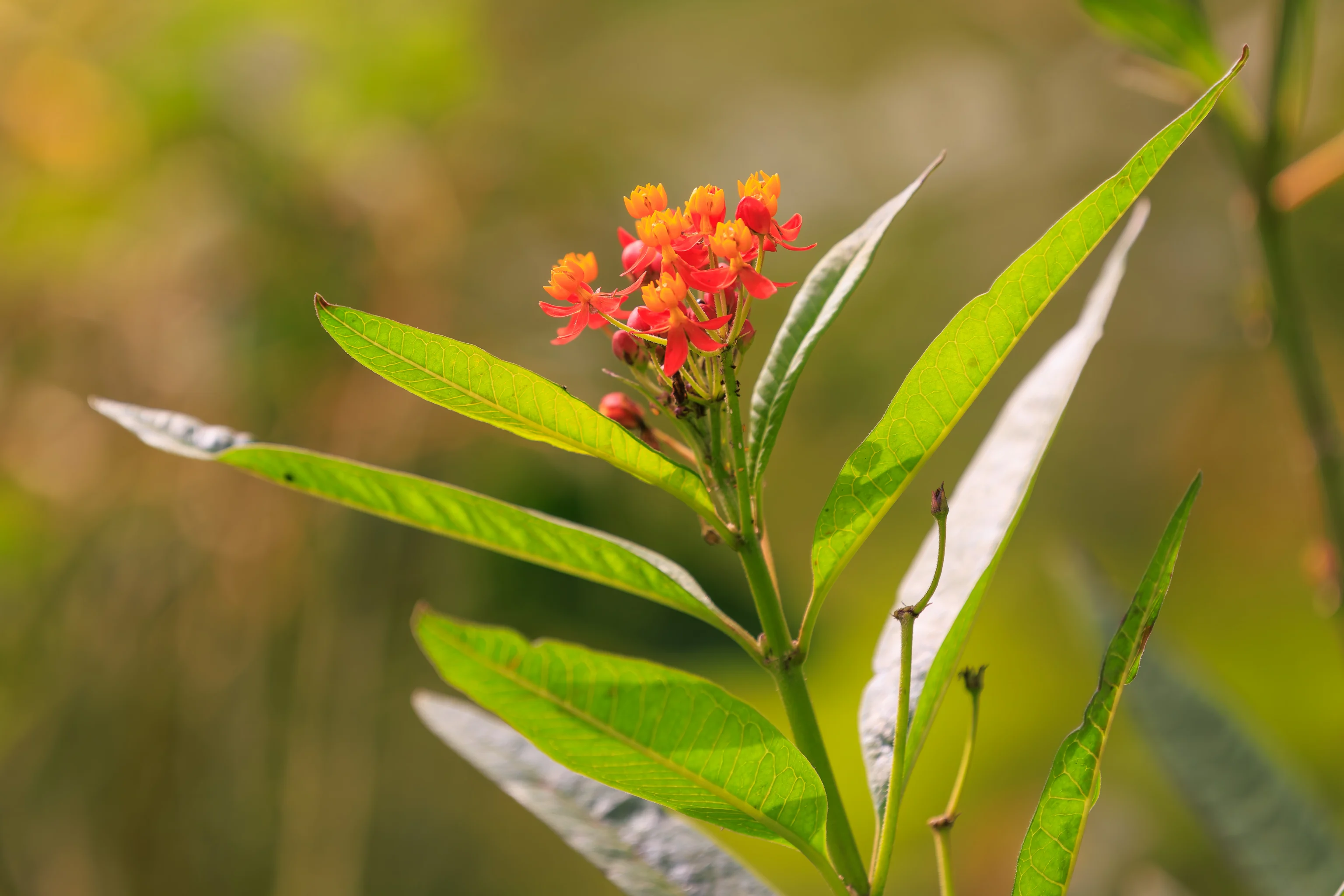
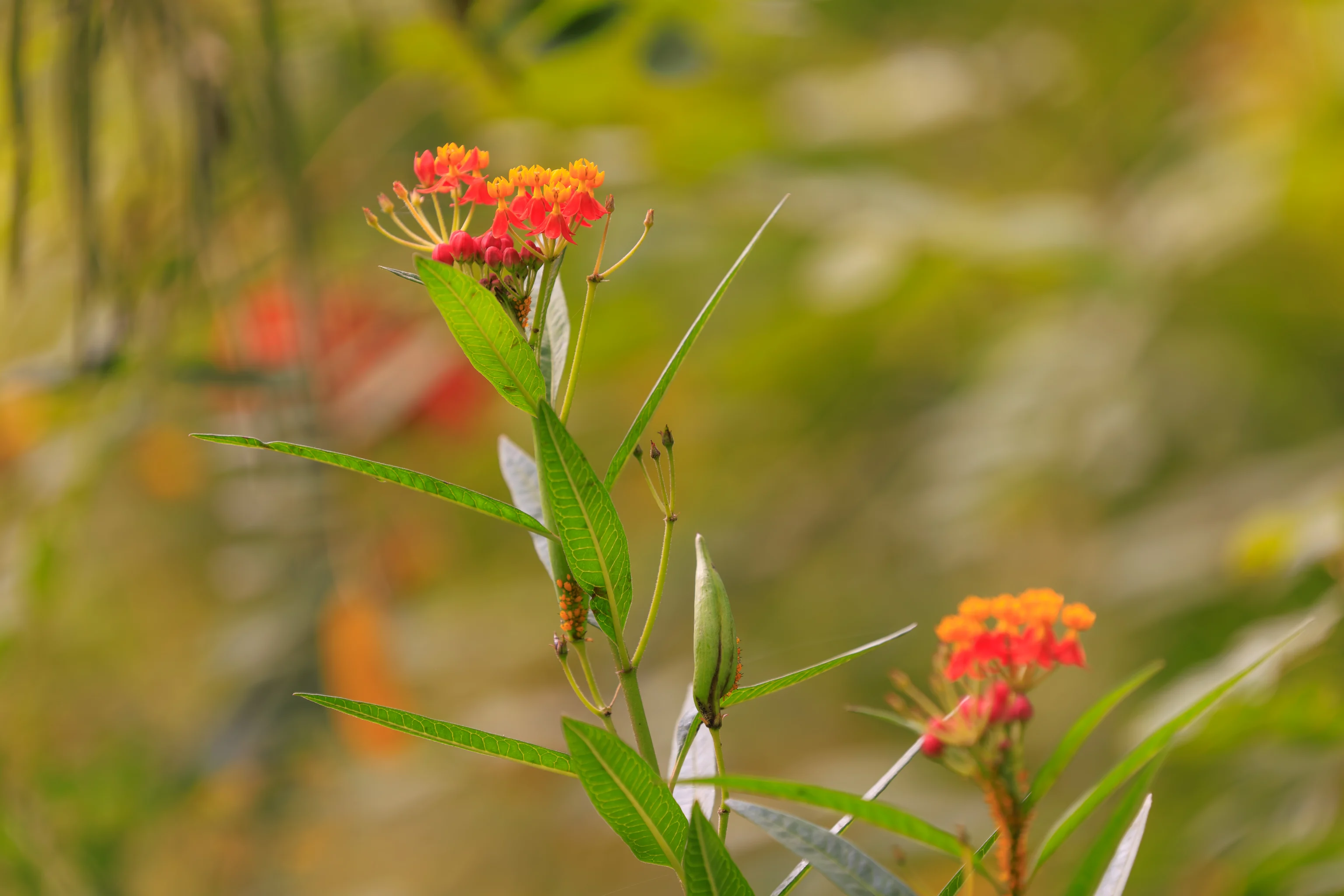
As for this flowering plant, Google Lens thinks it is Asclepias Curassavica, also known as Tropical Milkweed. They also seem to resemble Asclepias Lanceolata, or Red Milkweed. Which is it? We have no idea!
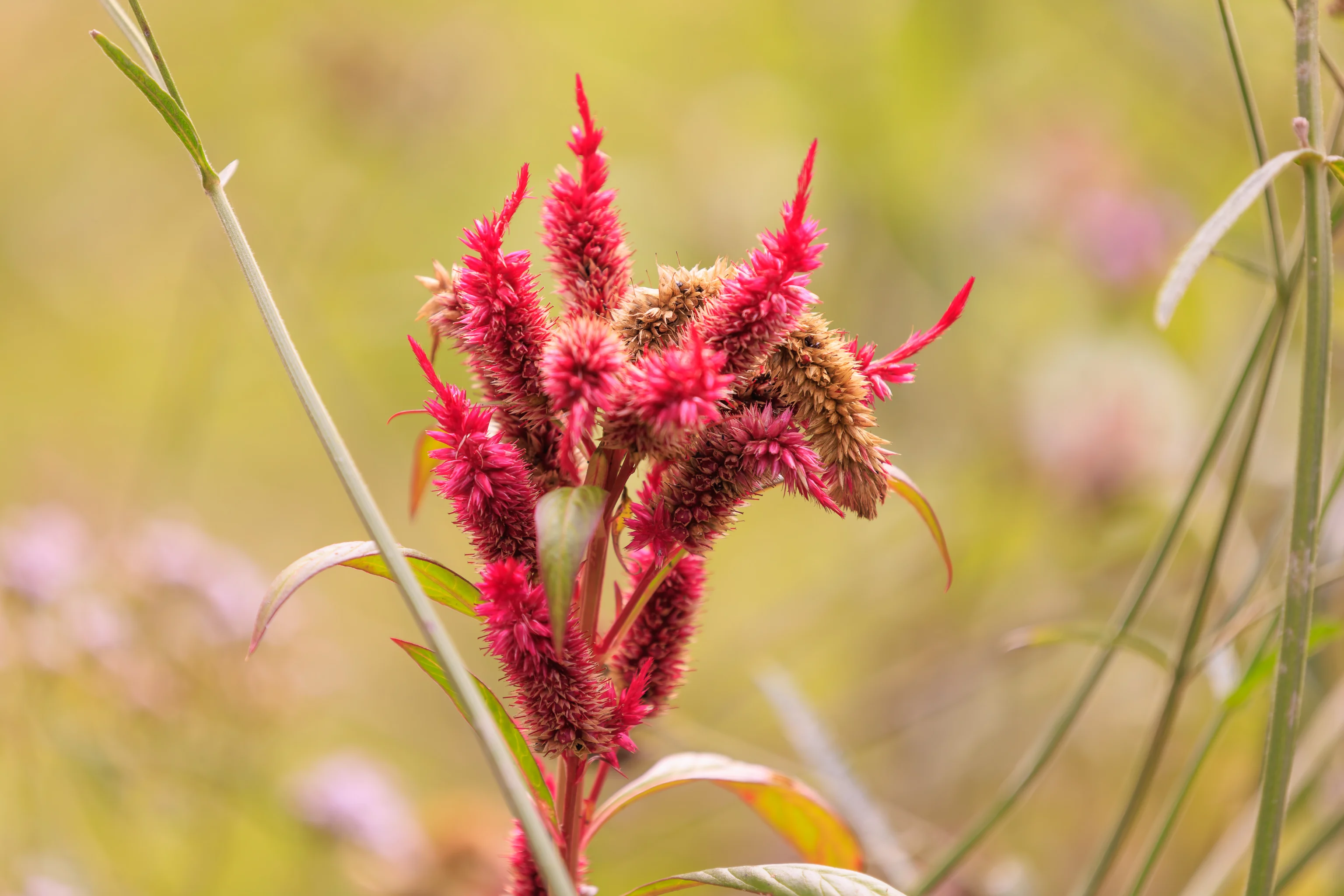
Google Lens thinks this interesting looking plant is Amaranthus Hypochondriacus, with various names relating to feathers or a rooster’s comb.
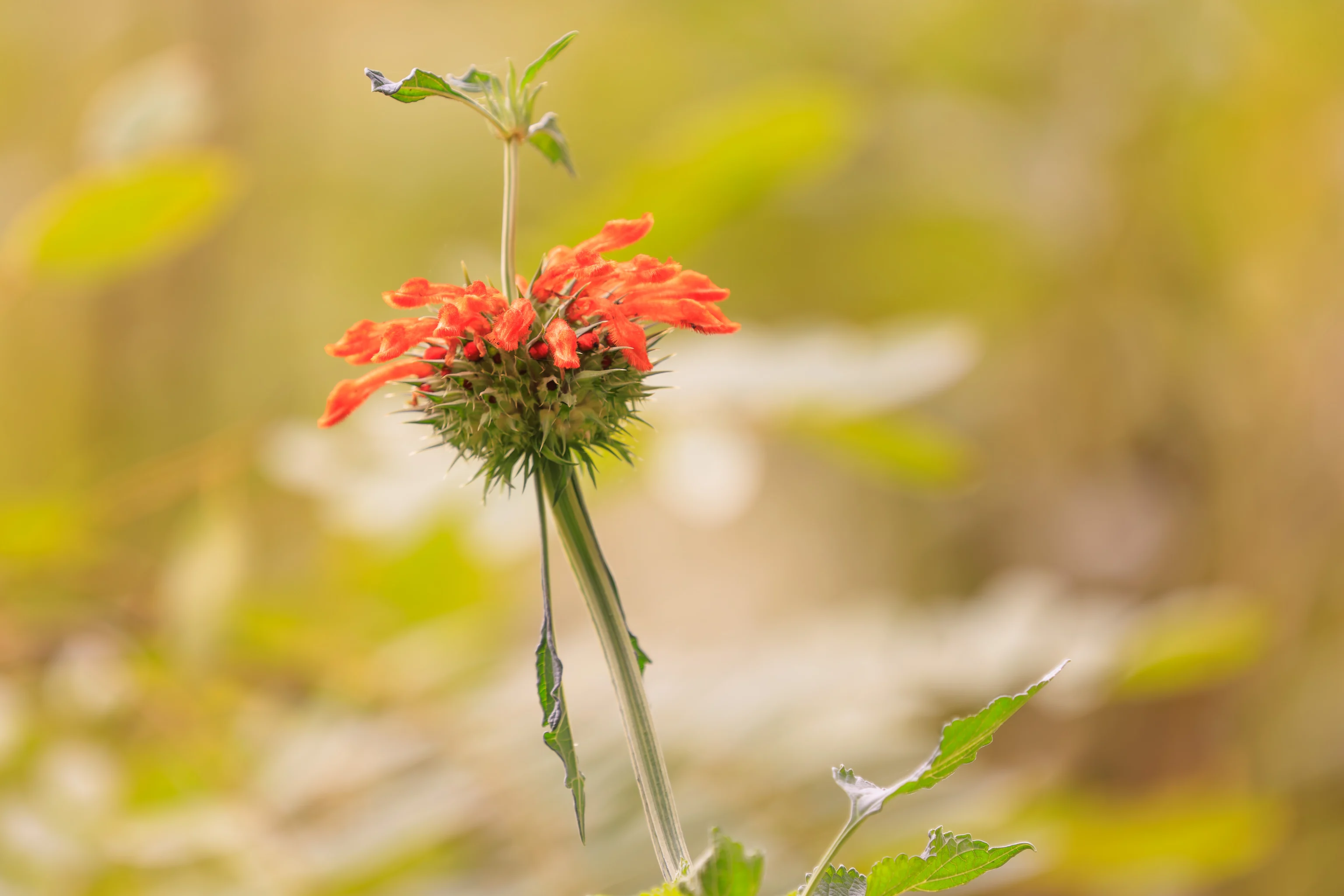
During our last visit, we noticed this flower species in a different location in the gardens. It might be Leonotis Nepetifolia, also known as Lion’s Ear.
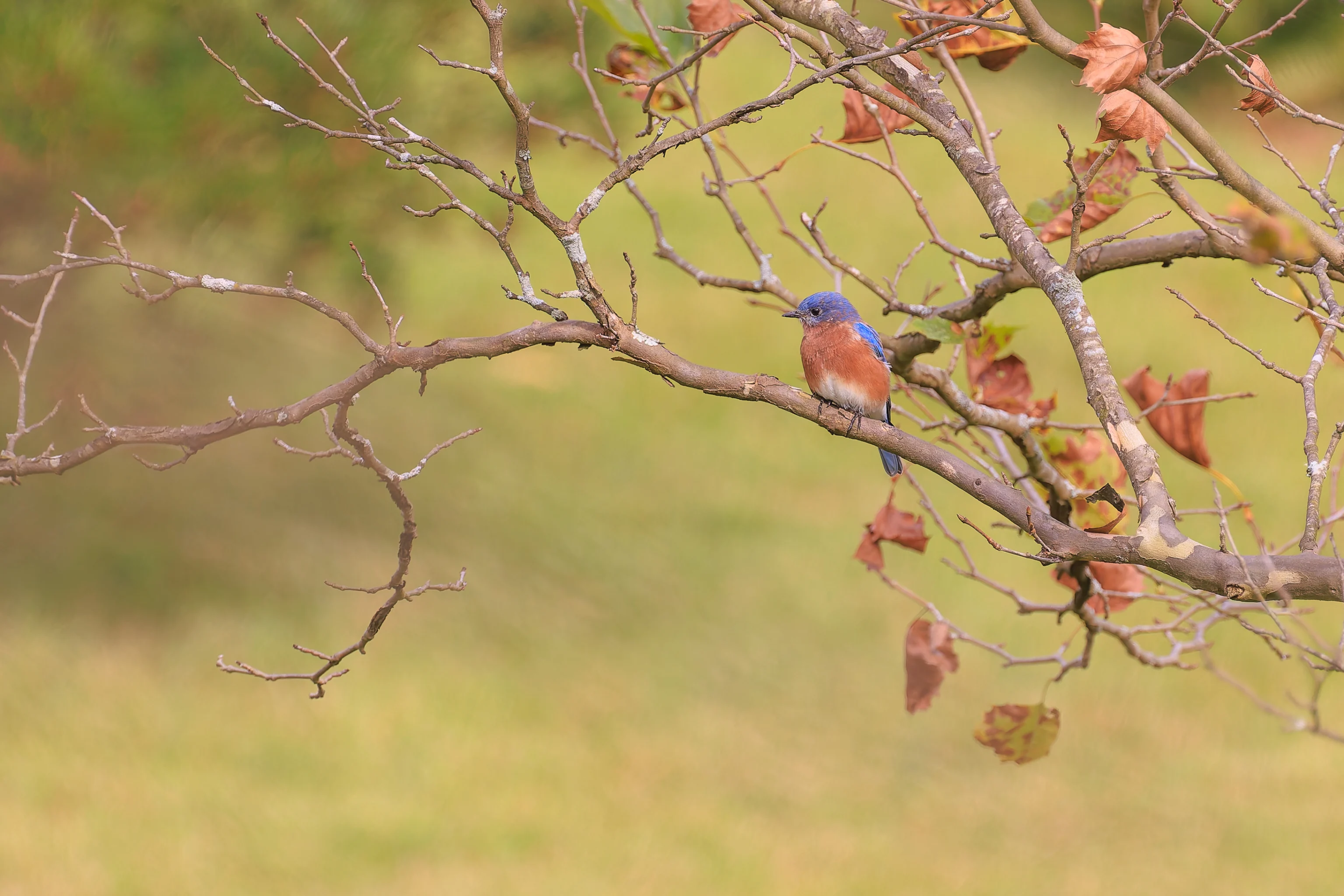
By now, we were on the western edge of Lake Caroline, the large central pond in the gardens. We finally got a good look at a bird, an Eastern Bluebird!
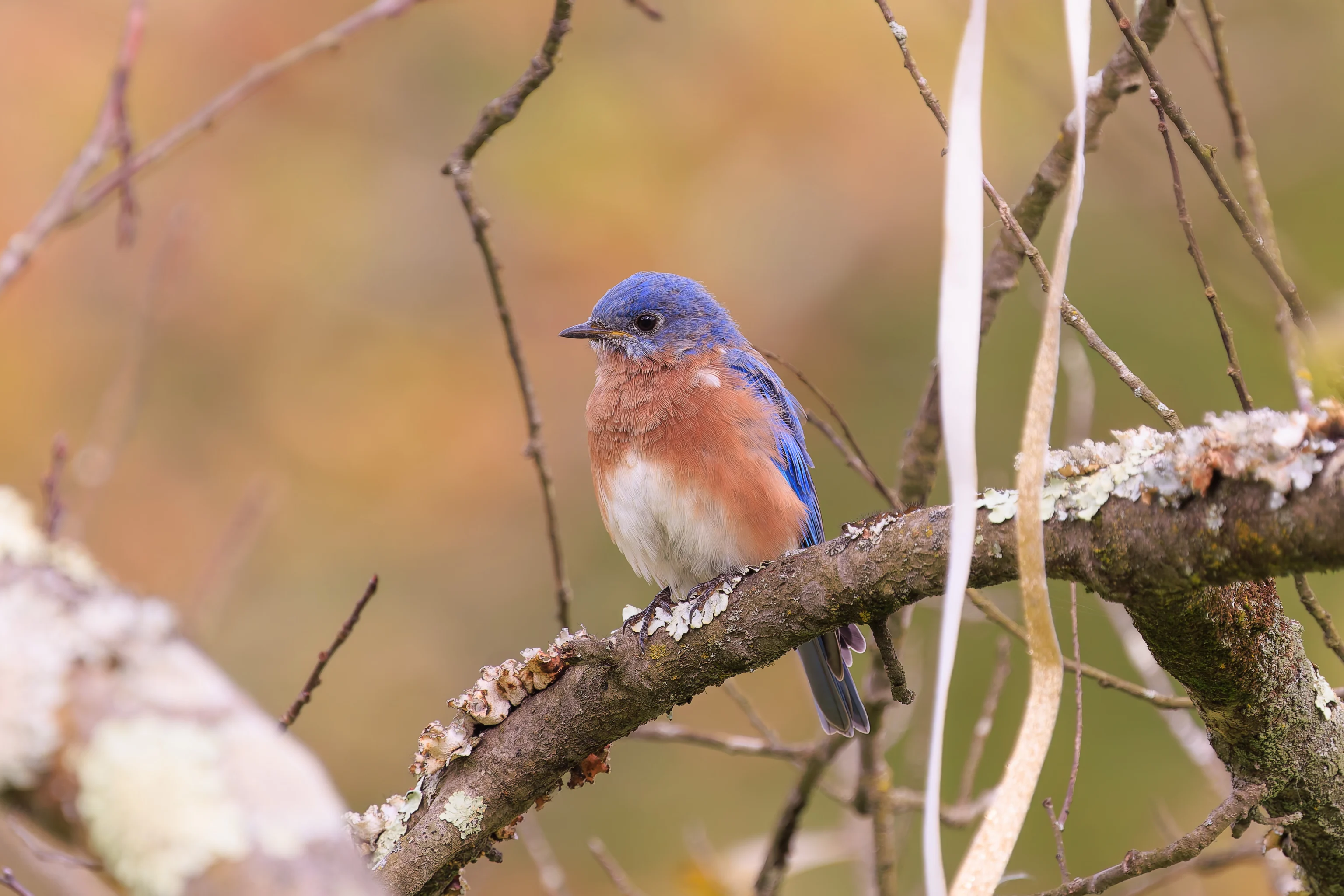
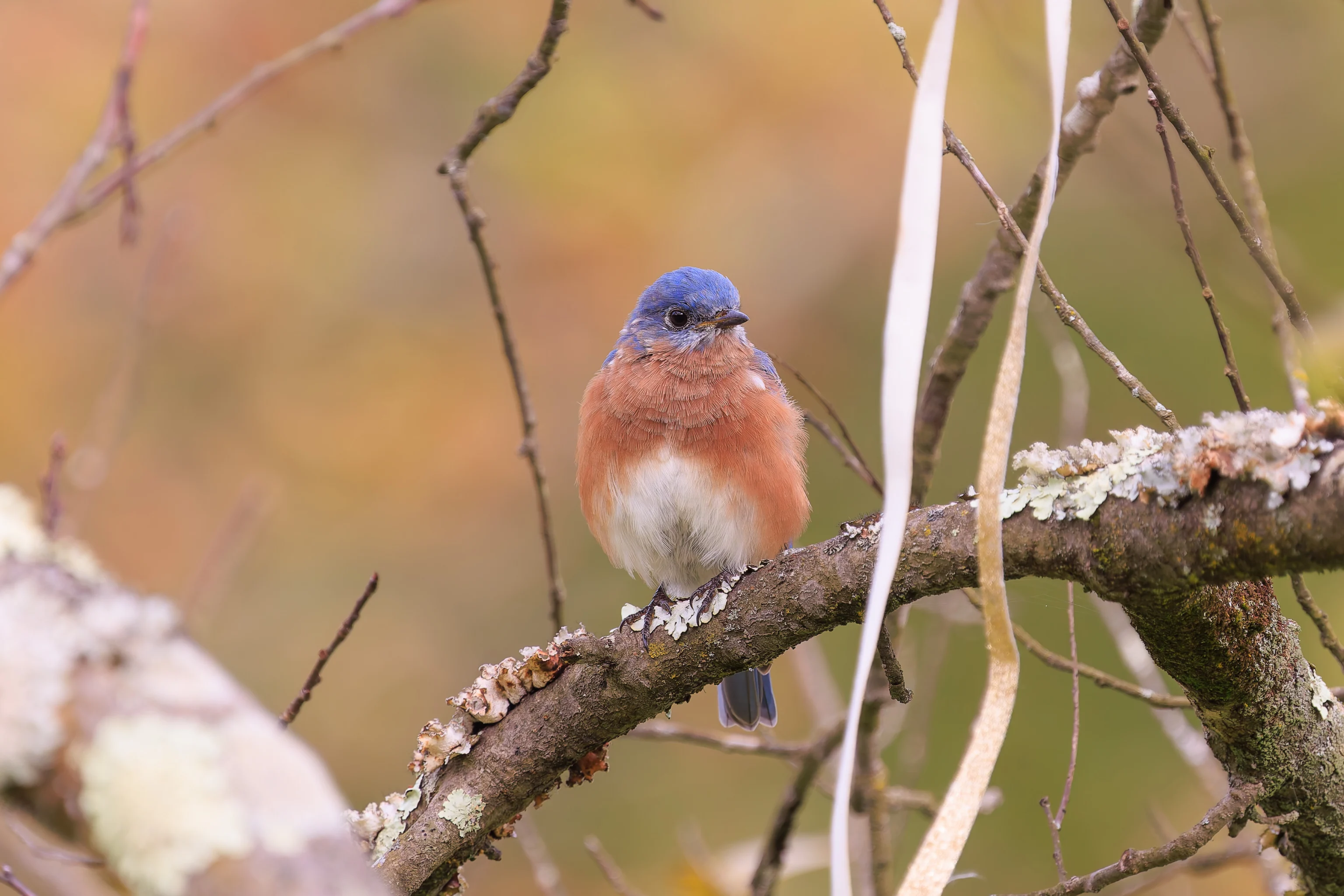
These small blue birds are quite attractive!
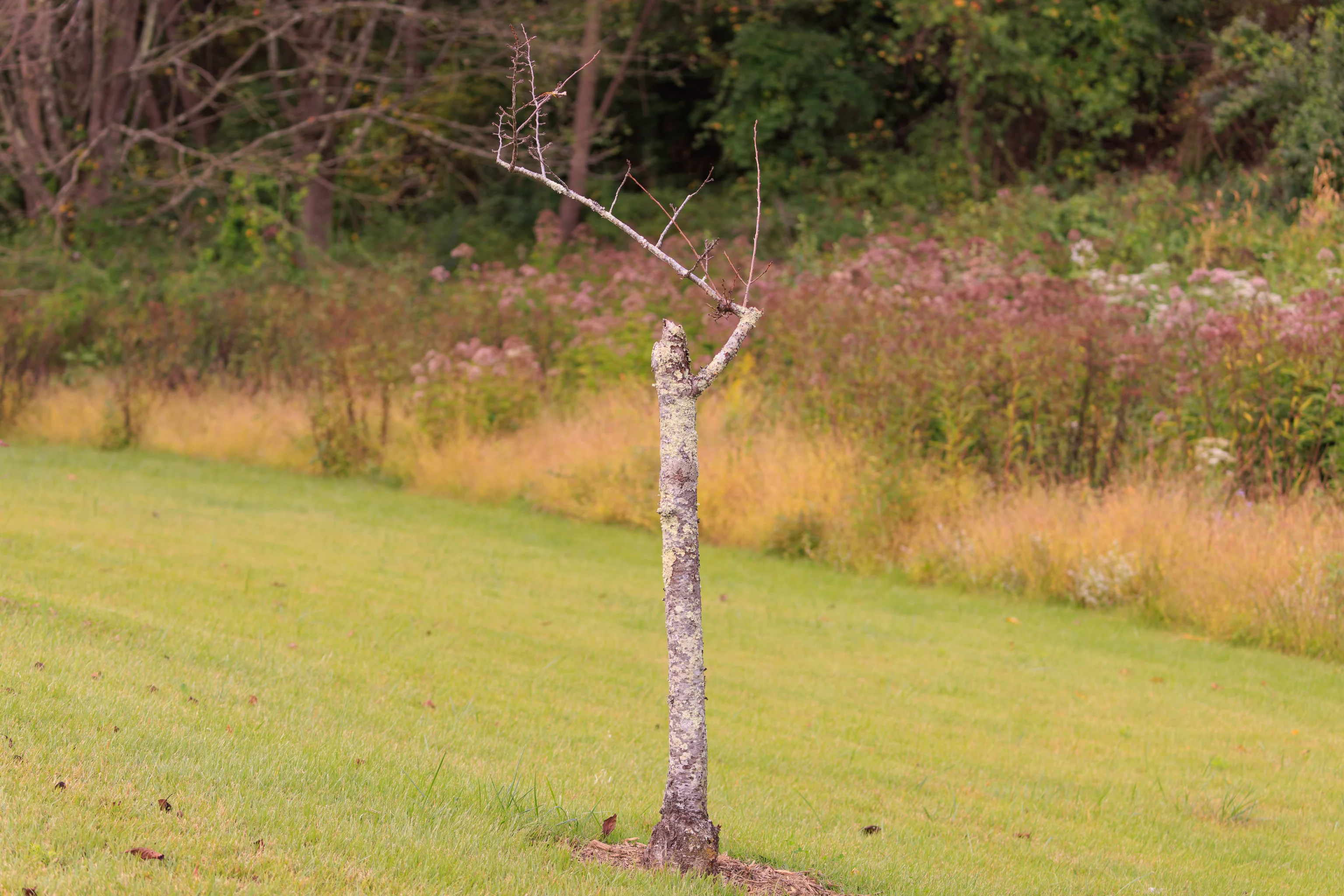
Many, if not all, of the cherry blossom trees in the gardens seem to have already dropped their leaves. Interestingly, the ones in our local area have not, and they do tend to flower around the same time. This tree seems like it could be a relative of Stumpy! Stumpy, who was cut down in May, has reproduced, with five little saplings!
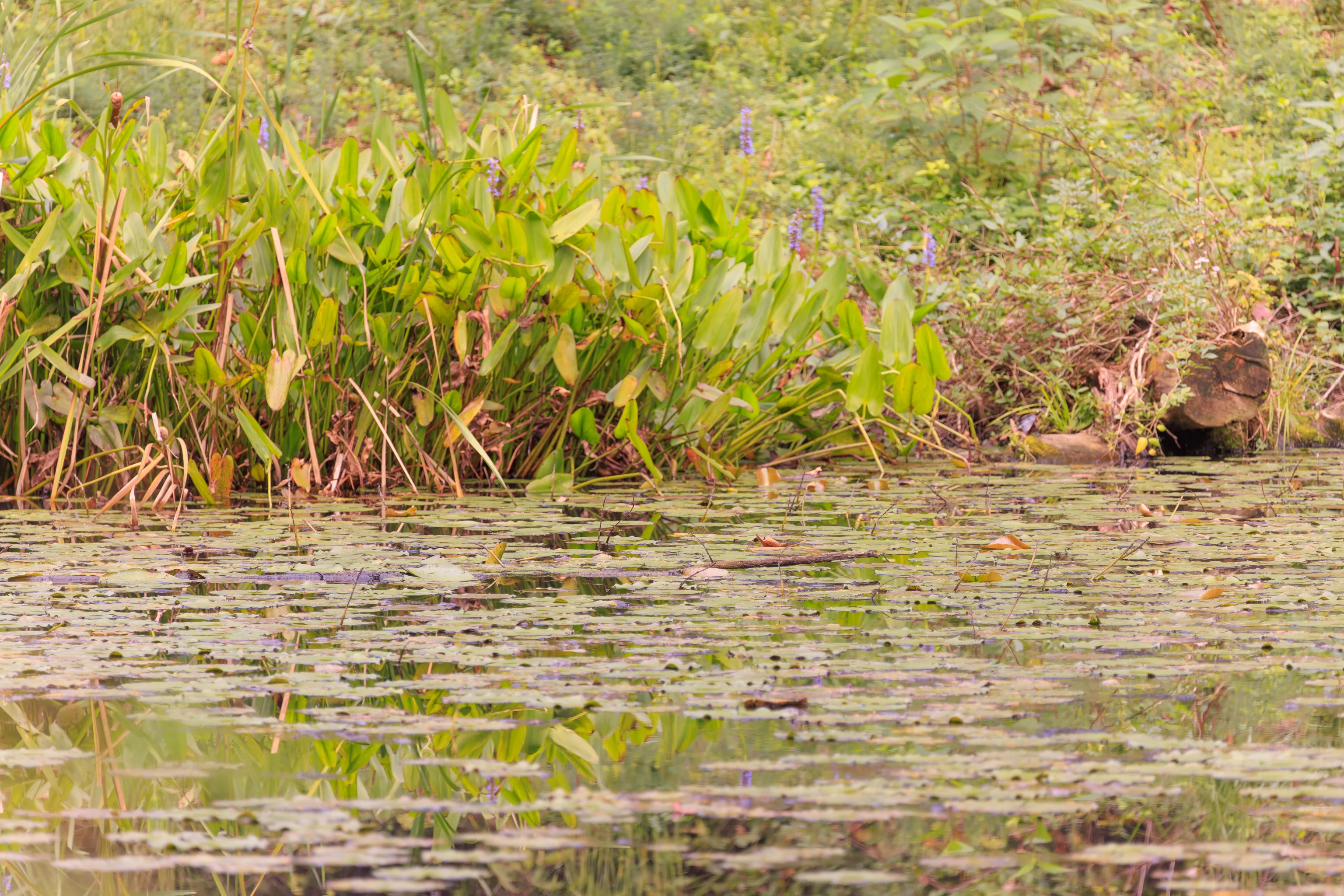
We decided to walk by Lake Lina, the westernmost pond in the gardens and the smallest of the tree. There is quite a bit of vegetation around the pond with little sunshine unless the sun is high above.
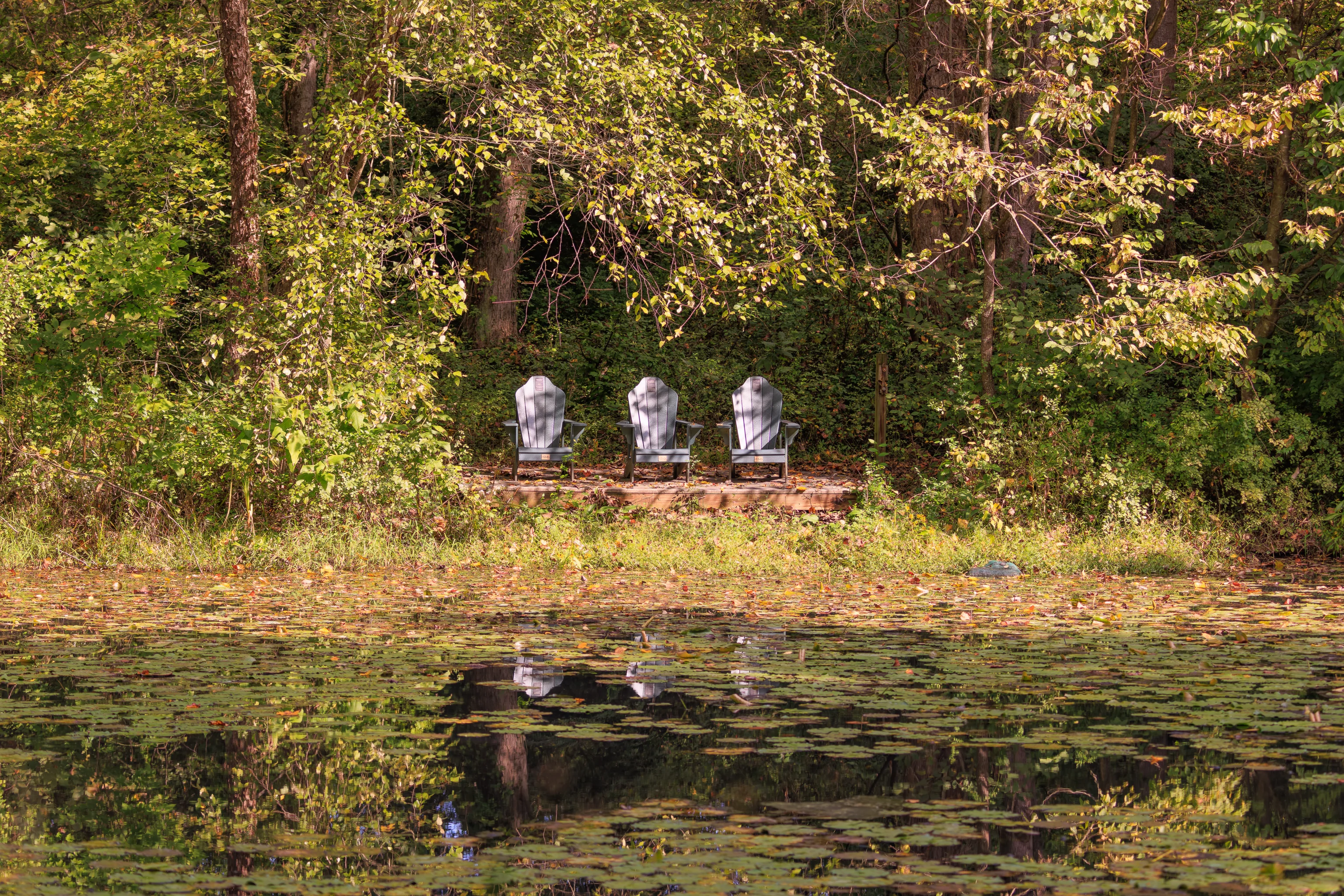
While it is possible to walk around the pond, doing so requires walking through grass. The grass was still damp and we didn’t have waterproof shoes on so we only walked on the south side of the pond where we could stay dry. We could see three unoccupied chairs in a row on the other side.
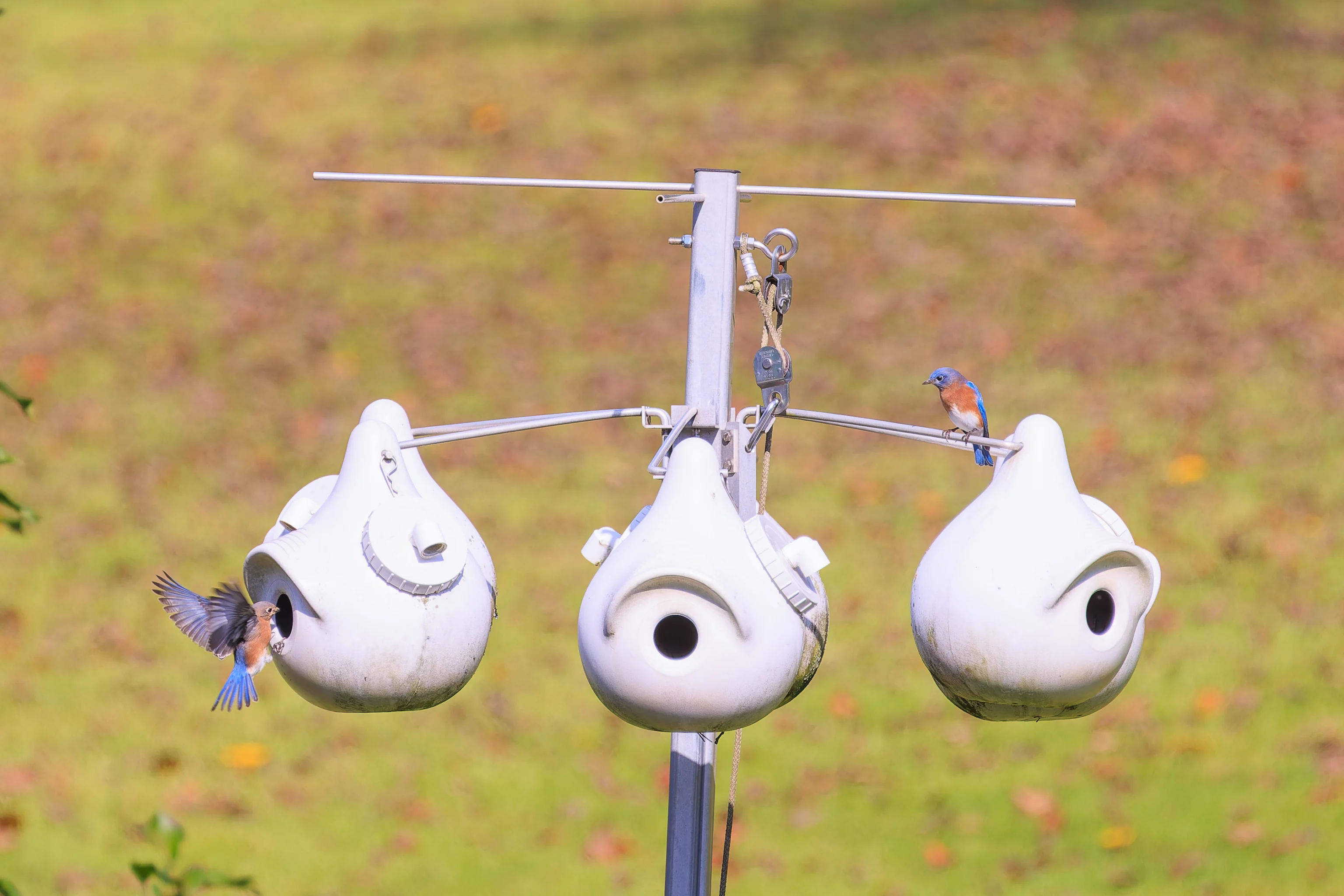
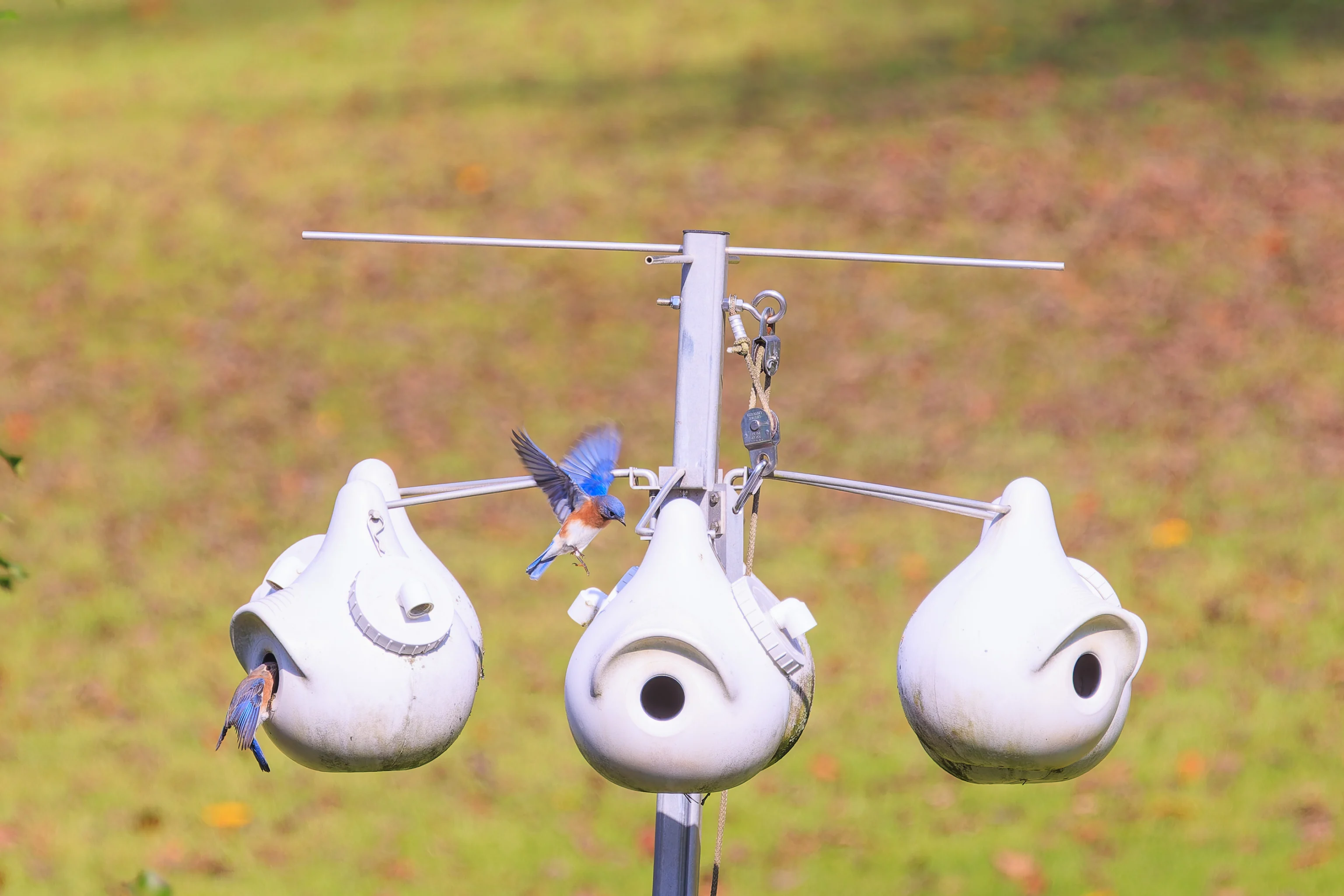
After reaching the western end of Lake Lina, we backtracked and walked to the eastern edge of Lake Caroline. From there, we started walking clockwise around Lake Gardiner. Like our last visit, the Eastern Bluebirds seemed to be very interested in these white Purple Martin nest boxes! We did see bluebirds land on the box openings and poke their heads in to take a look, but we didn’t see any try to enter.
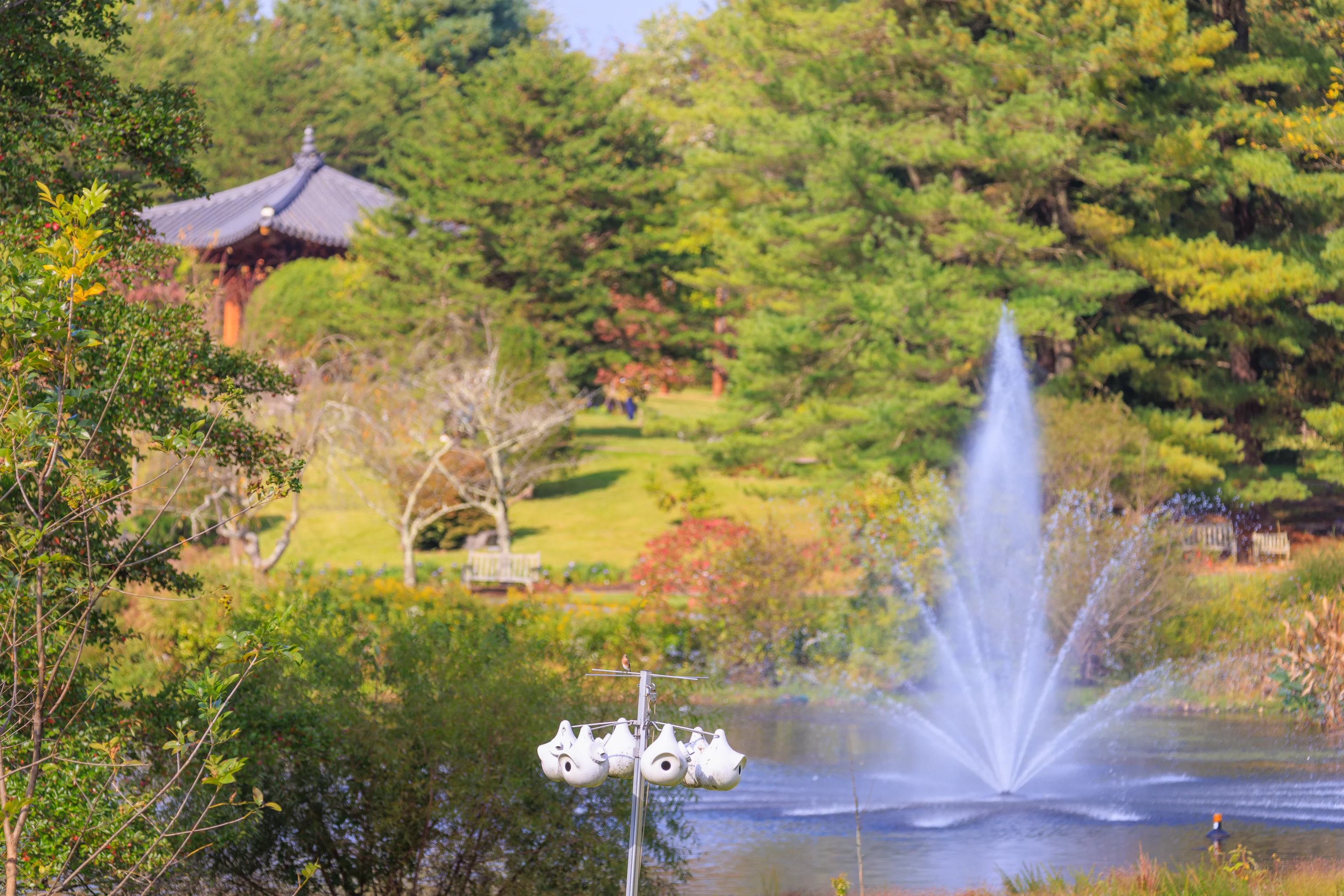
After walking a bit further to the east, we looked back to see a nice scene with the nest boxes, fountain, and Korean bell pavilion in the background.
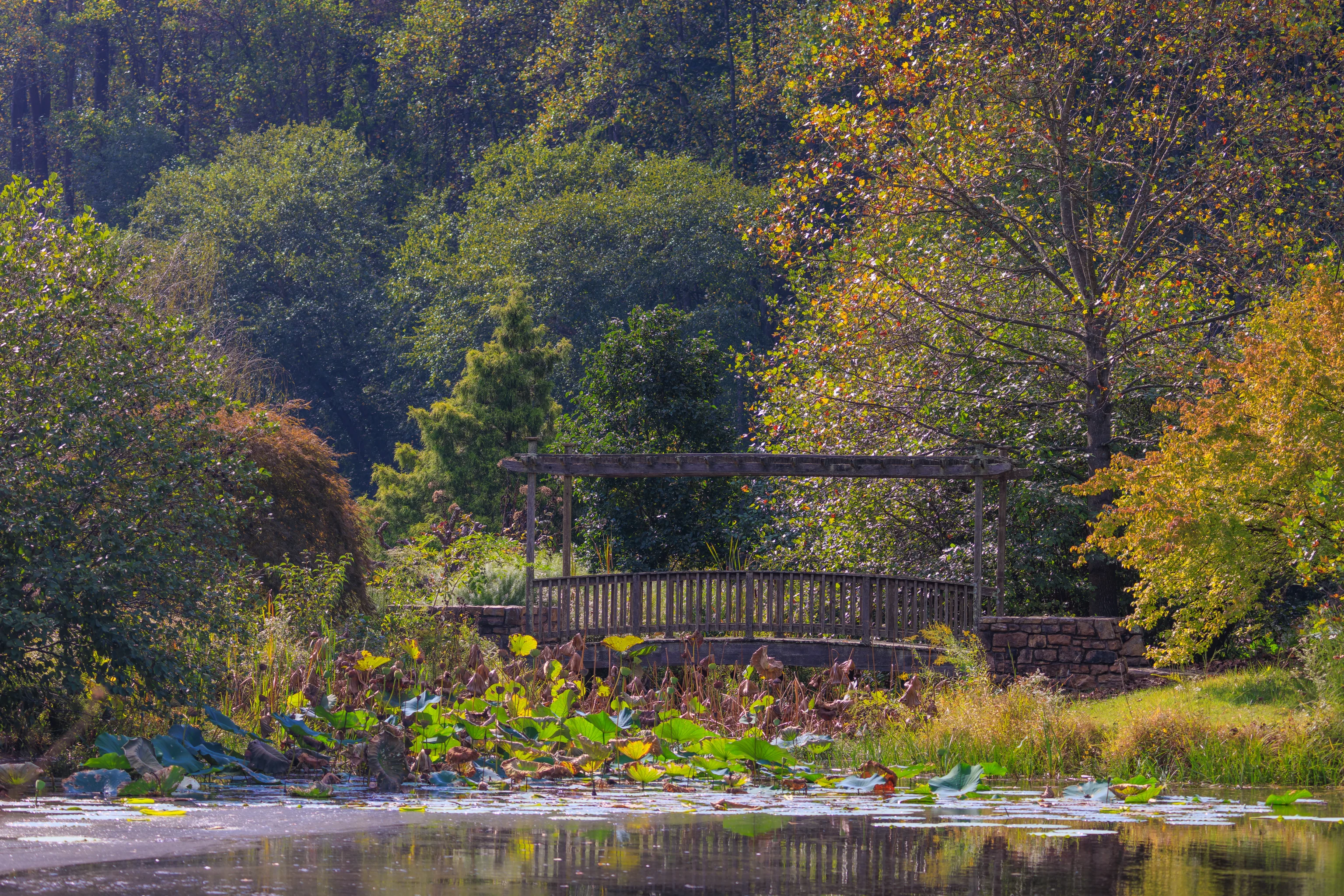
From a distance, we could see that all the lotus flowers were gone. There were still a few two weeks ago.
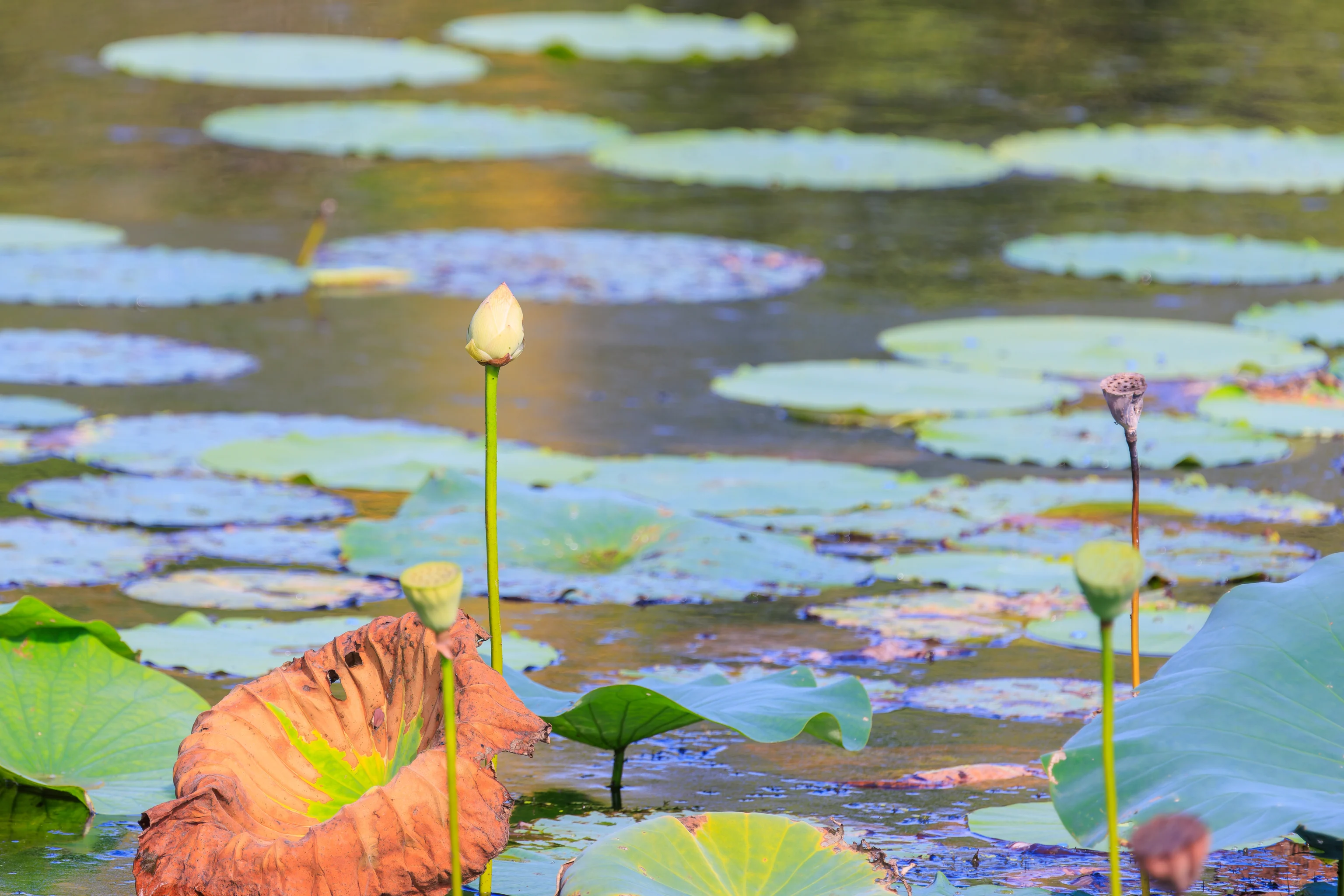
We did see at least one flower that never bloomed. It’s probably way too late in the season for it to open?
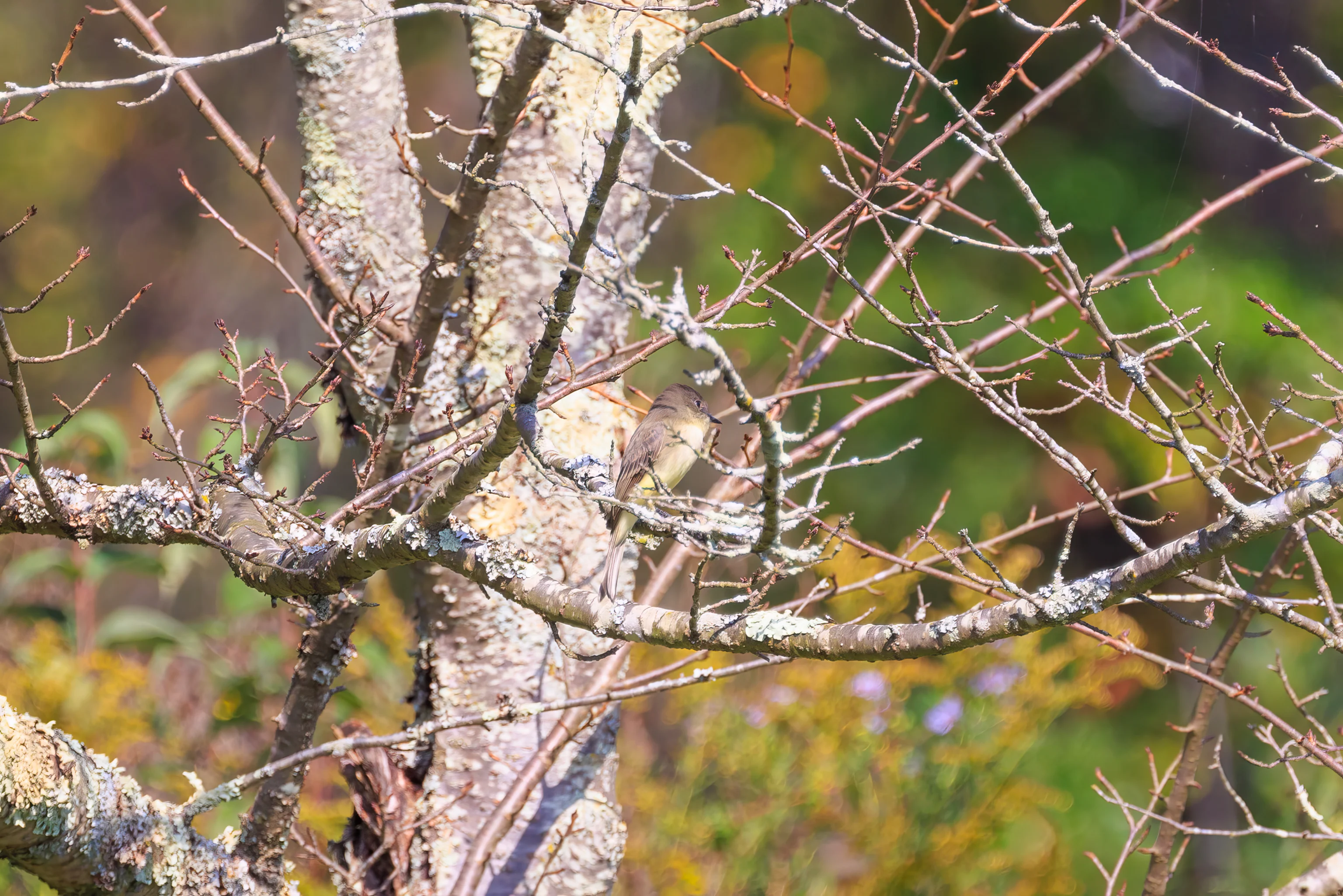
We walked to the south across Lake Gardiner via two bridges and an island. Upon reaching the southern shore of the pond, we started walking to the east. We soon spotted an Eastern Phoebe.
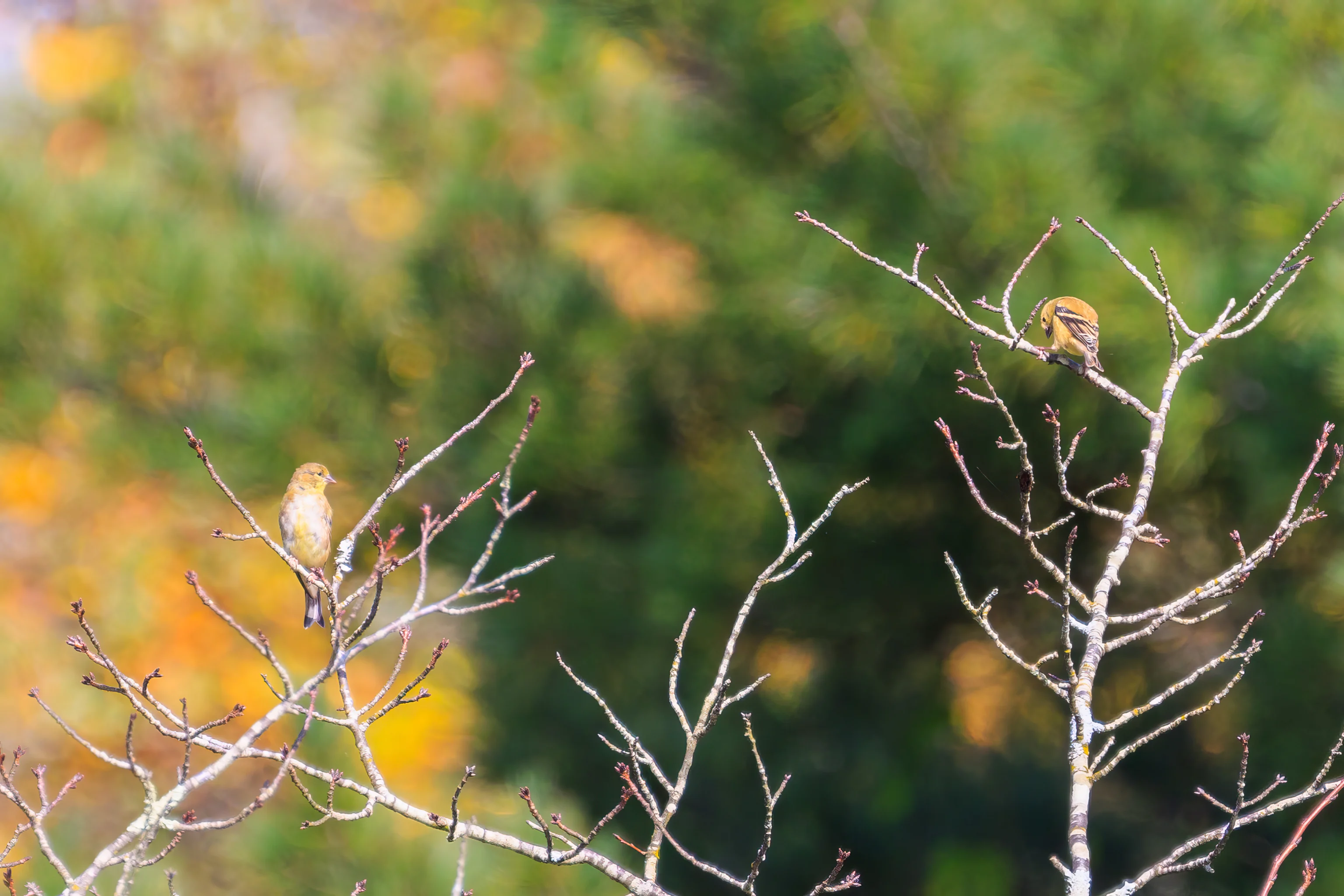
We also found two American Goldfinches in their dull winter colors!
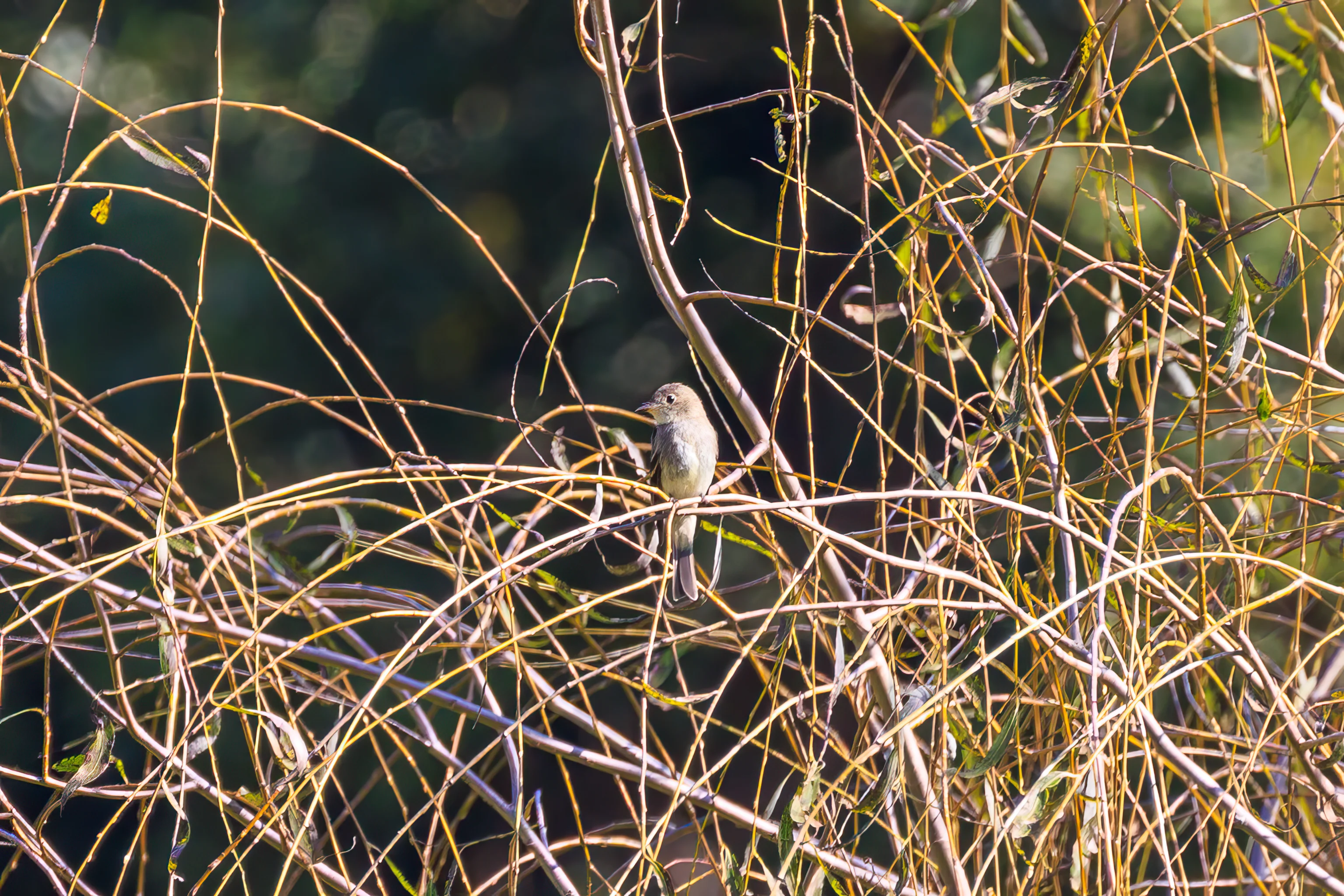
We sat in a pair of chairs at the south side of the Lake Gardiner where we could easily observe the birds on the northern side of the pond. This bird, on the northern side, seems to be a Least Flycatcher based on the eye ring, though it also resembles an Eastern Wood-Pewee.
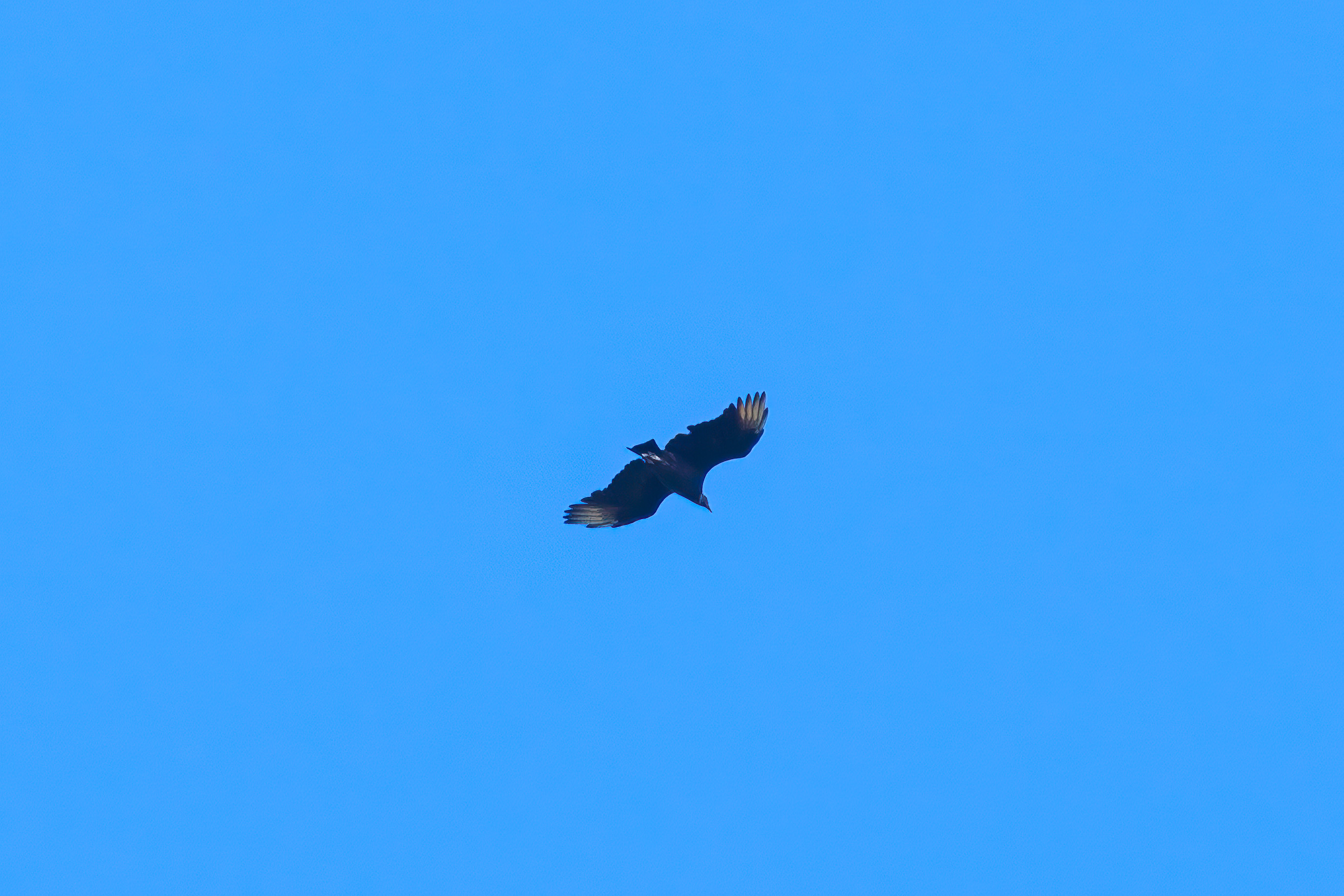
High up above, we spotted a Black Vulture. There may also have been a Turkey Vulture, though it flew out of sight before we could photograph it.
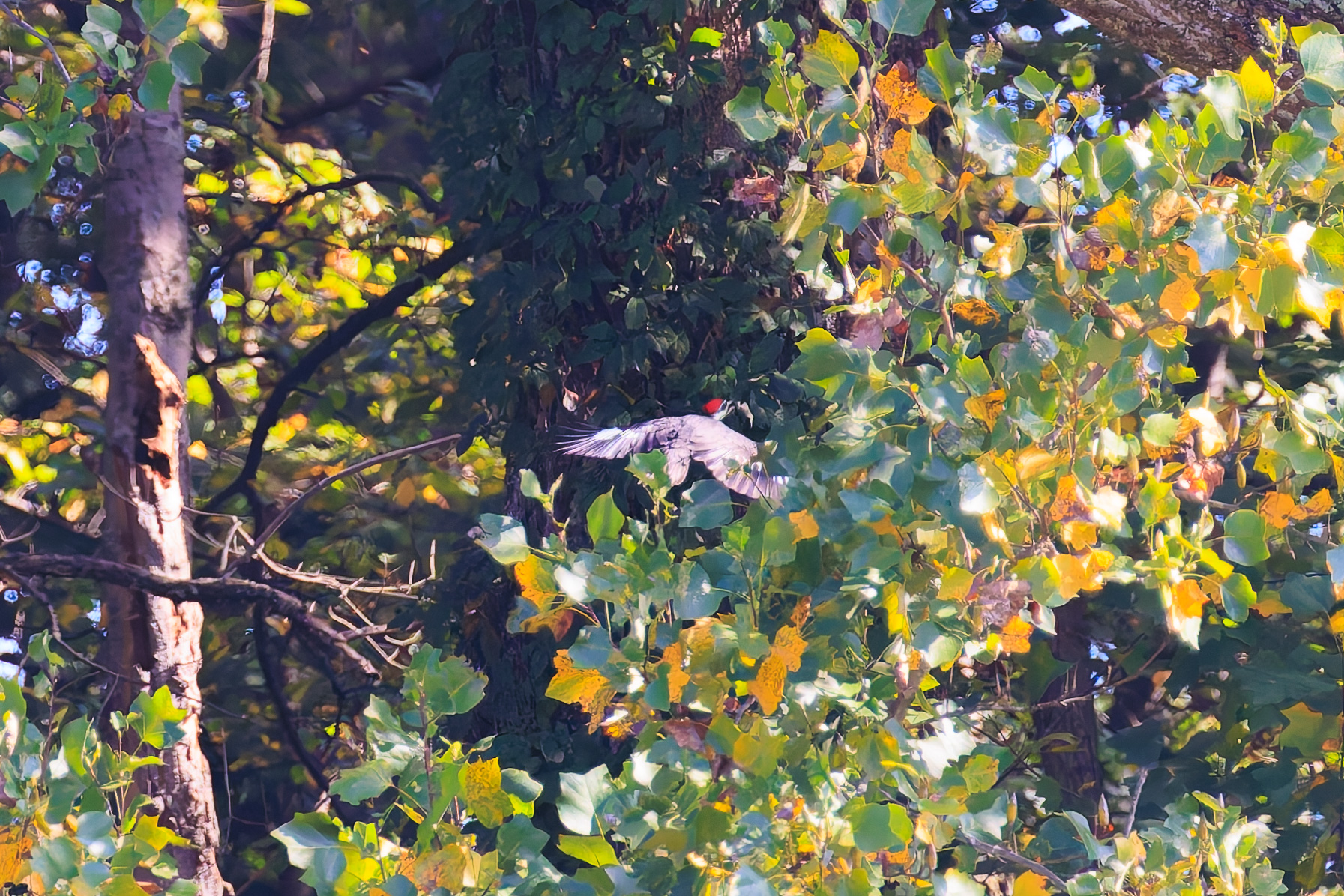
We saw what seemed like two relatively large birds flying around in the forested area nearby. We eventually managed to photograph one of them. It was a Pileated Woodpecker! These woodpeckers are much larger than all the other species we have locally. This is only the 6th time we’ve found one, with our last sighting almost exactly two years ago. And, we didn’t find just one. There were two! One seemed to be chasing the other around. The flew by multiple times going in and out of the forest.
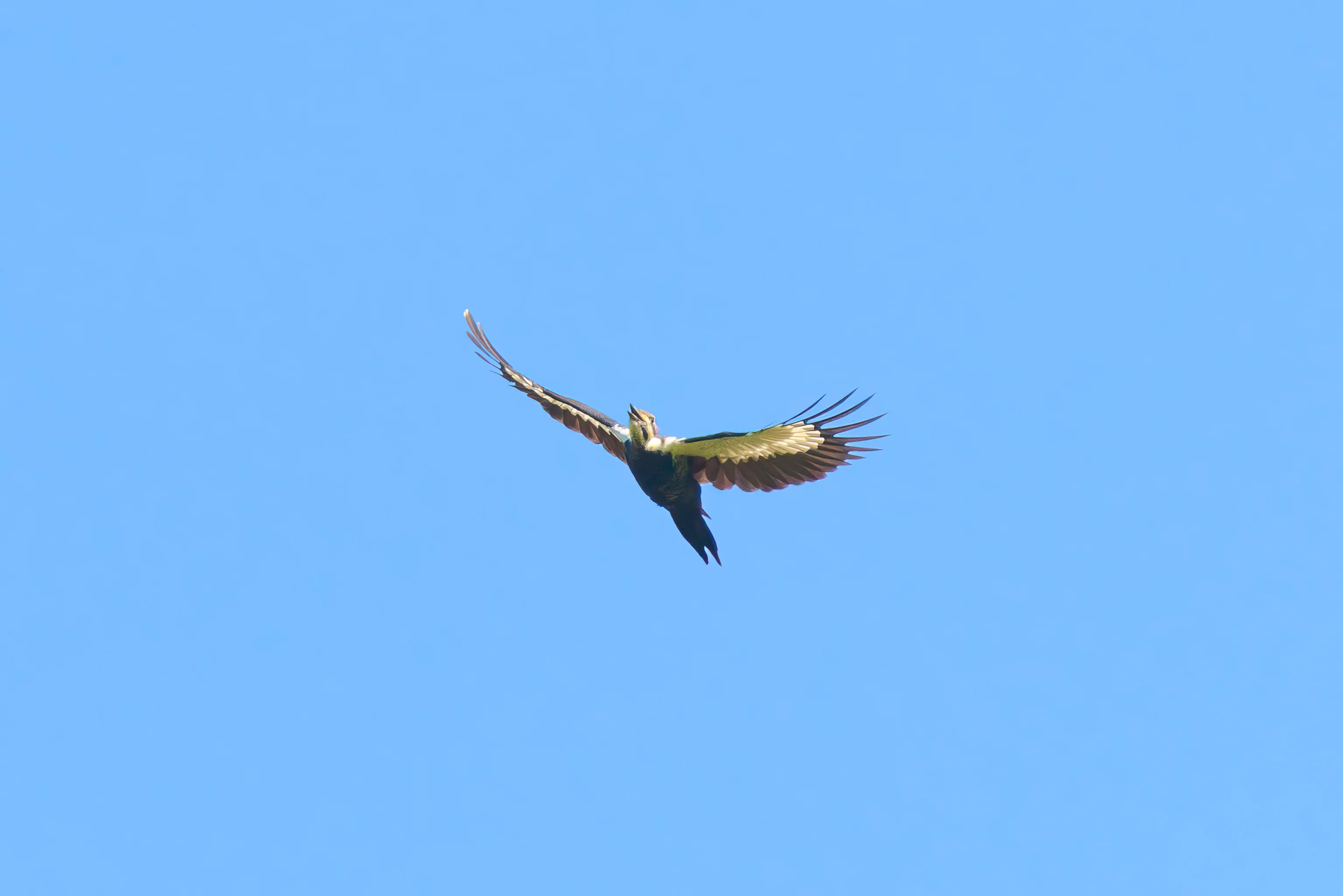
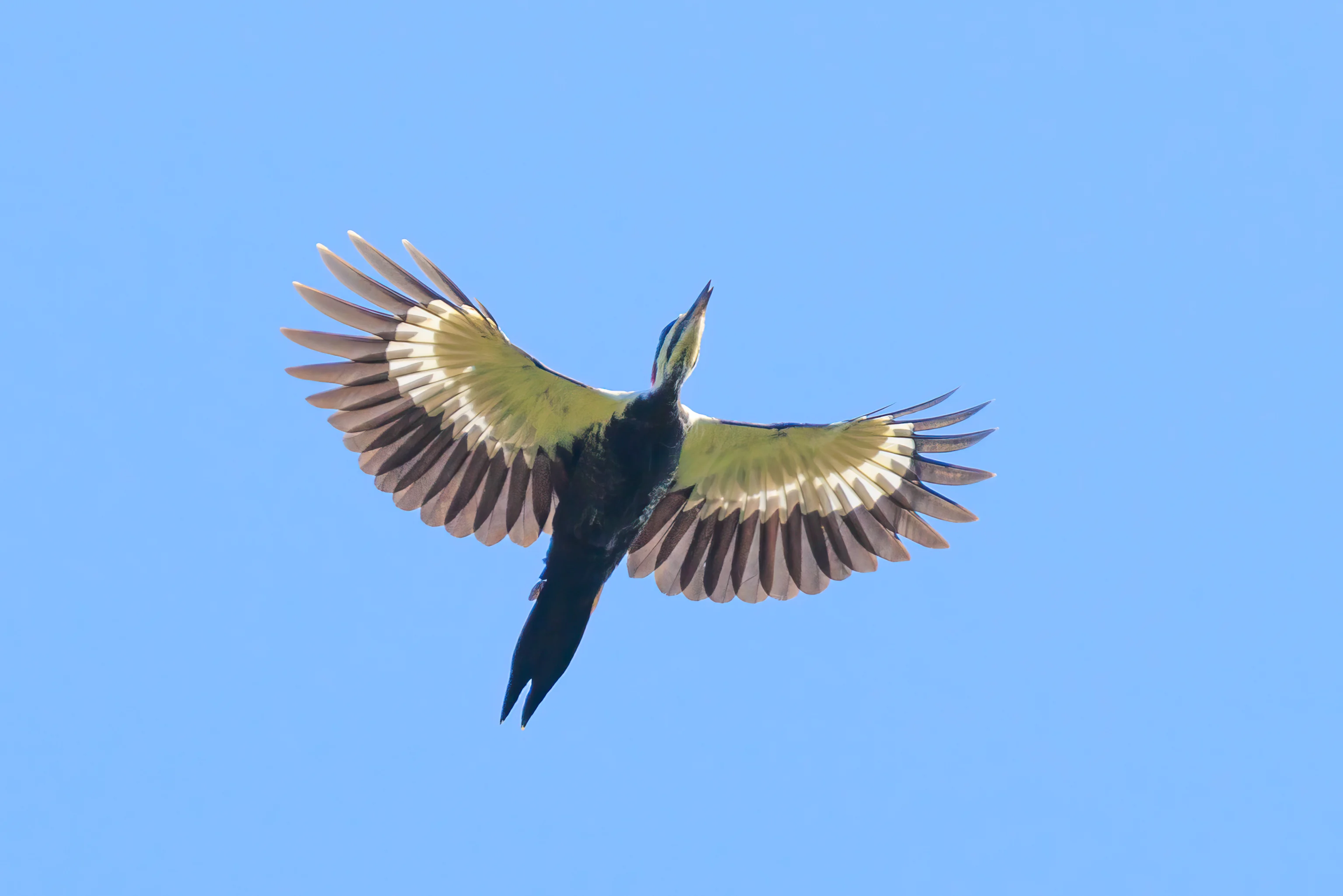
Eventually, the Pileated Woodpeckers flew away.
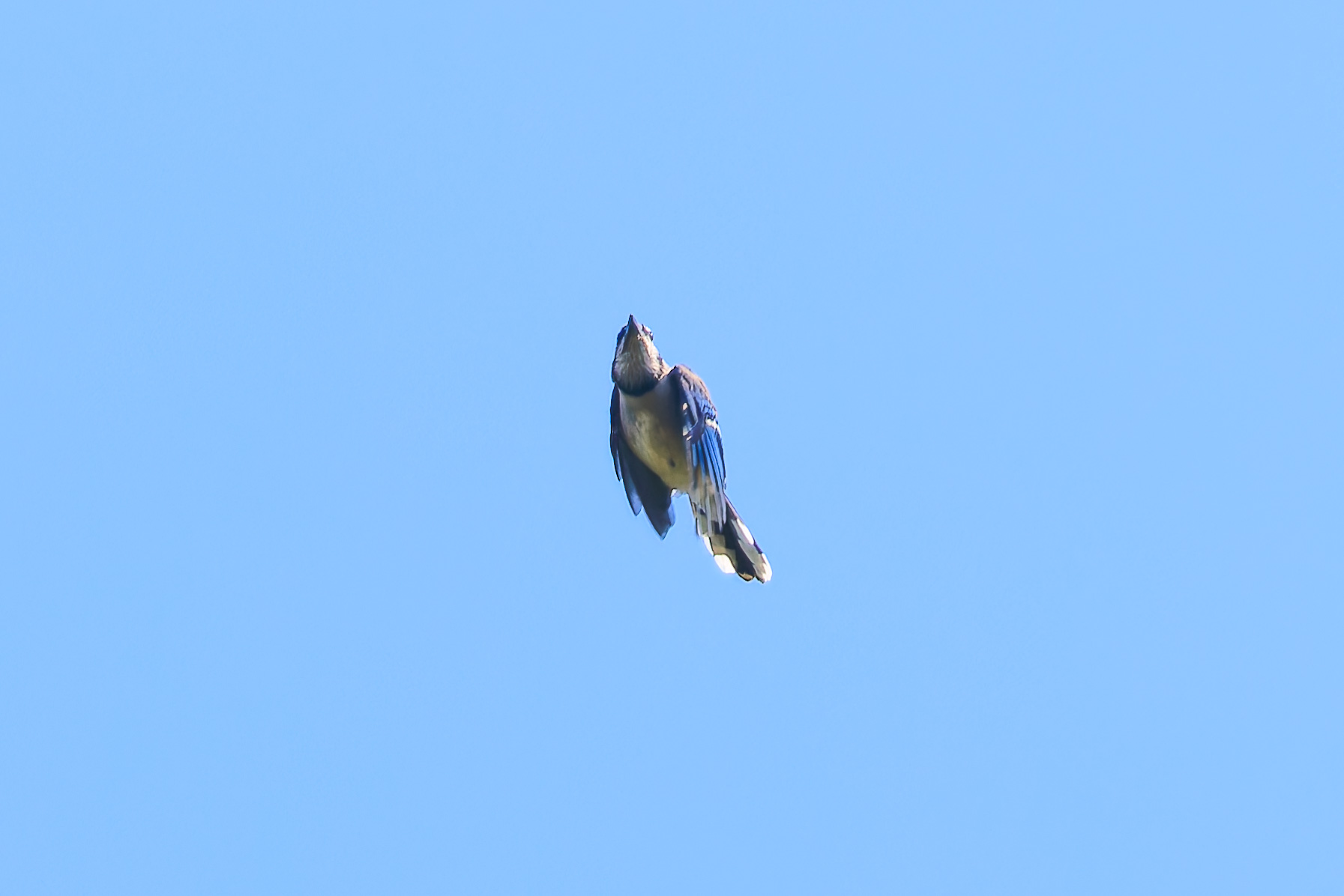
We also photographed a Blue Jay in flight. They tend to flap their wings and then hold them in by their sides as they shoot through the air.
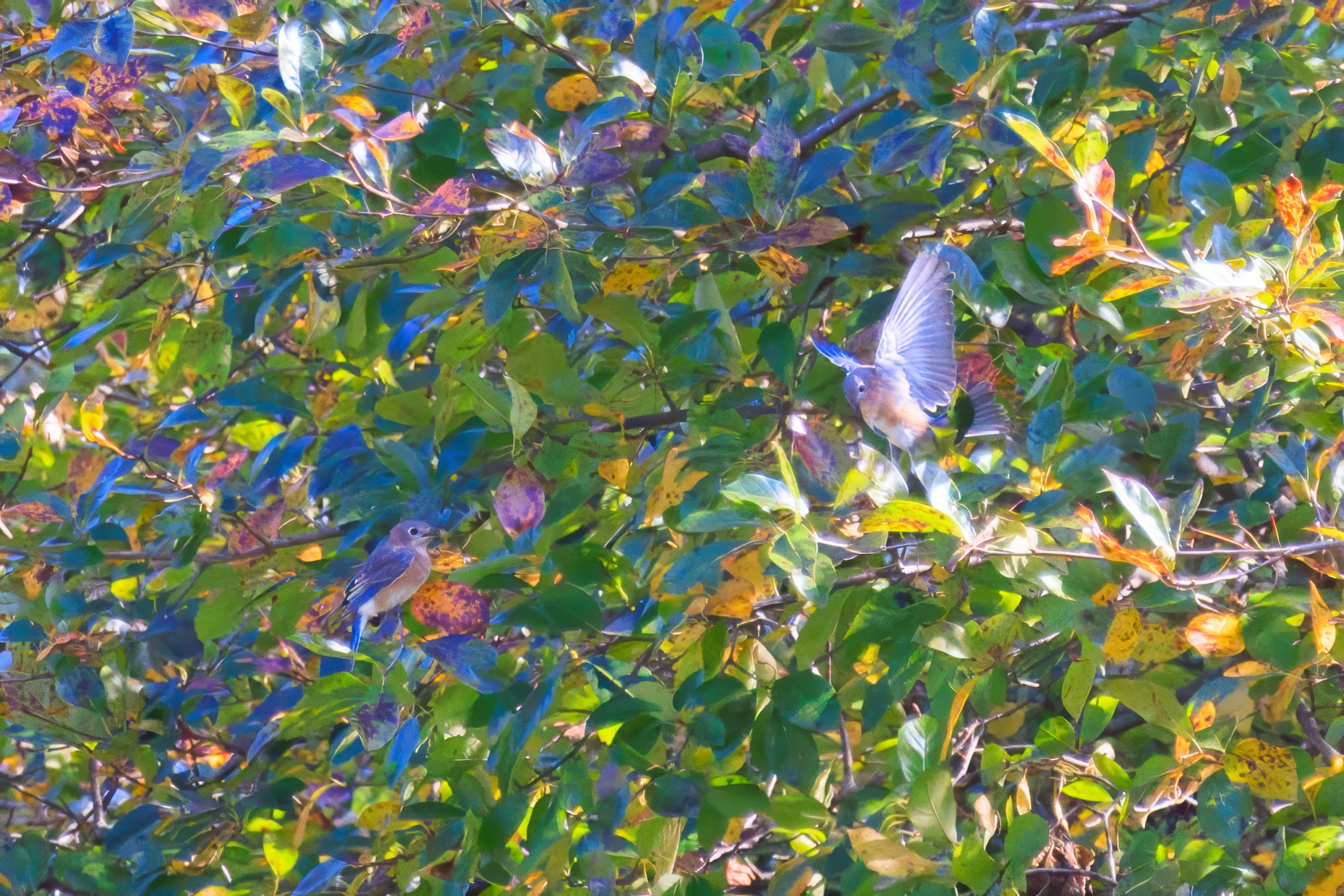
We found two Eastern Bluebirds in a tree.
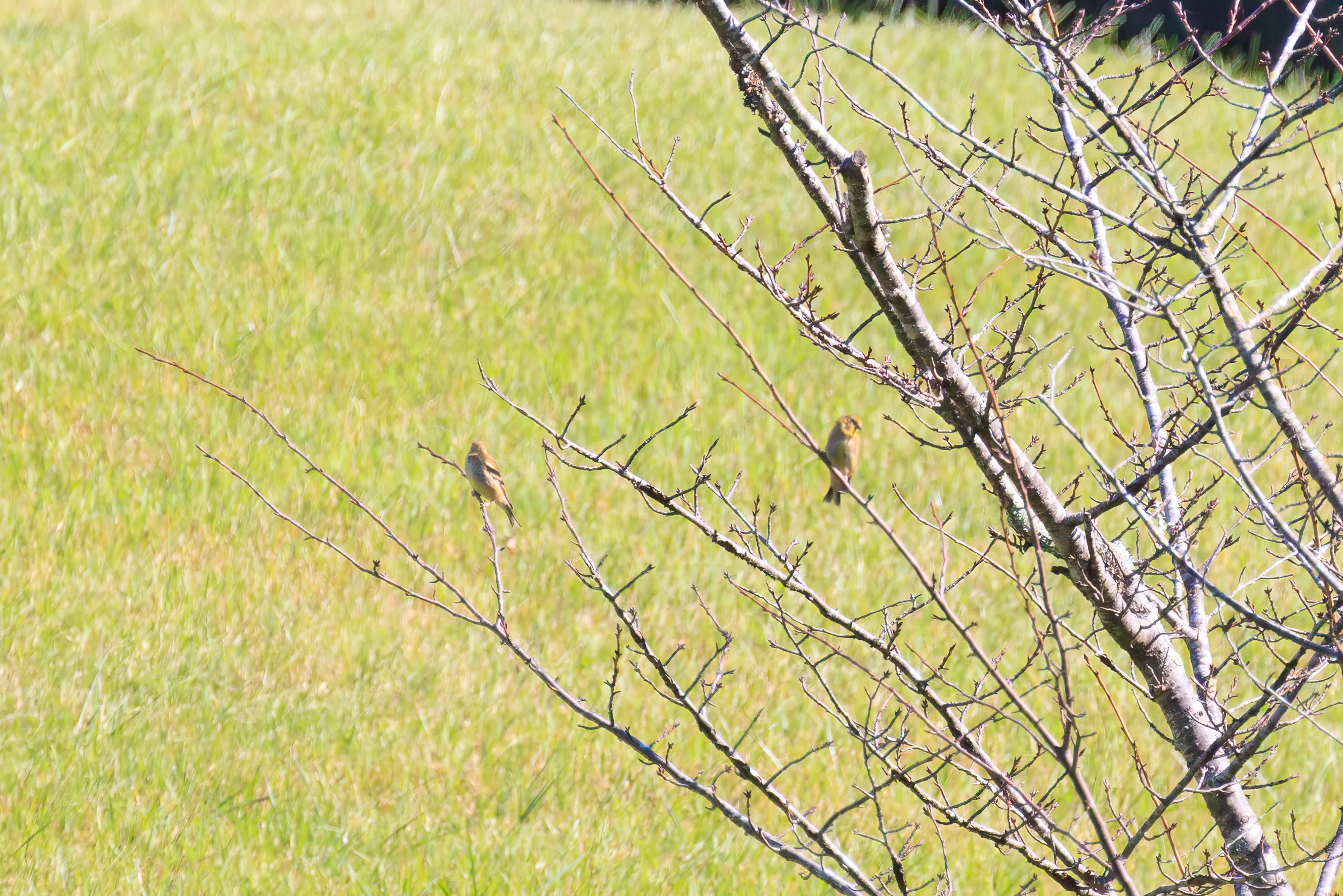
We also spotted two American Goldfinches.
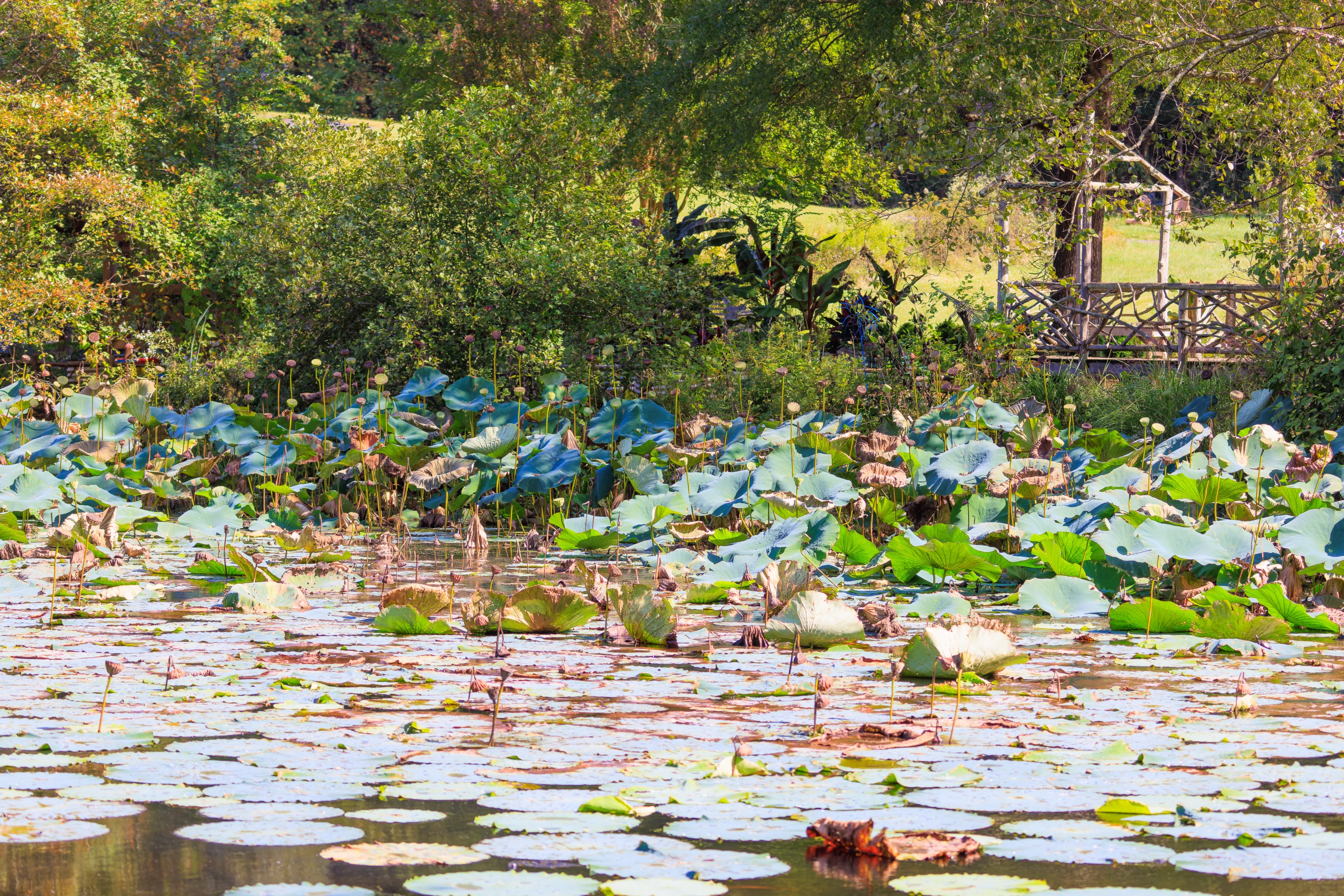
We continued walking around Lake Gardiner. We did not see a single flower remaining on the lotuses on the southeastern portion of the pond.
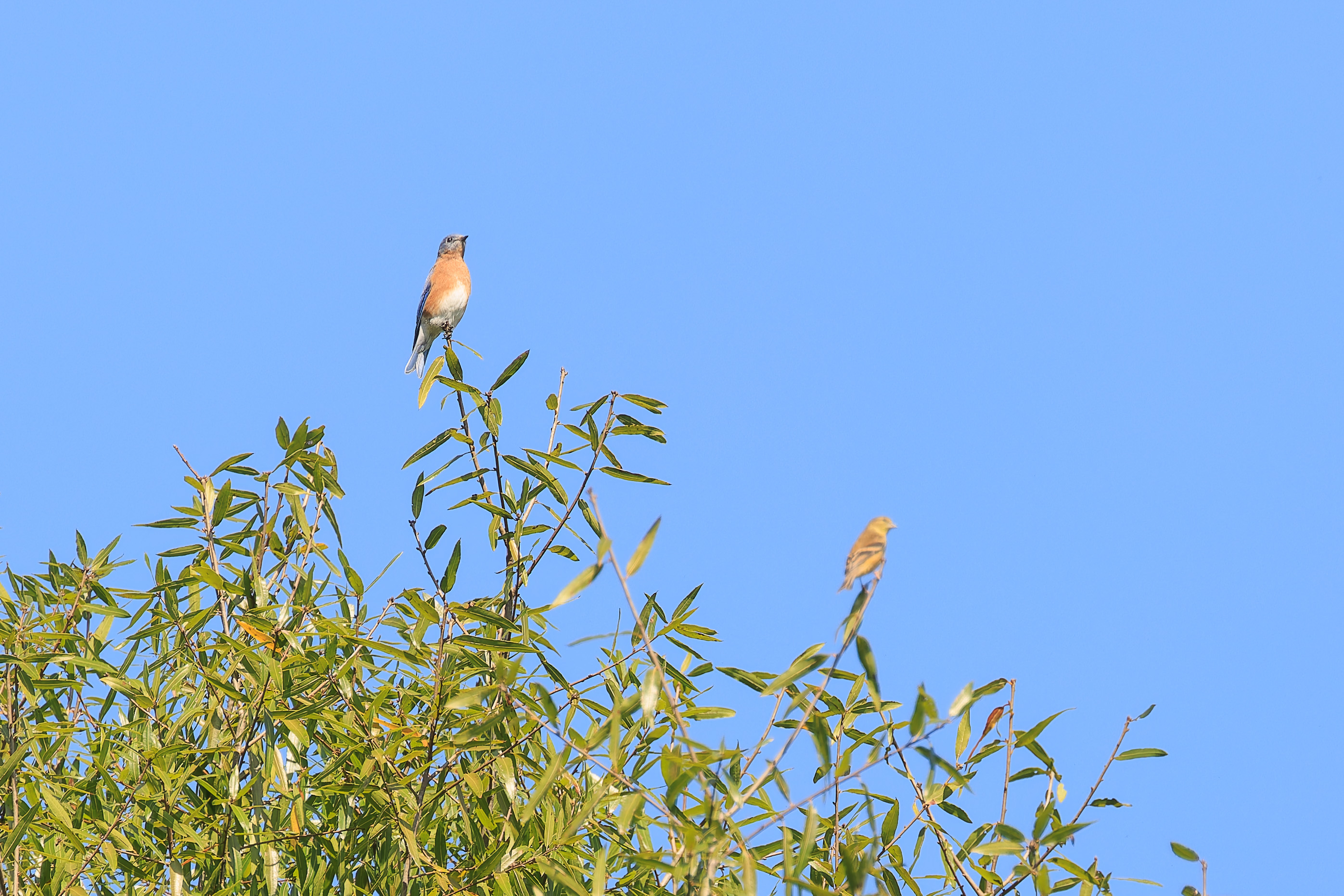
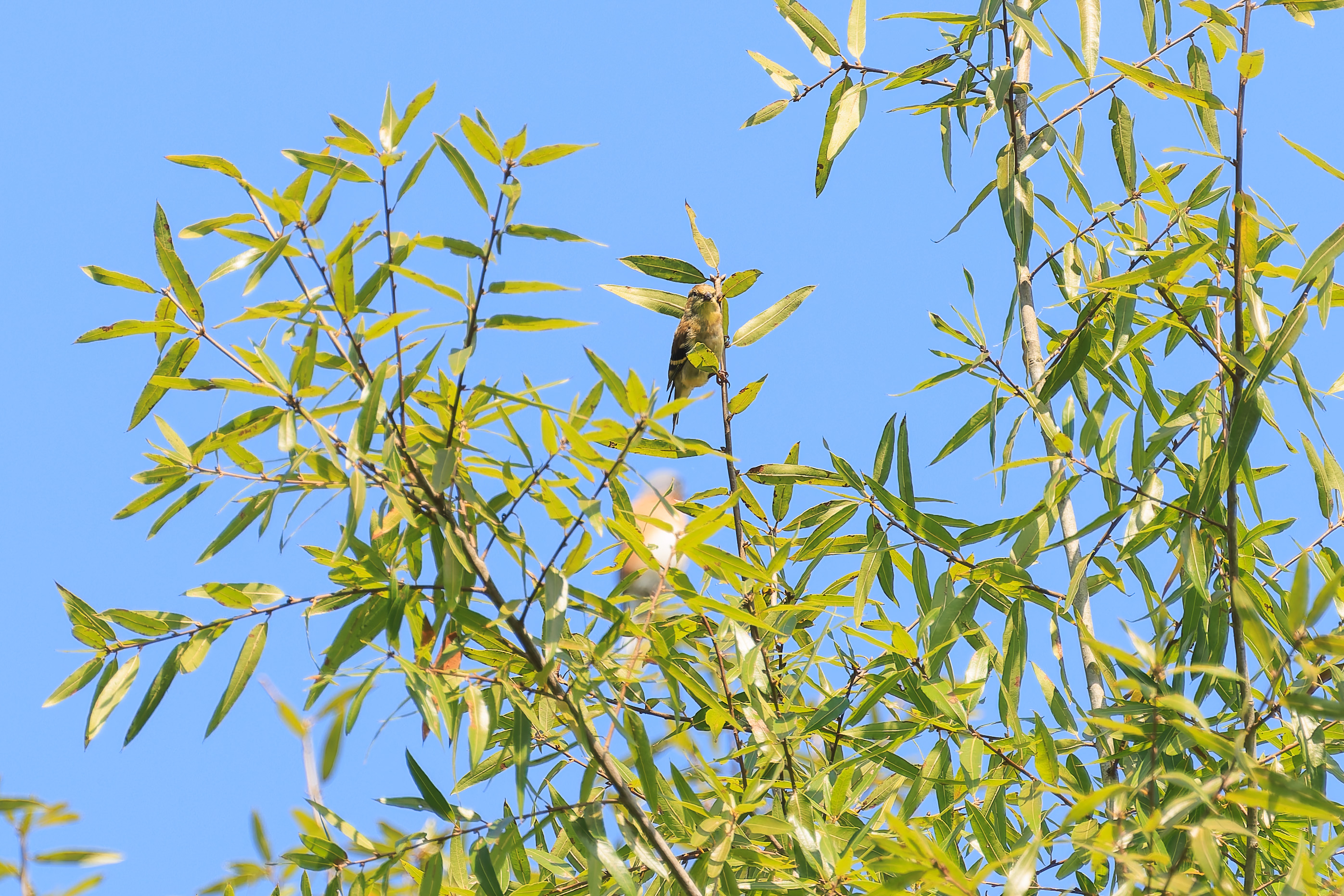
As we continued walking counter clockwise around the pond, we came across more Eastern Bluebirds and American Goldfinches.
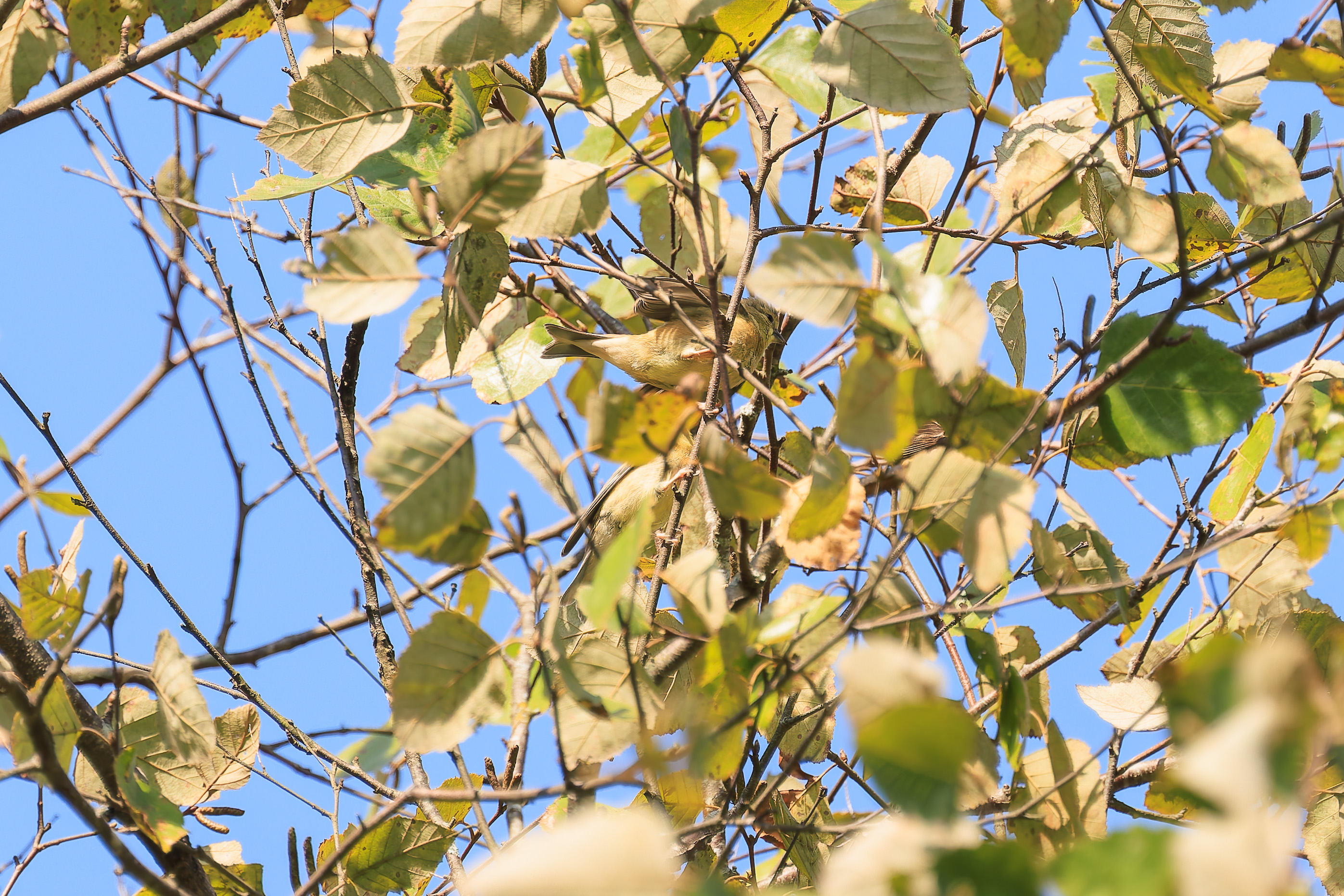
While there were definitely many birds around, it was hard to photograph them as the trees here are pretty dense with leaves. We managed to find two American Goldfinches right next to each other! One of the two is pretty easy to find, the other blends in pretty well with the leaves.
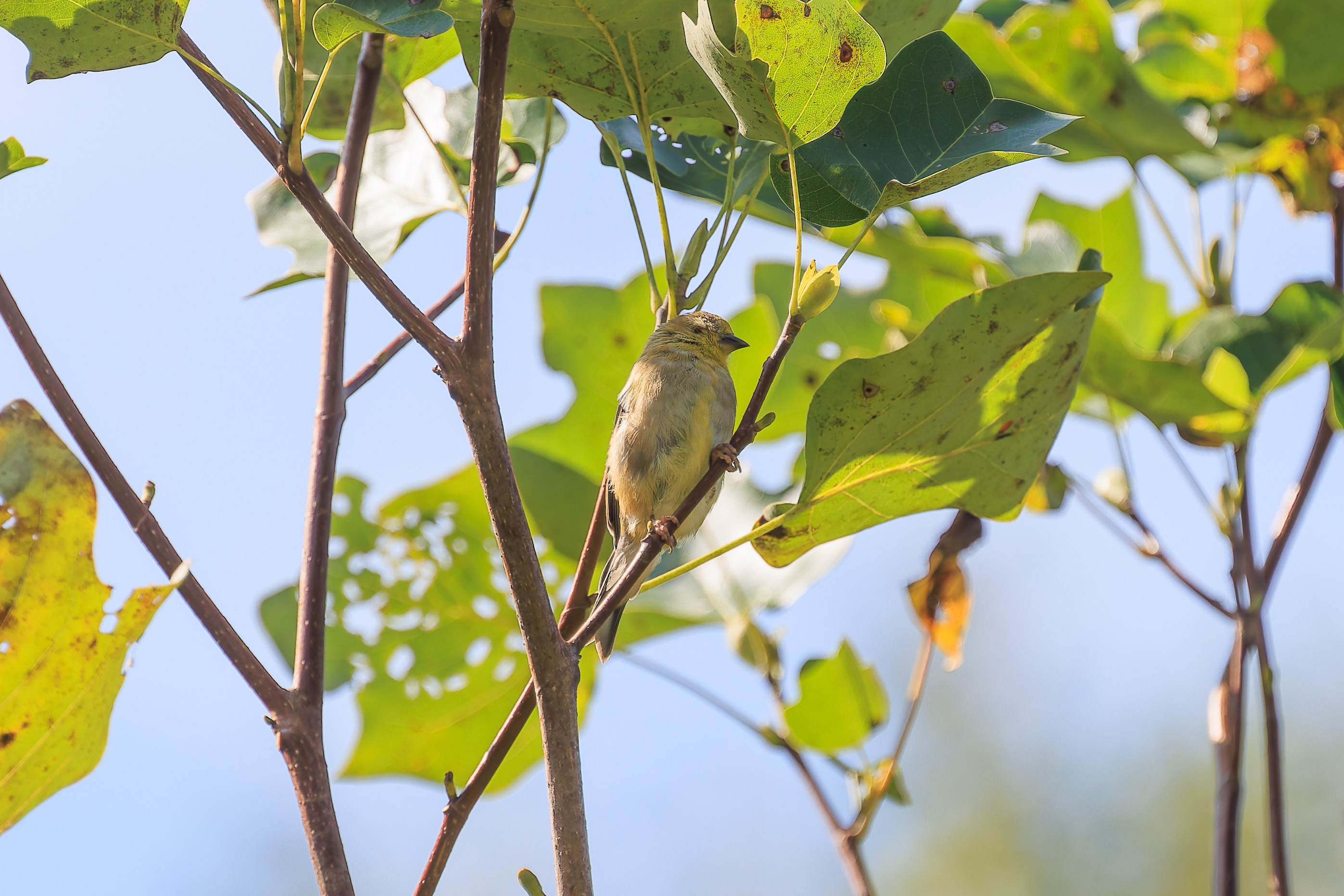
Here’s another American Goldfinch.
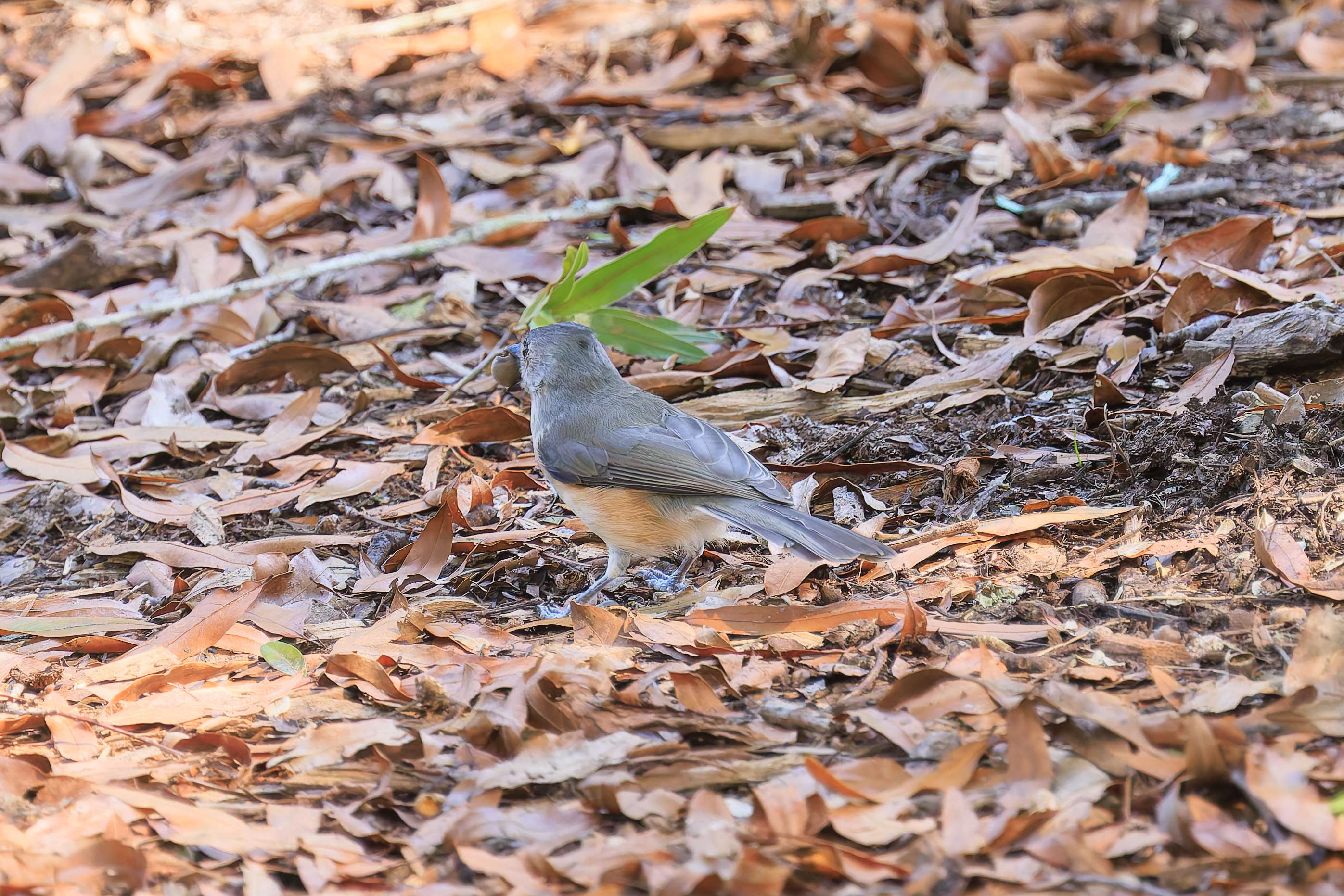
We eventually found a Tufted Titmouse! It seemed to be holding some sort of seed. The bird’s positioning here makes it look like it has a huge green crest!
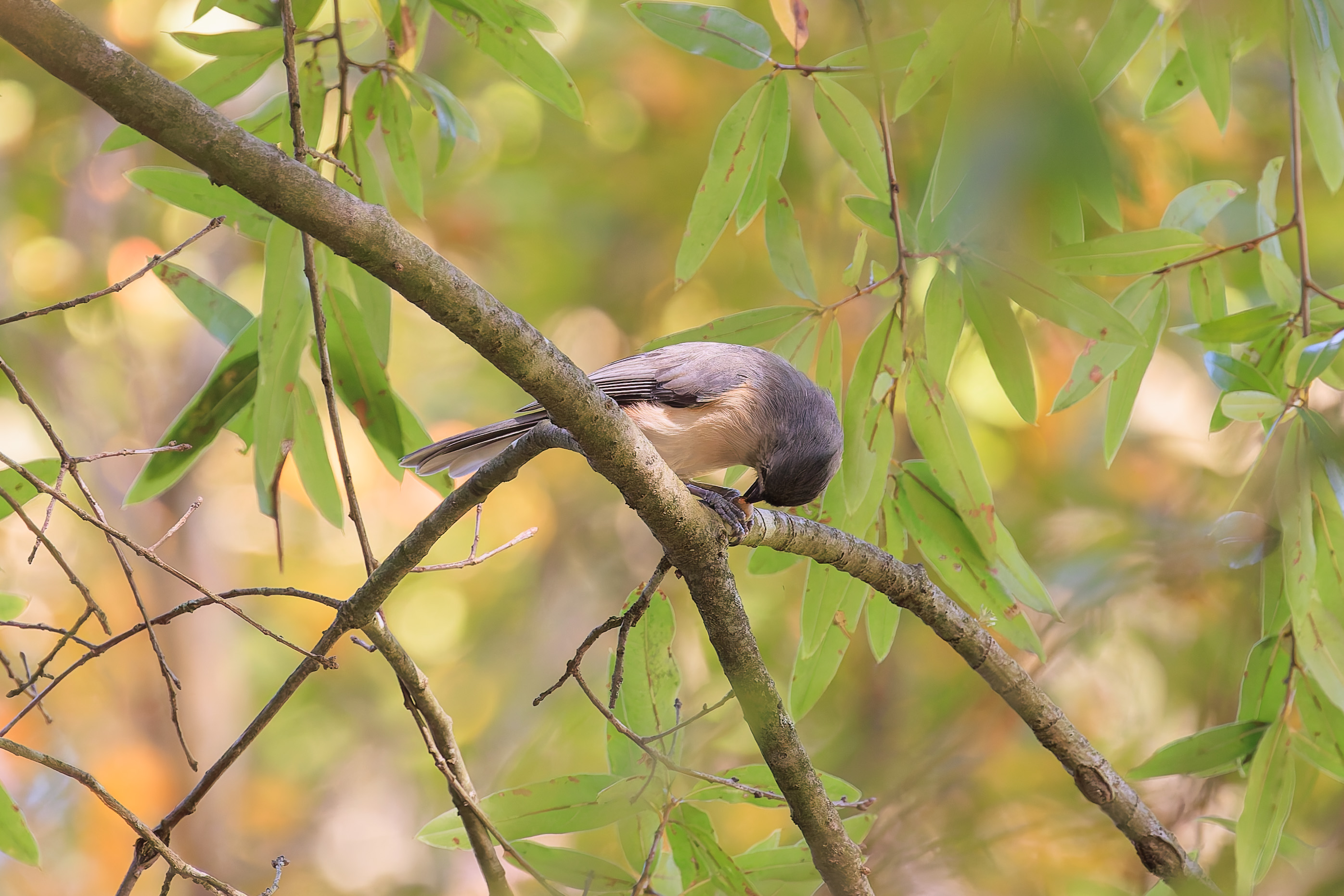

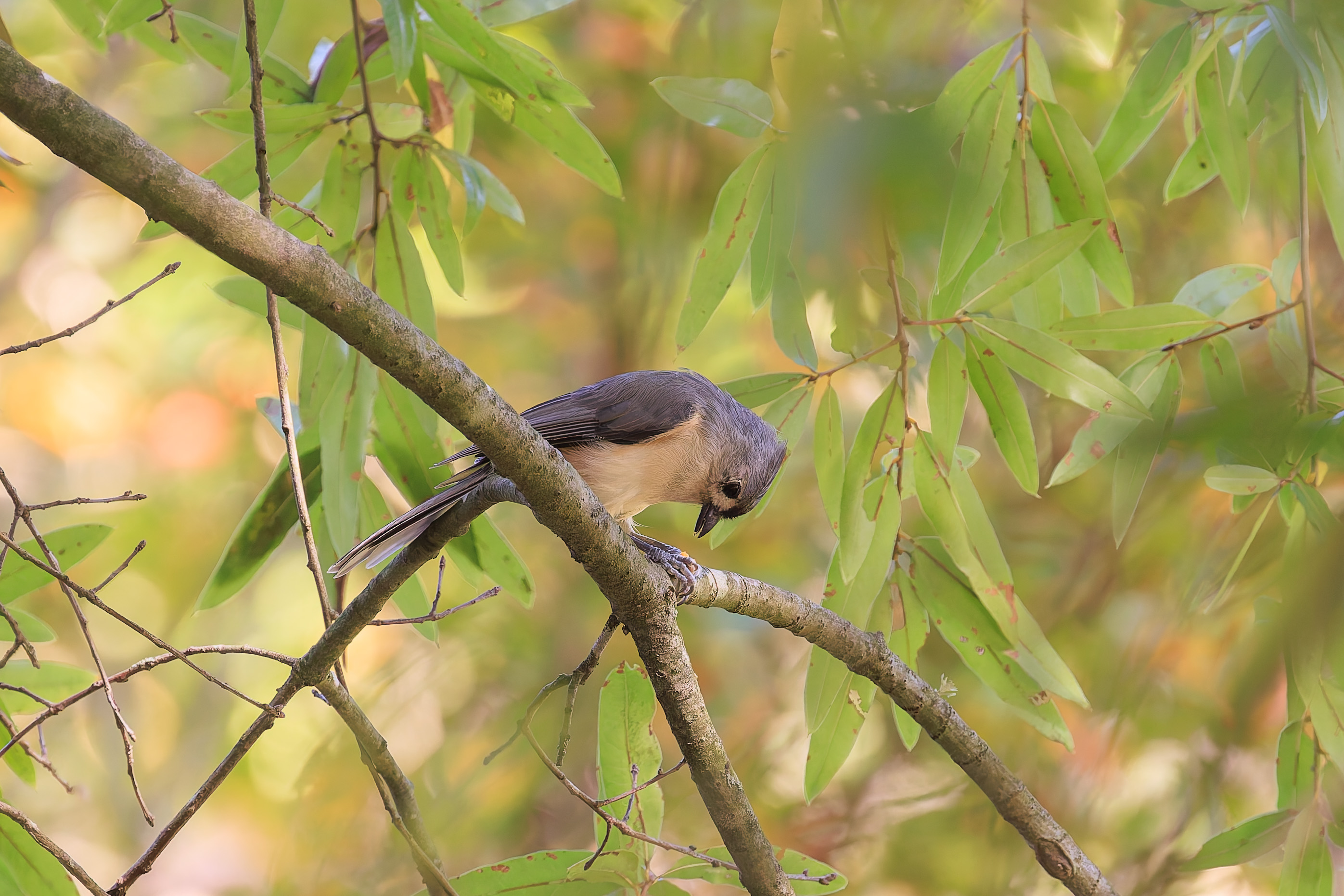
The Tufted Titmouse flew up to a branch with its seed and started to crack it open to eat it.
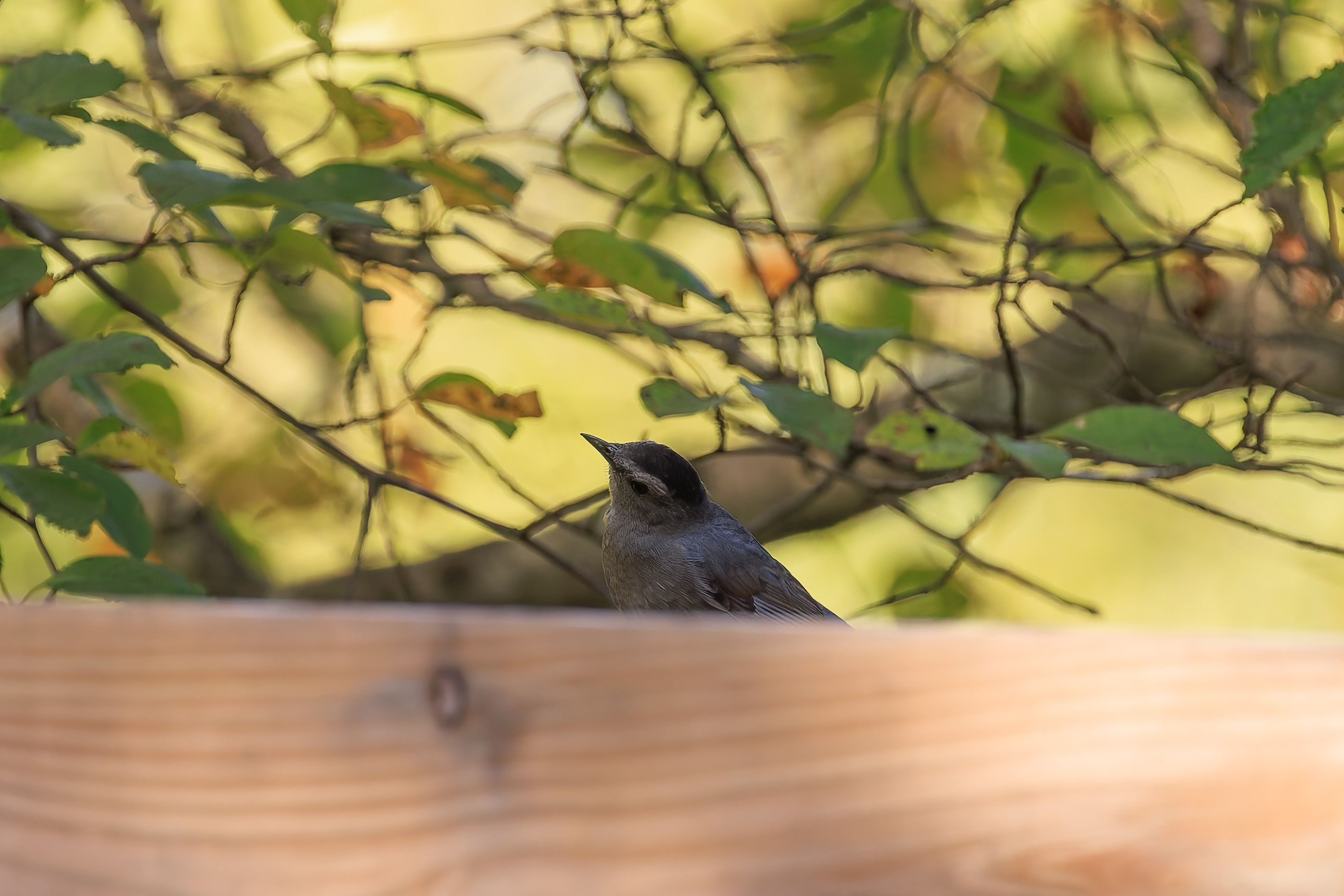
Meow! We also found a Gray Catbird. Most of them have migrated away by now, though a few seem to remain all year.
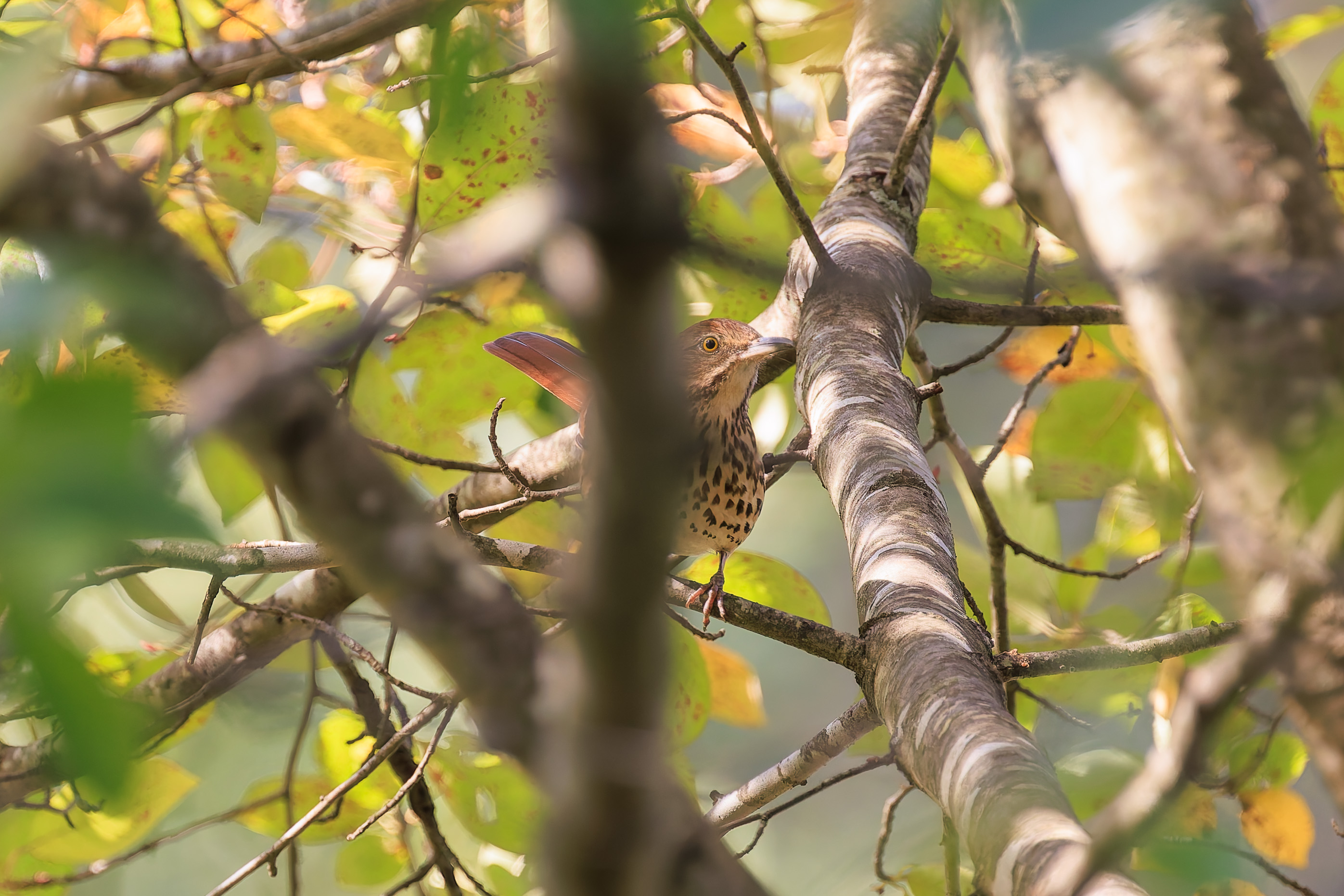
We were a bit surprised to find a Brown Thrasher! Although we’ve seen this species on 26 different days now, all but 3 of those sightings were in a single location in 2020, making us think we were likely seeing the same individuals over and over that year.
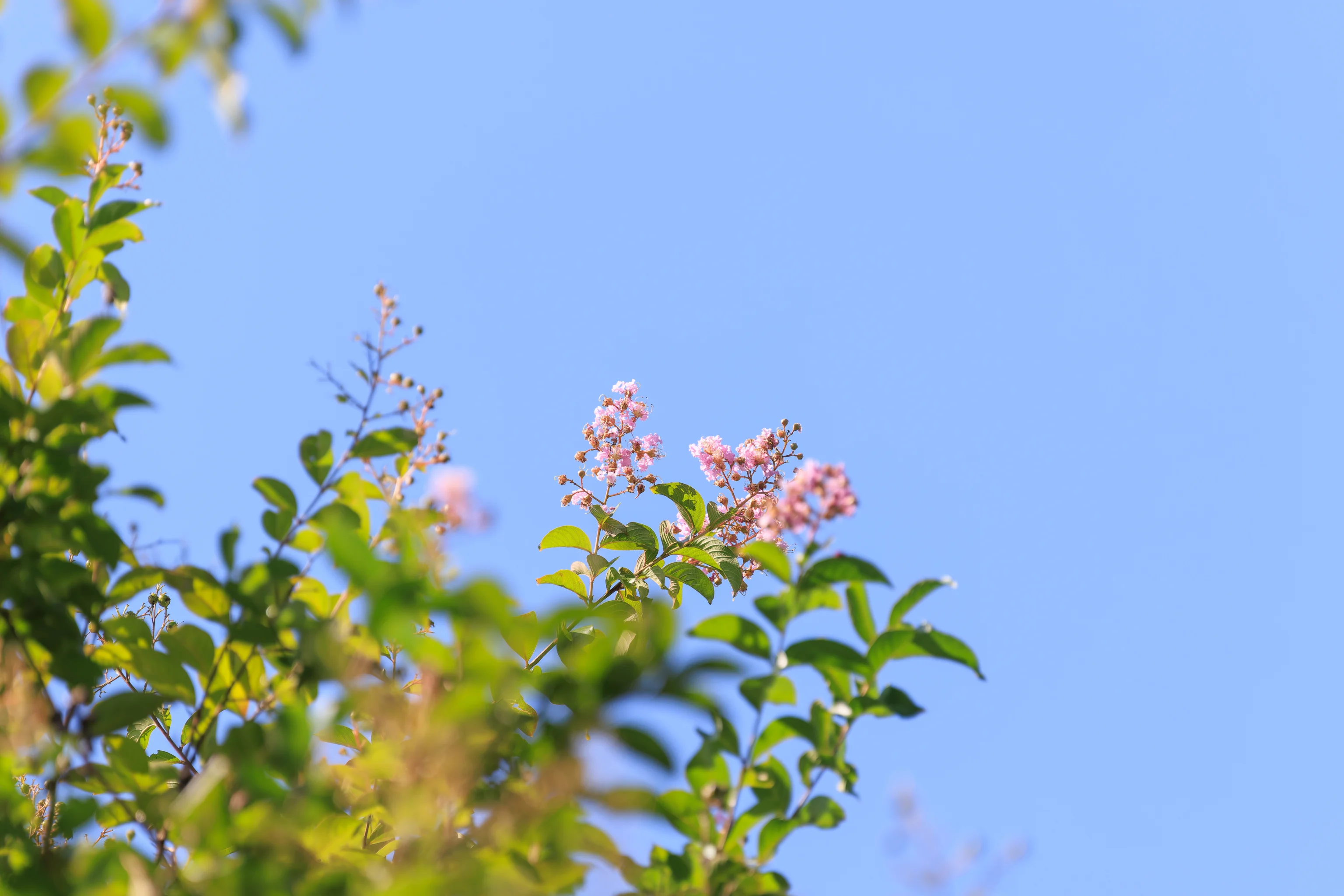
We’ve probably photographed this flowering tree before.
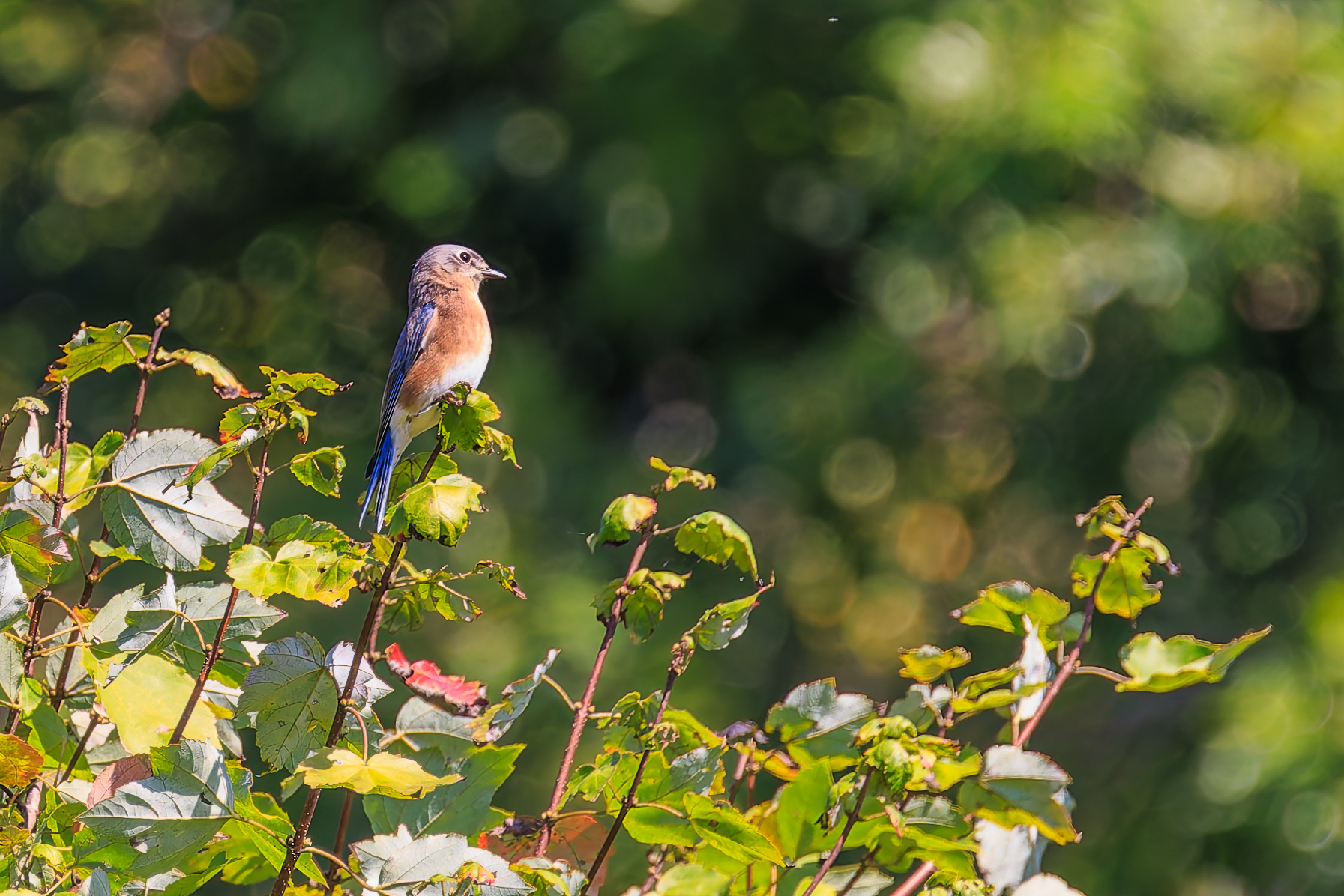
We photographed this Eastern Bluebird as we started to walk back to the entrance.
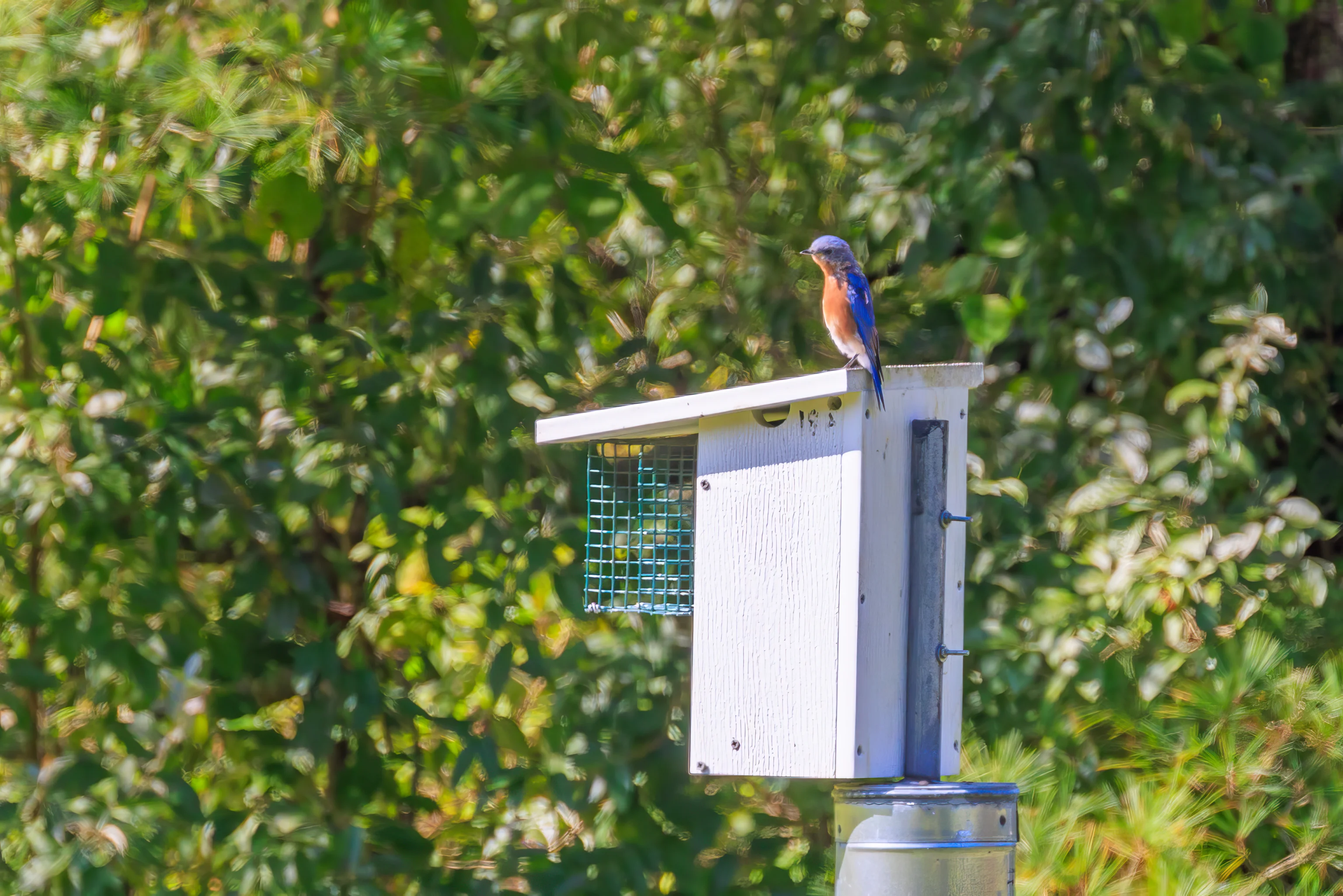
We also found one on a nest box. We only managed to photograph a few of the Eastern Bluebirds that we saw today. They seemed to be everywhere!
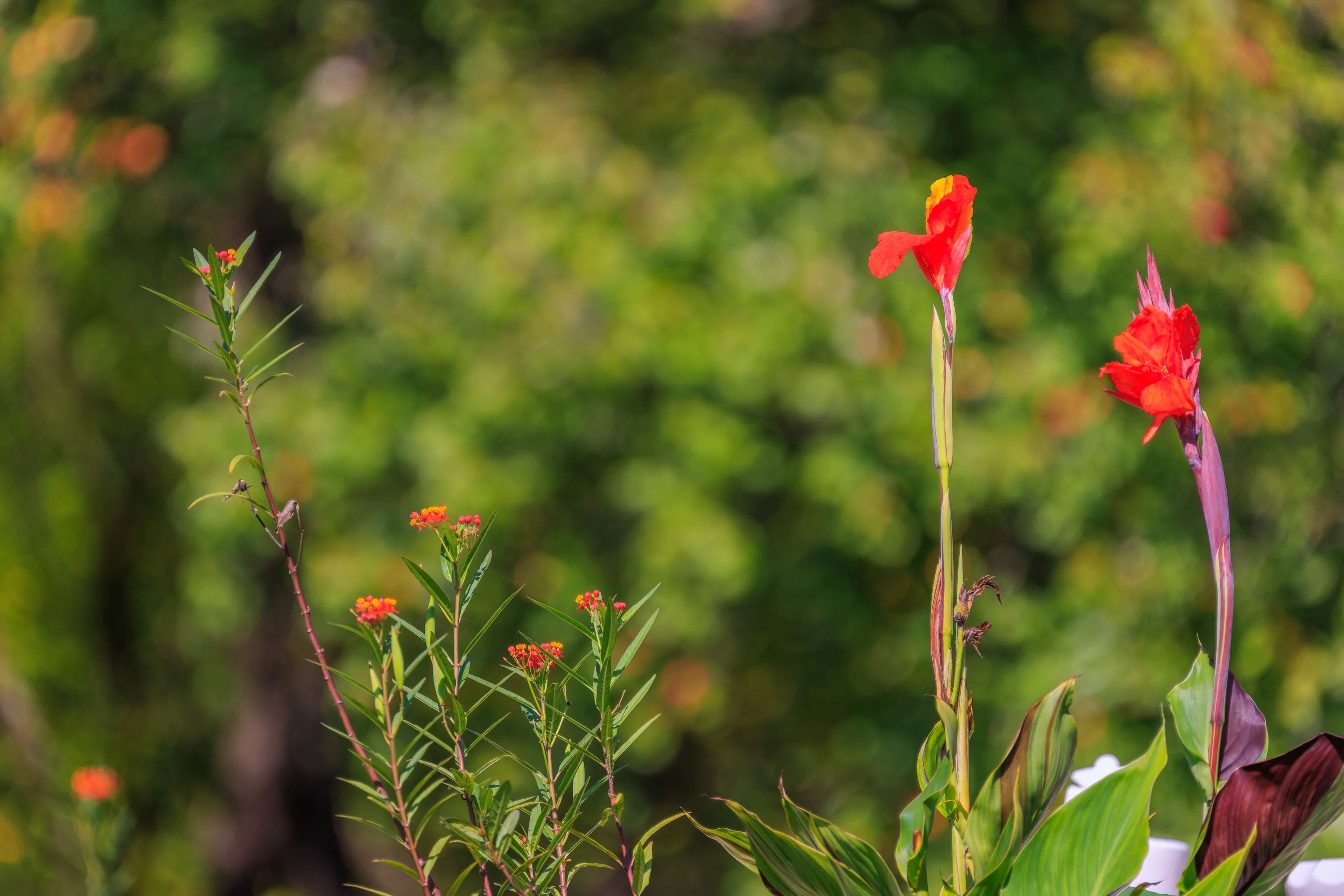
These flowers were right by the entrance. While the smaller flowers seem to be the same milkweed species that we saw earlier in the morning, the larger flowers are obviously different. They seem like they could be part of the Canna family, also known as Canna Lily. Or they could be something else!
Red Rock Wilderness Overlook Regional Park
After lunch, we decided to visit the outlets in Leesburg. But on the way, we stopped by Red Rock Wilderness Overlook Regional Park. This park is part of NOVA Parks, a multi-county and city organization which includes the Meadowlark Botanical Gardens.
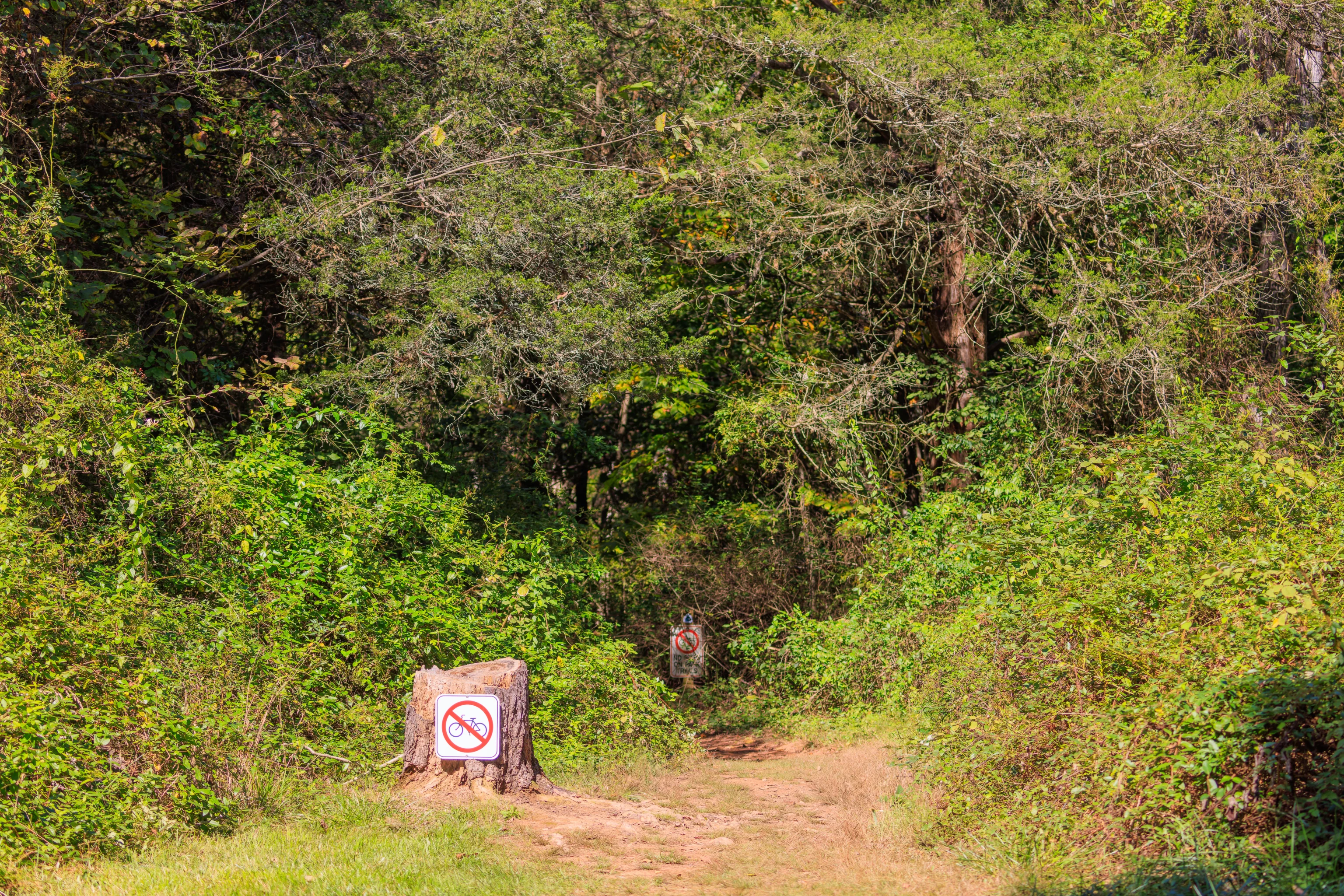
As this was our first visit, we weren’t sure how busy it was. The parking lot looked pretty tiny on Google Maps. In reality, it was relatively large and mostly empty. The park is located by the Potomac River. There are two linked loop trails as well as a riverside trail.
We started on the only visible trail at the northeastern corner of the parking lot.
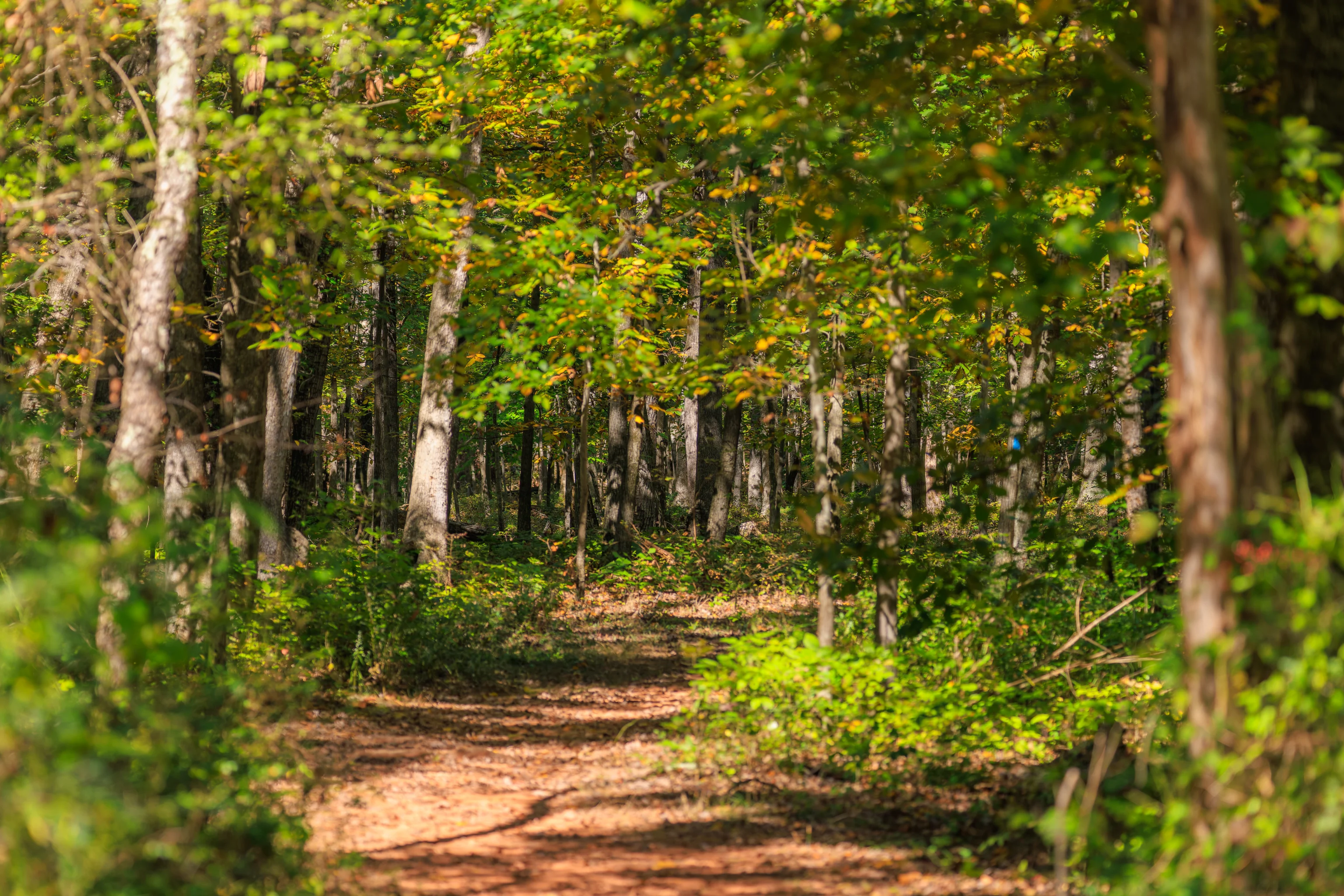
The area was wooded with dense vegetation but the trail was clear and appeared well maintained.
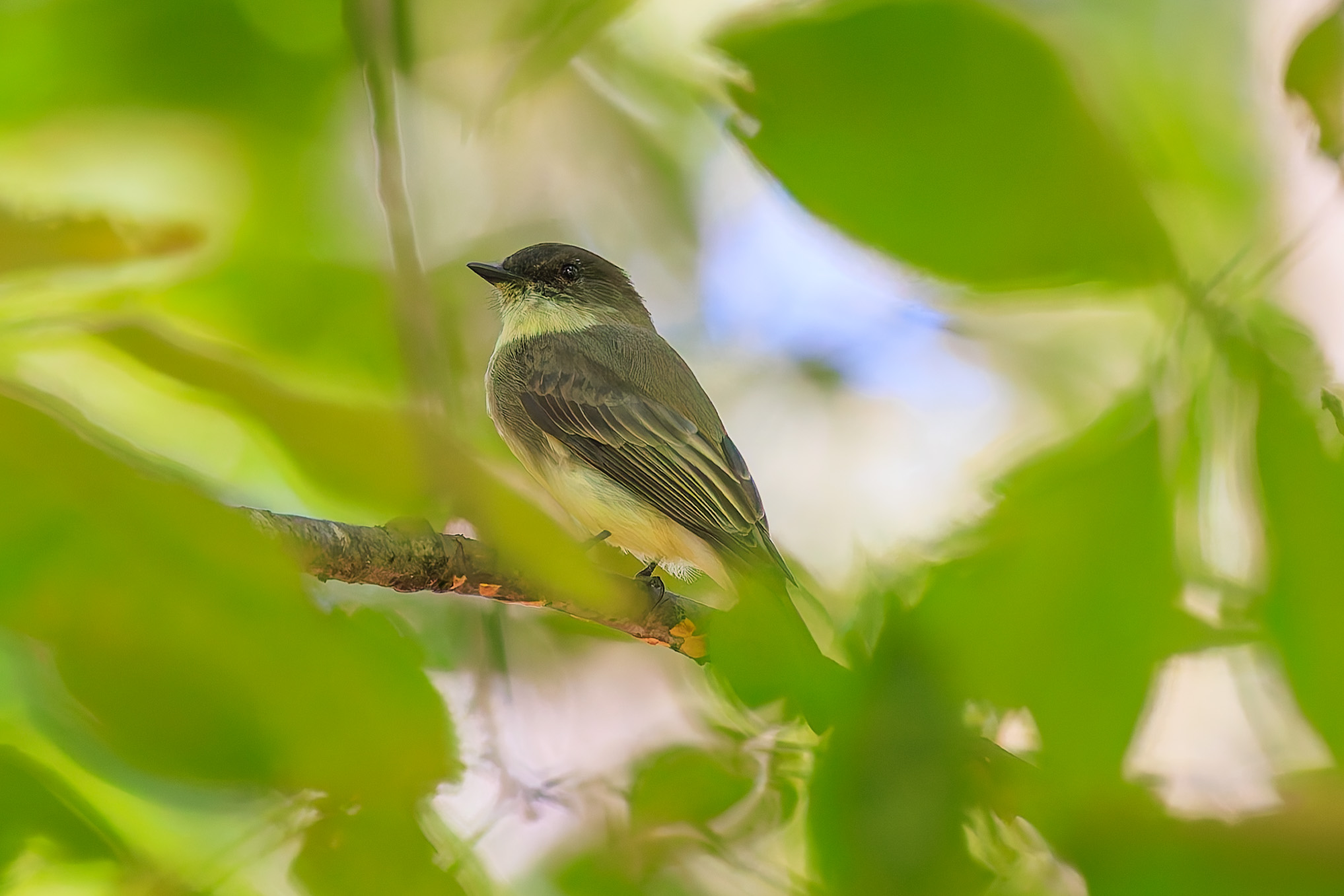
We’ve always found it hard to spot birds in wooded locations. We did find this Eastern Phoebe after a little bit of walking though!
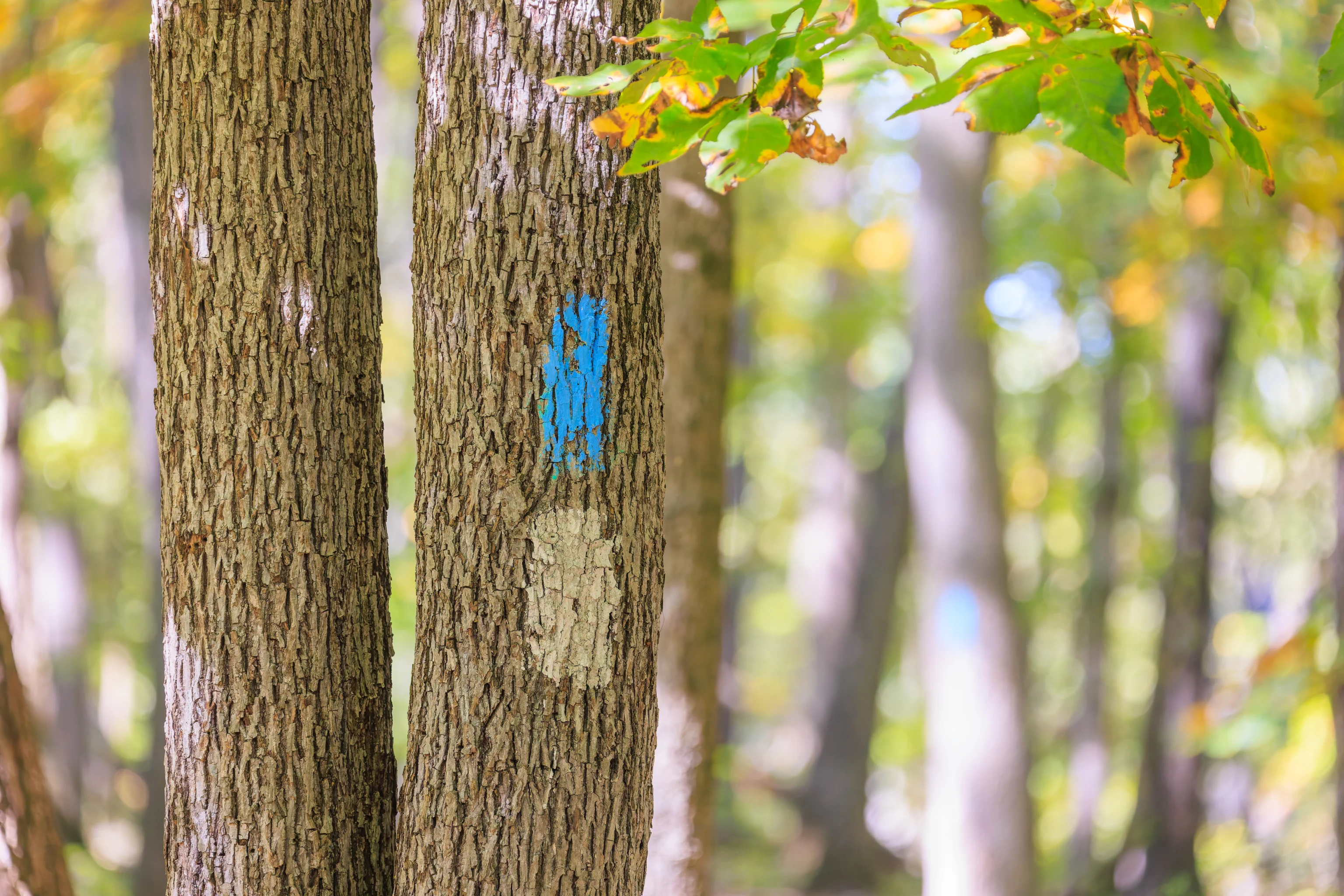
The trails are marked, though we didn’t see a map sign on the way in. The park is pretty small so we weren’t worried about getting lost.
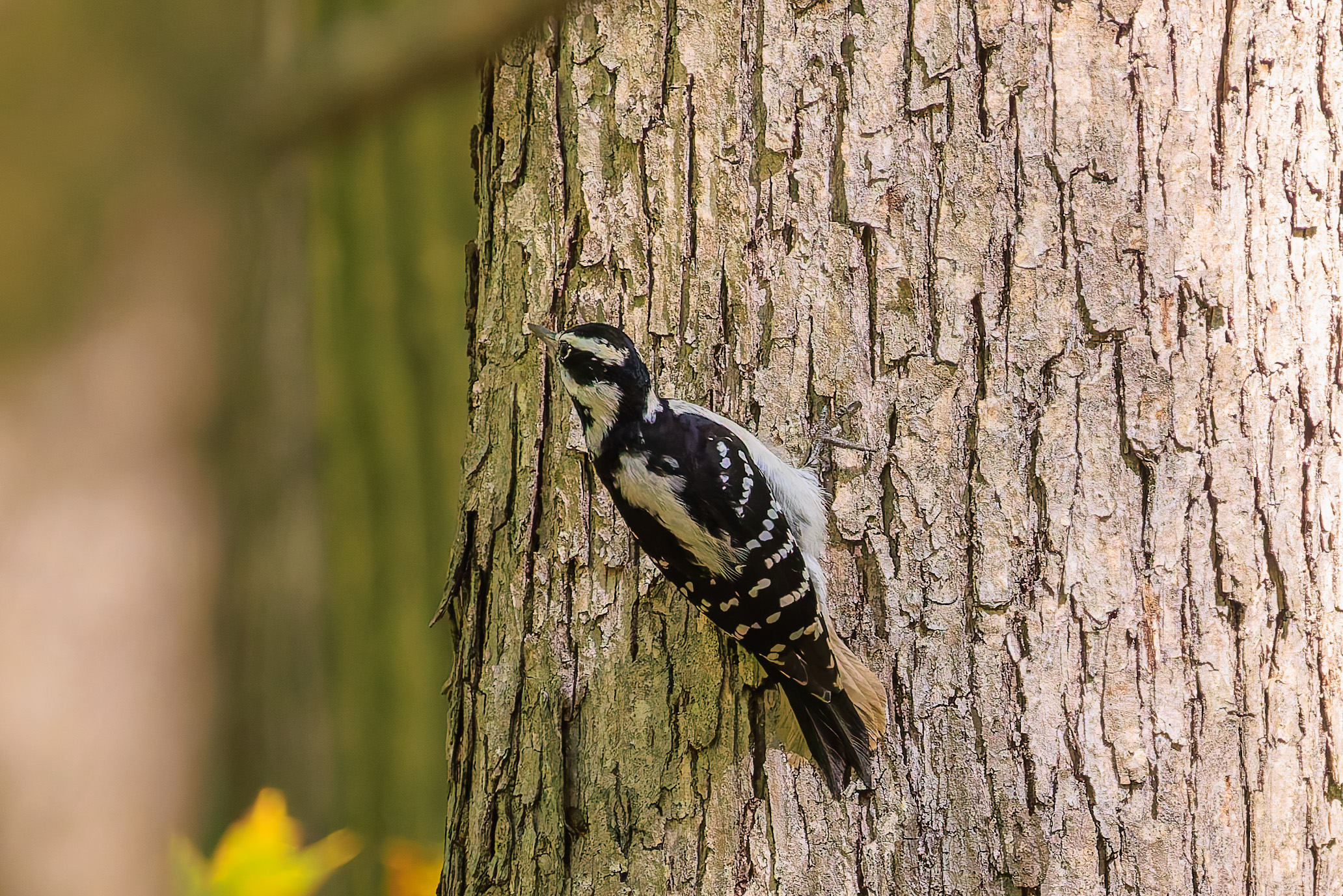
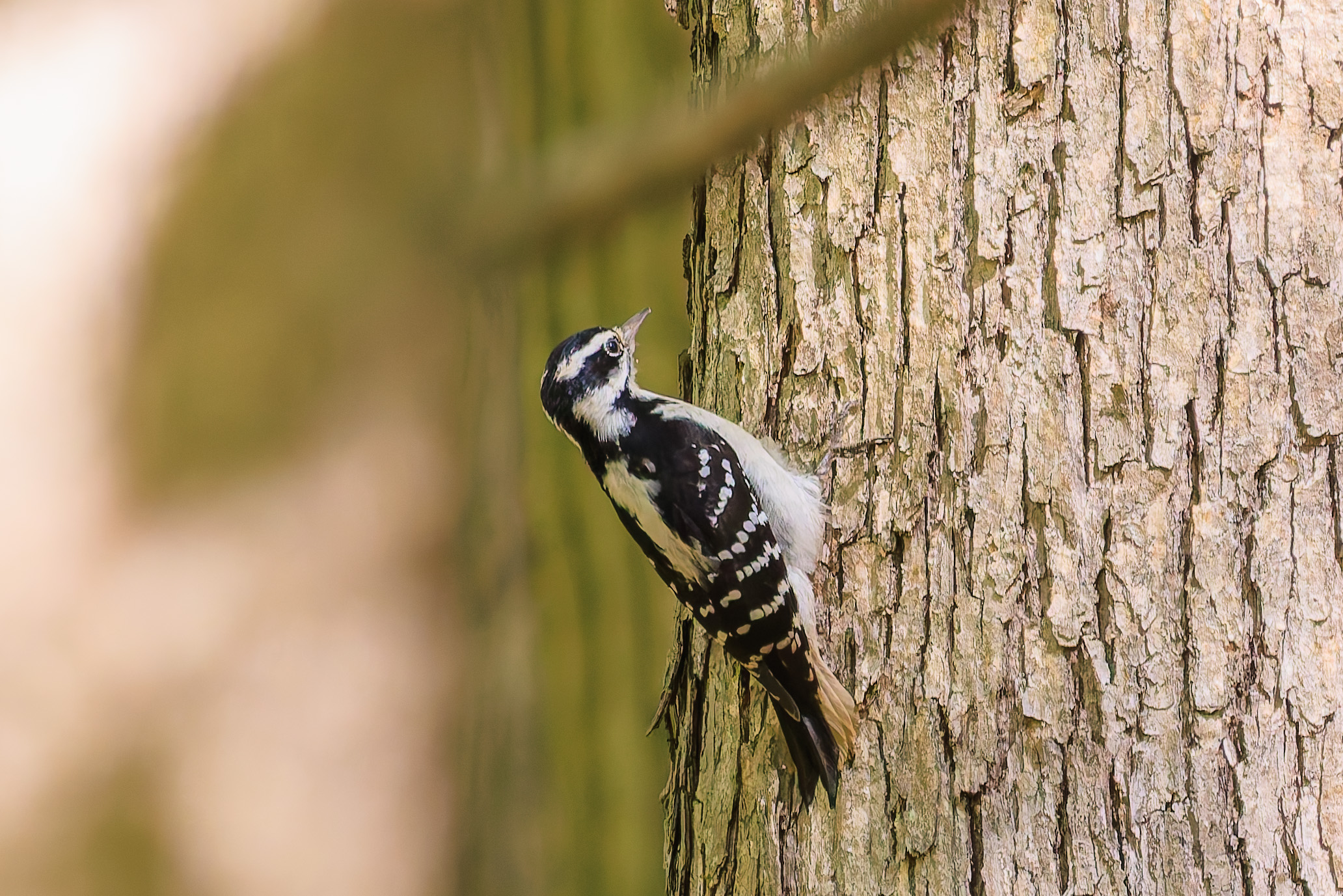
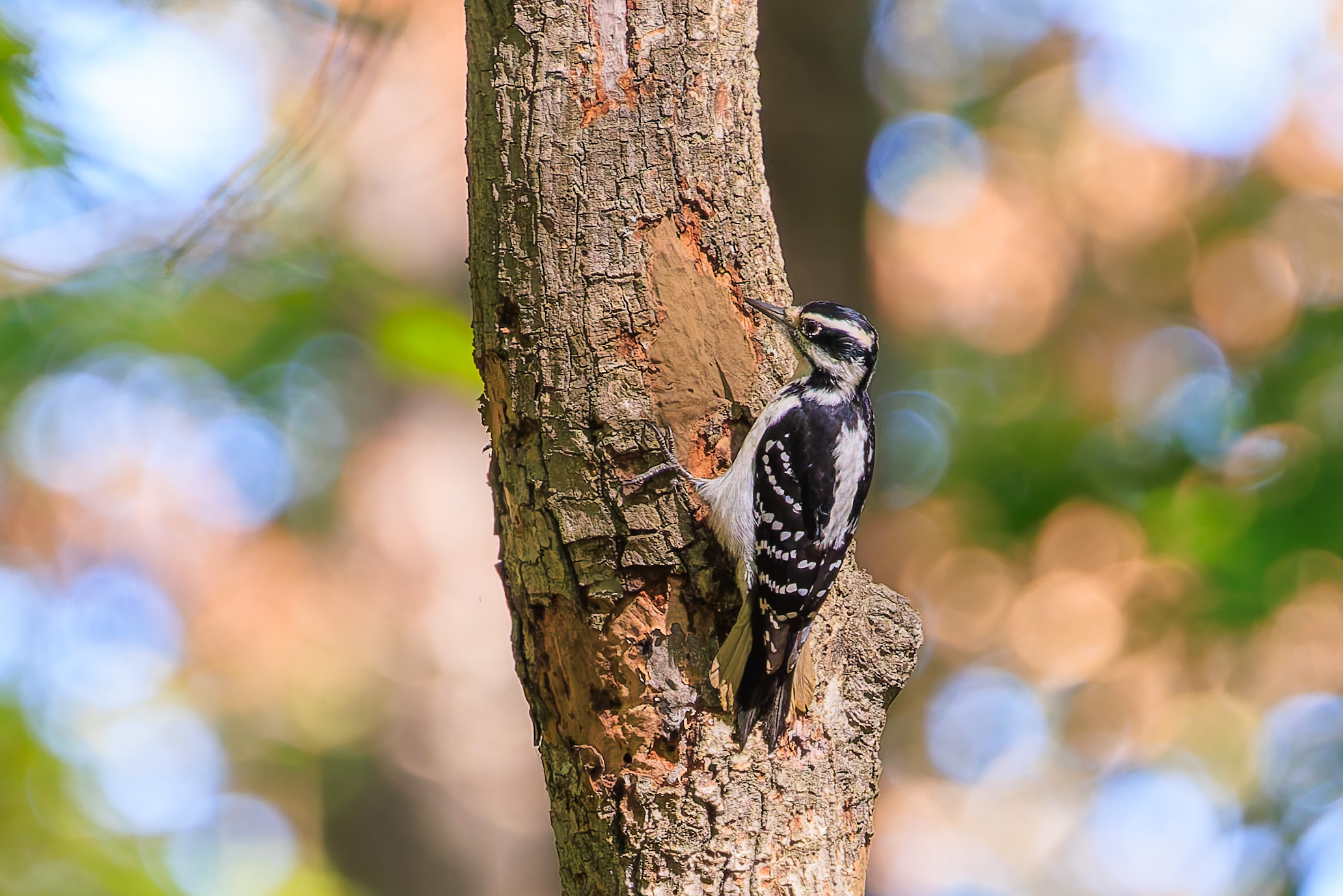
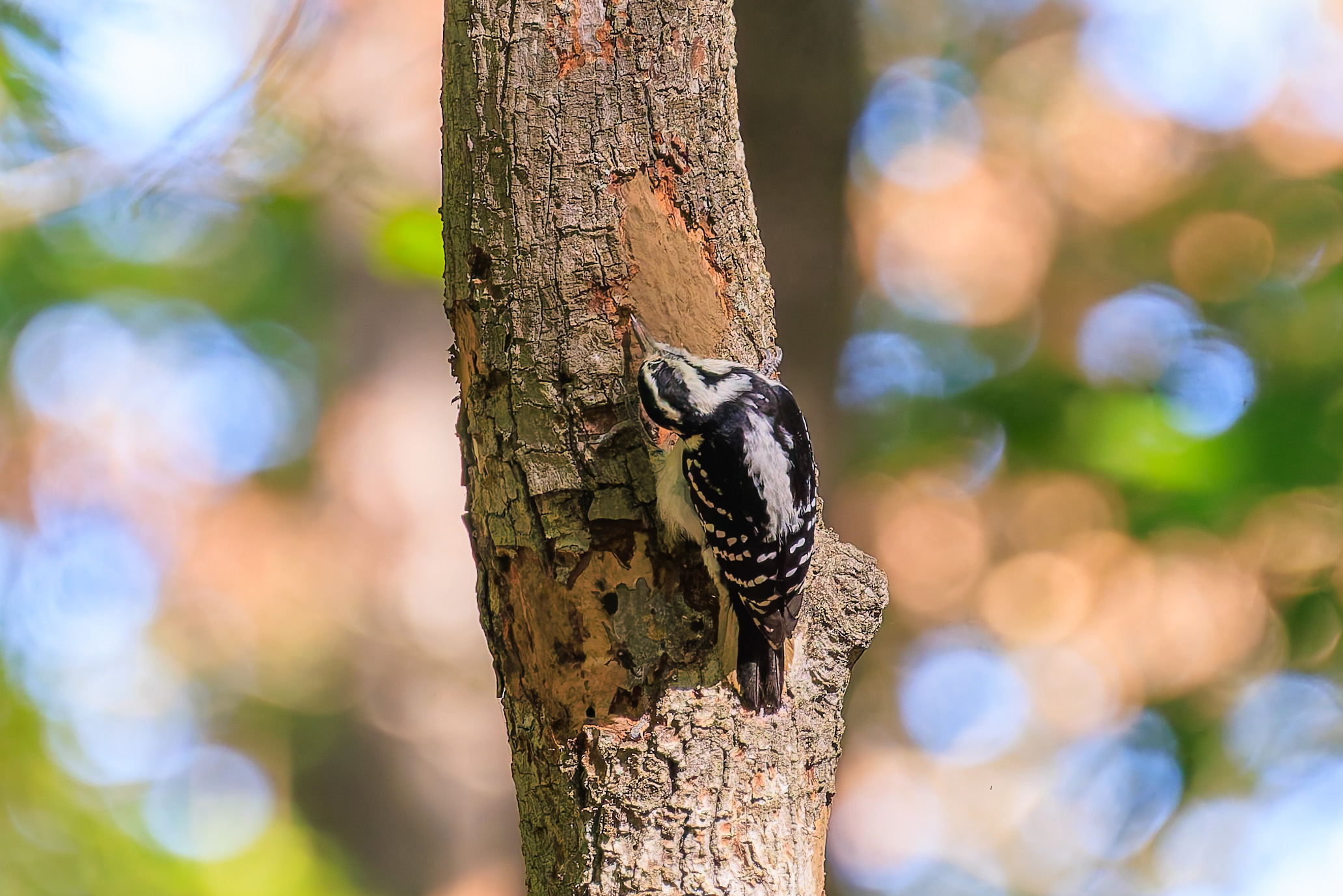
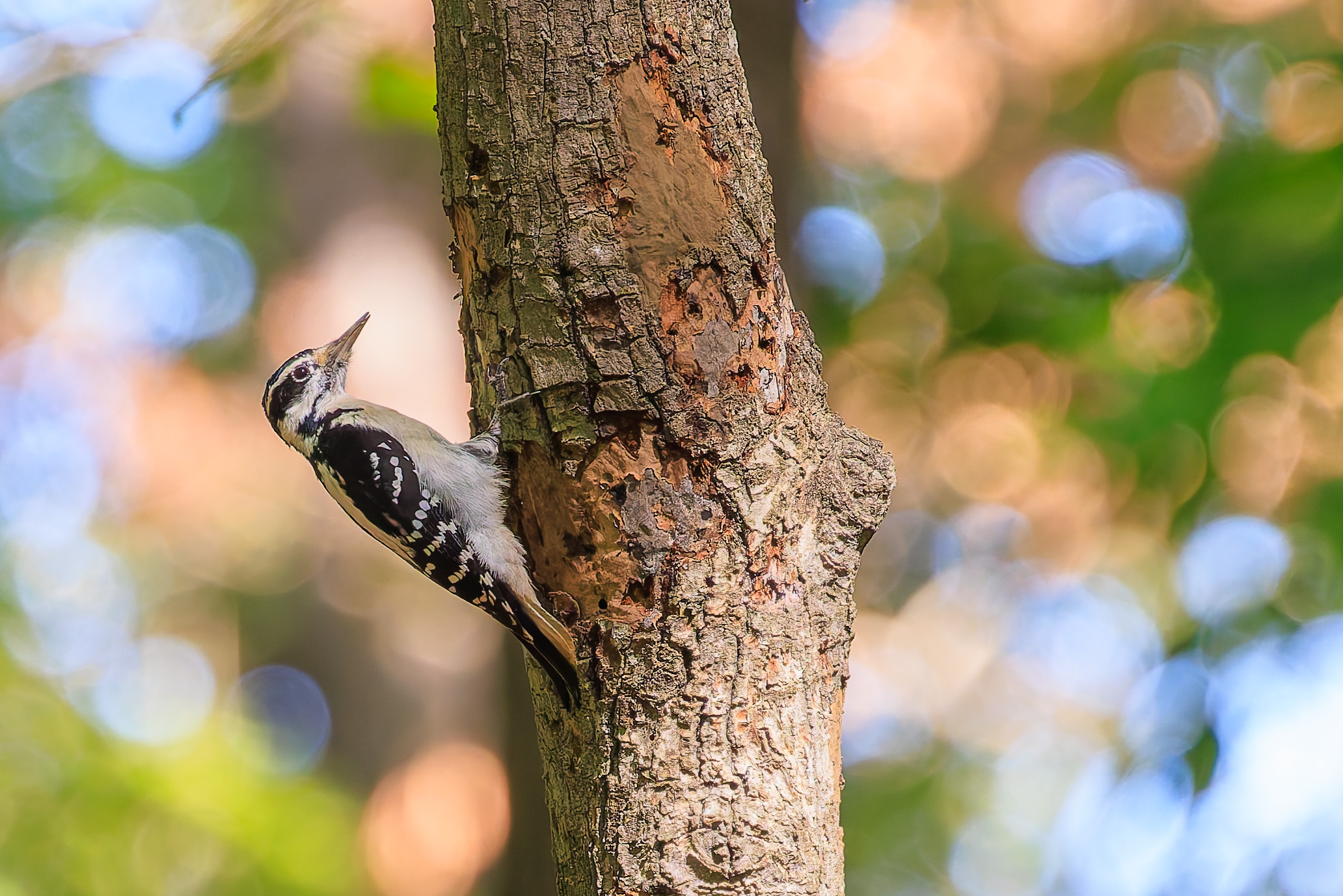
We also saw a woodpecker! Downy and Hairy Woodpeckers look very similar. The primary differences are that the hairy is larger, has a significantly longer beak, and does not have black dots on its white tail feathers. Size can be pretty difficult to gauge as there is usually no reference object to judge size with. But, the long beak is pretty easy to see once you’ve seen both species! And the dots are easy to find, or not find, as well. They’re much easier to differentiate compared to Sharp-Shinned vs. Cooper’s Hawks. While there’s lots of differences between the those two species, in practice it can be really hard to tell, for us at least.
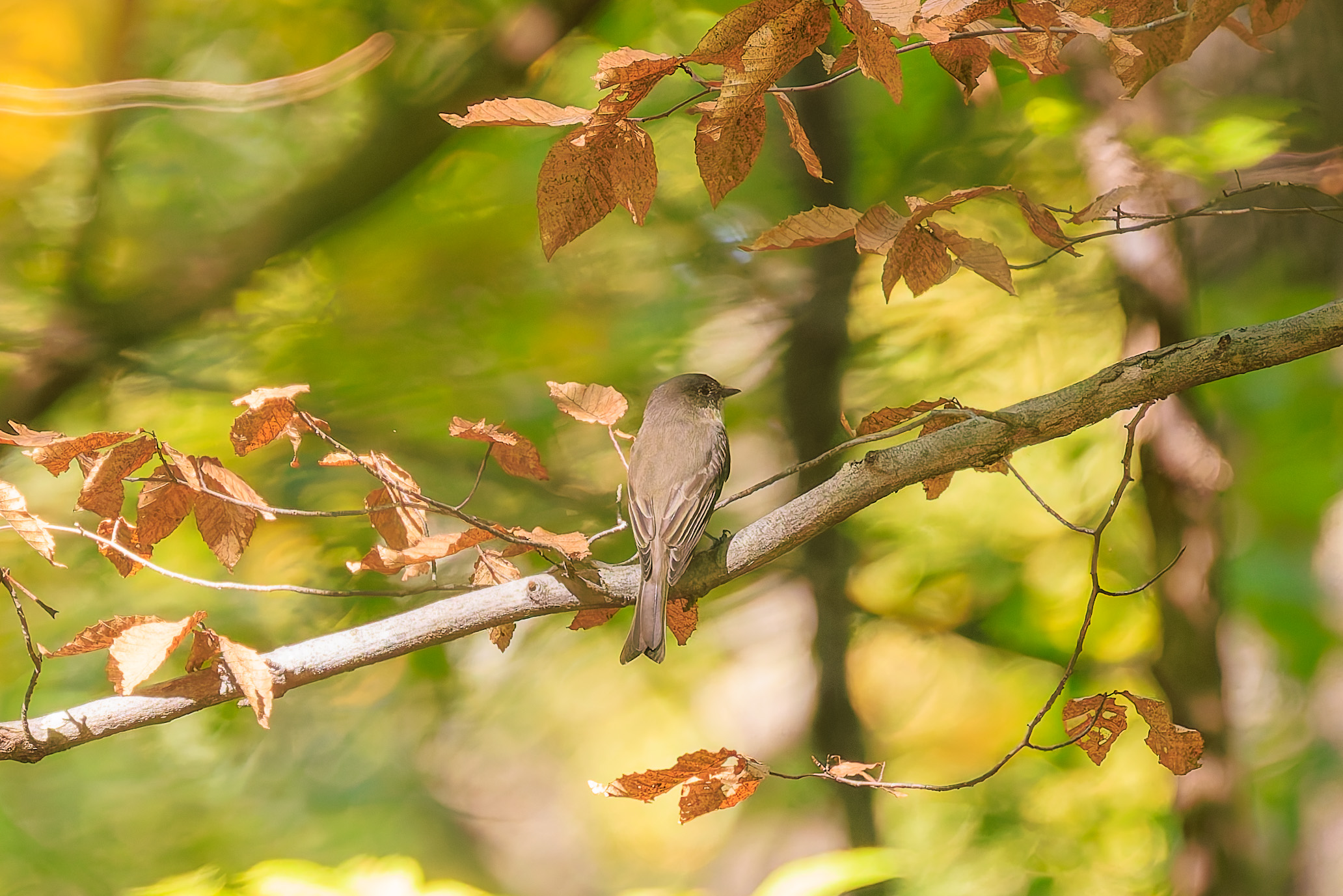
We saw the Eastern Phoebe again… After these sightings, we continued on until the trail reached a steep slope which descends to the Potomac River. There was a trail that leads to the riverside but it looked a bit sketchy. We decided to follow the trail as it turned to the east, following the river.
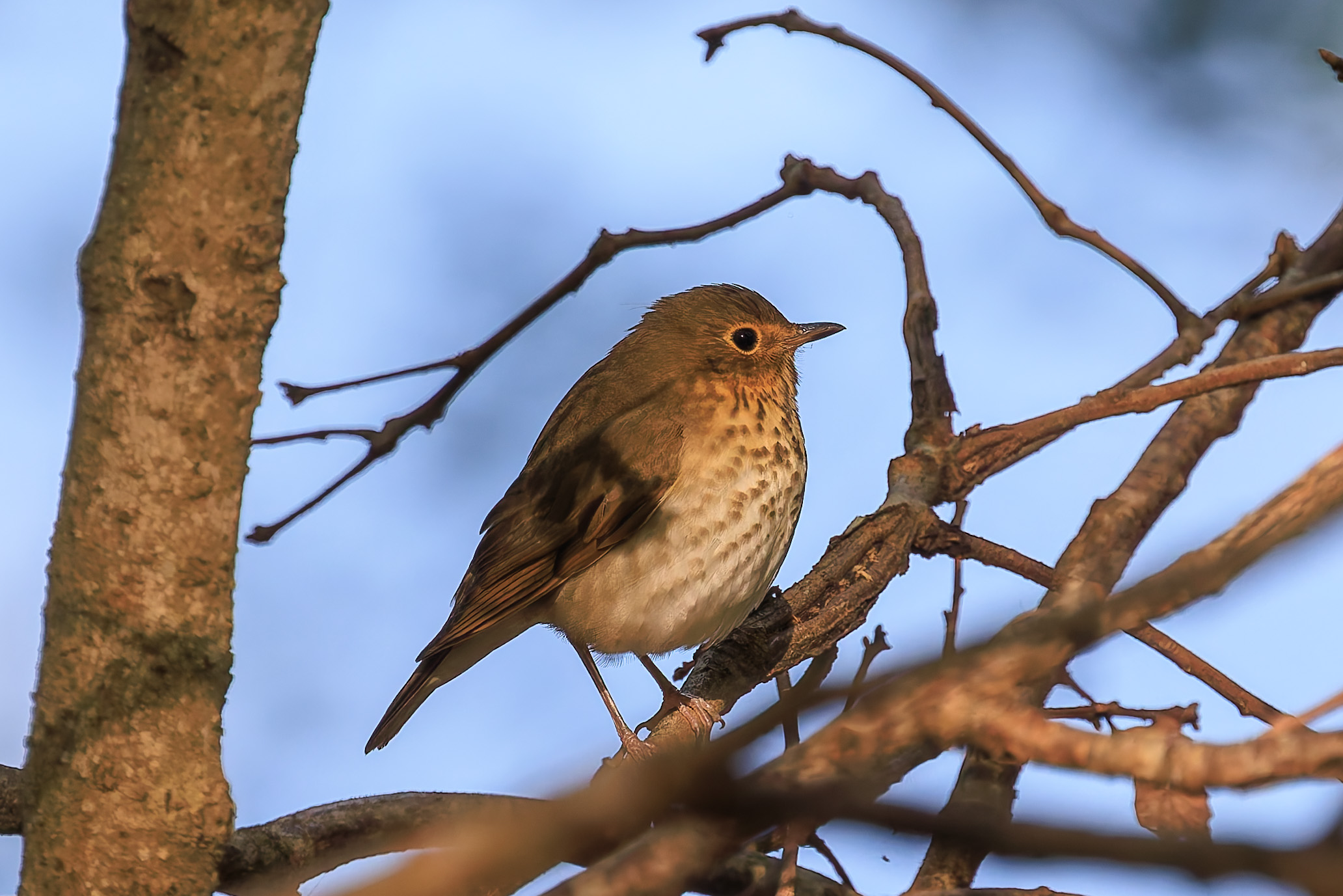
We think this bird is a Swainson’s Thrush, a species we saw for the first time last weekend. It does have quite a bit of similarity to the Hermit Thrush, a species that we haven’t seen yet.
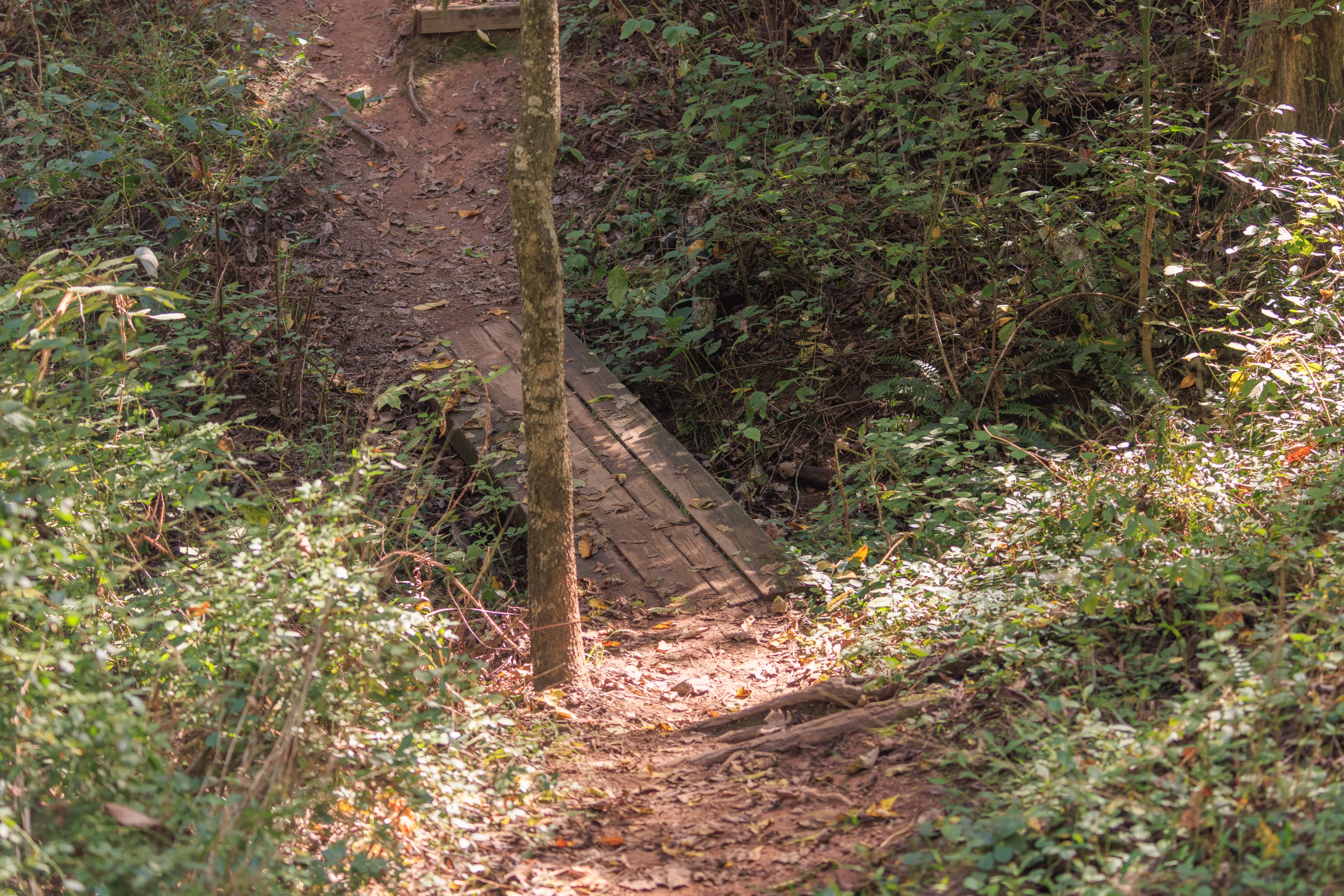
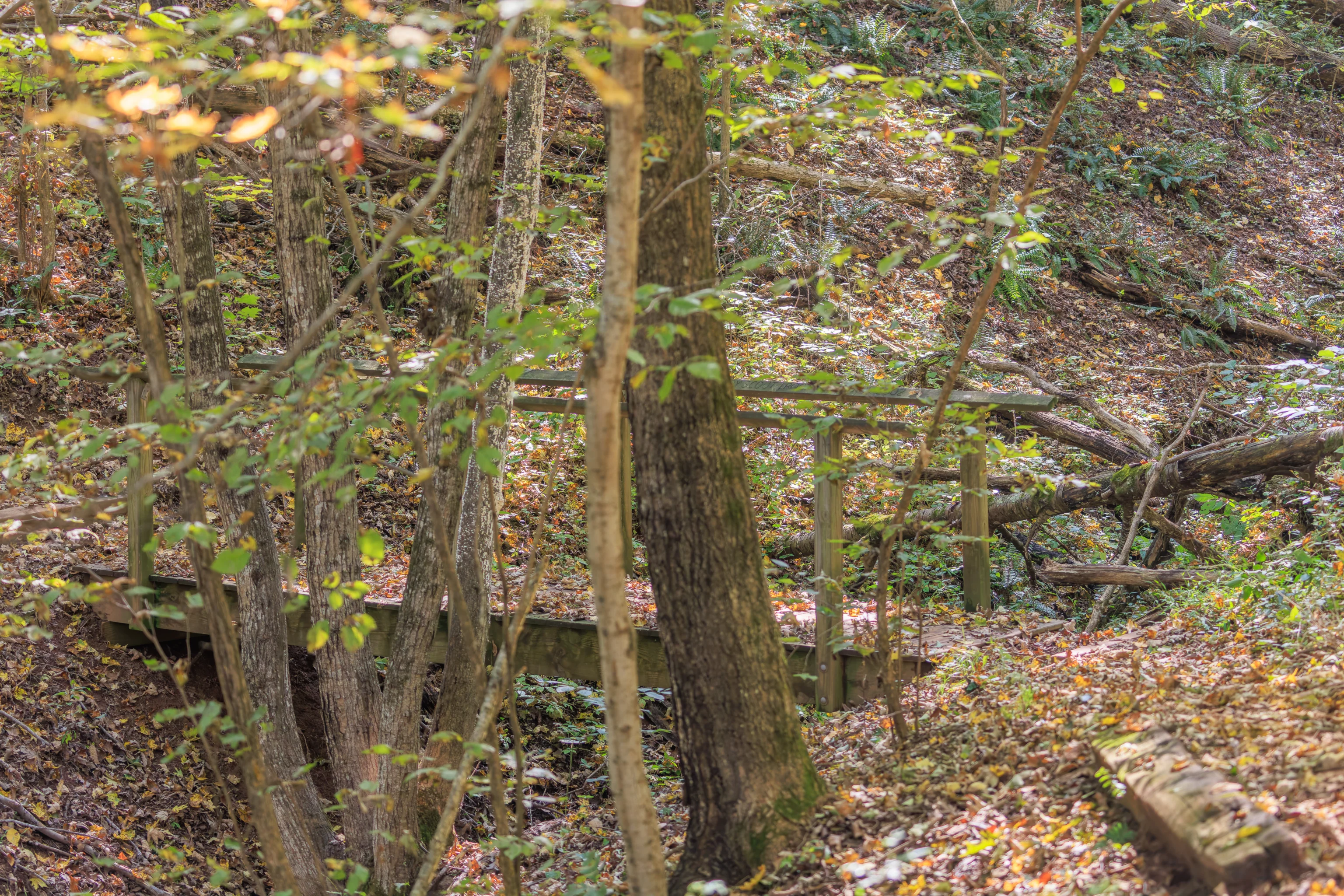
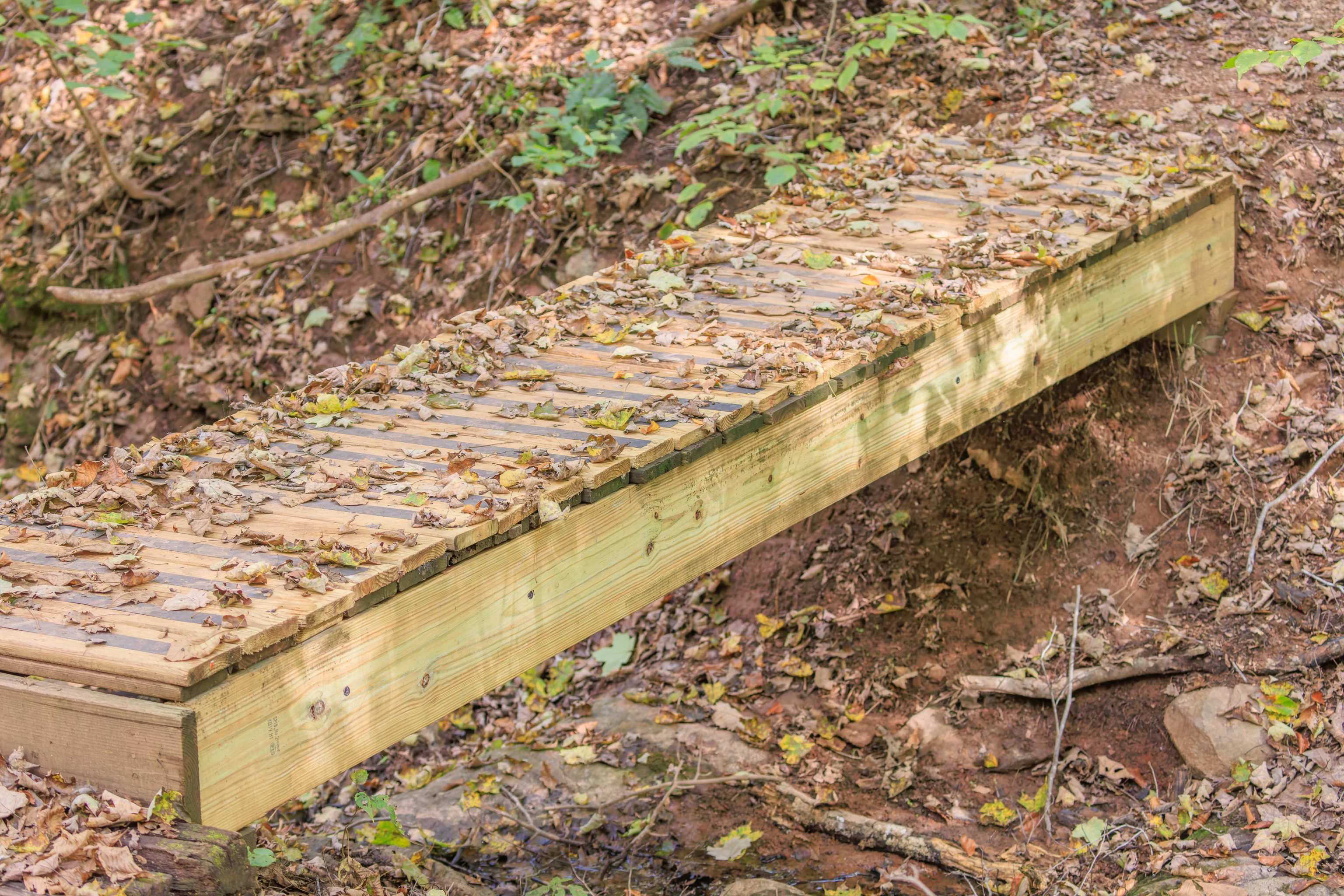
We had started on the park’s west loop trail. Upon reaching the eastern end, we walked to where it meets the east loop. The trail section of trail that links these two loops descends to a lower elevation. There were three small stream crossings, each with a small bridge.
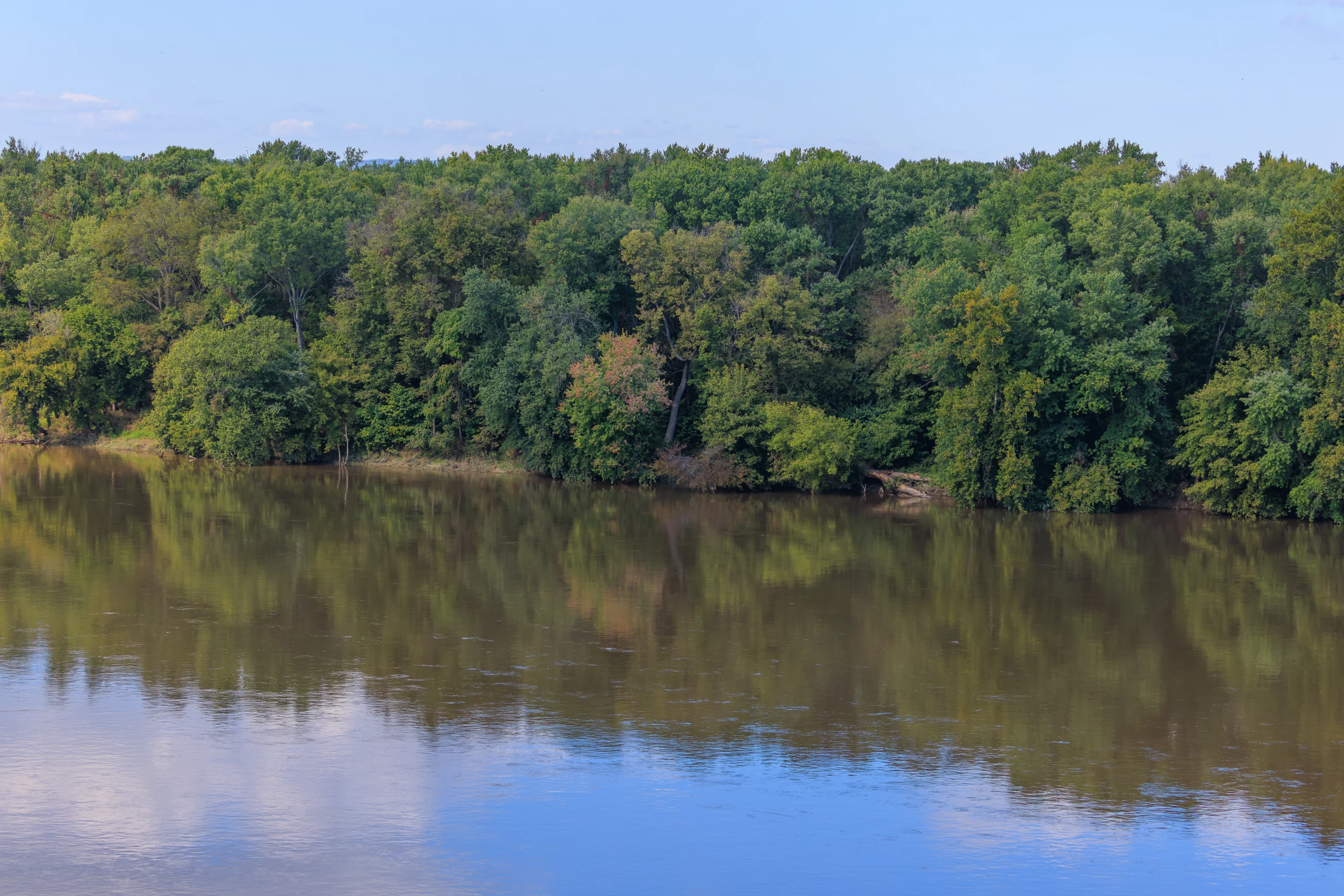
The eastern loop has a nice wide overlook above the Patapsco River. The view is obstructed by trees up and downstream but we had a pretty clear view of the Maryland directly opposite. The sun was in the clouds when we took this photo so its a bit dark.
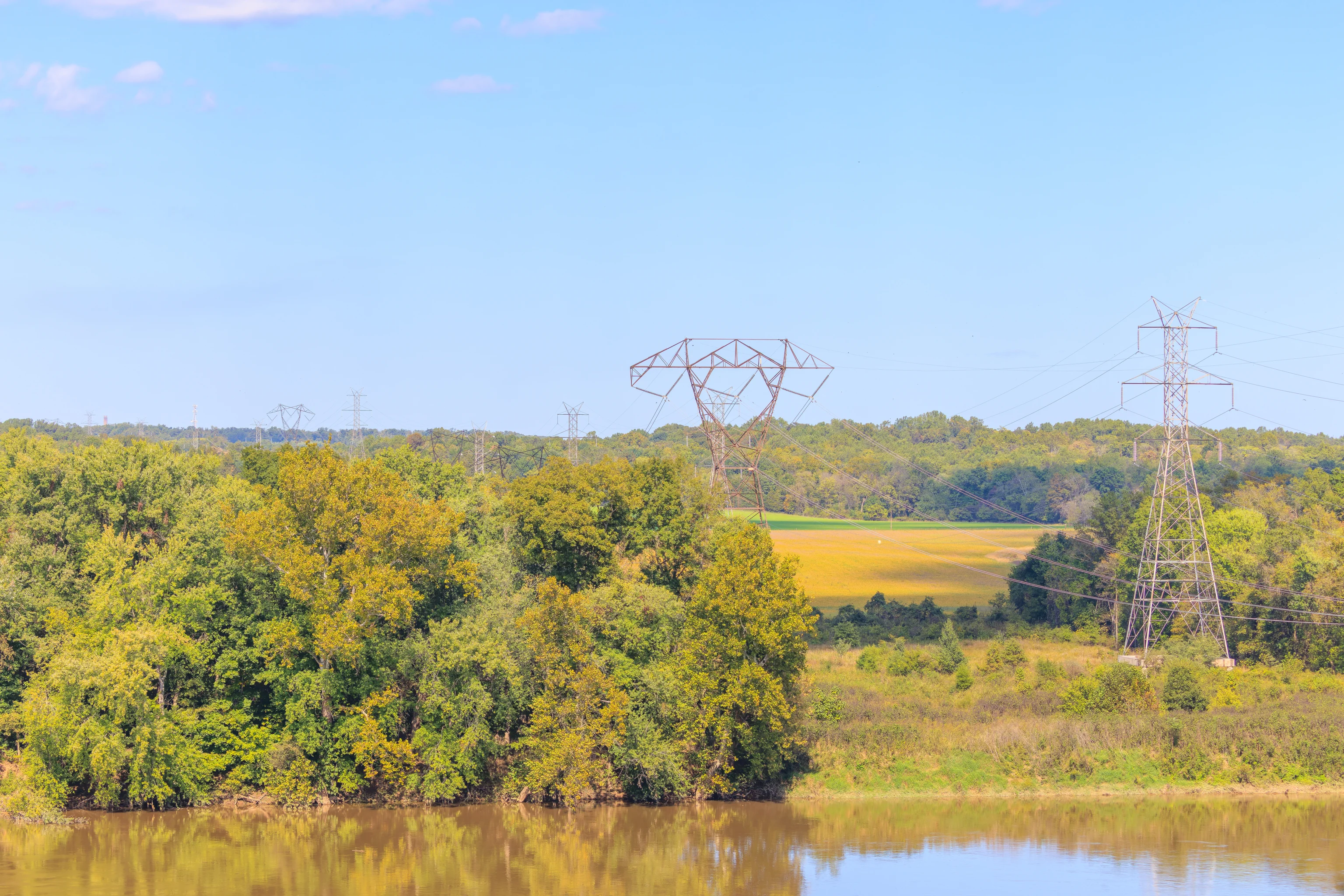
There isn’t really much to see. Lots of trees, a bit of farmland, and power lines!
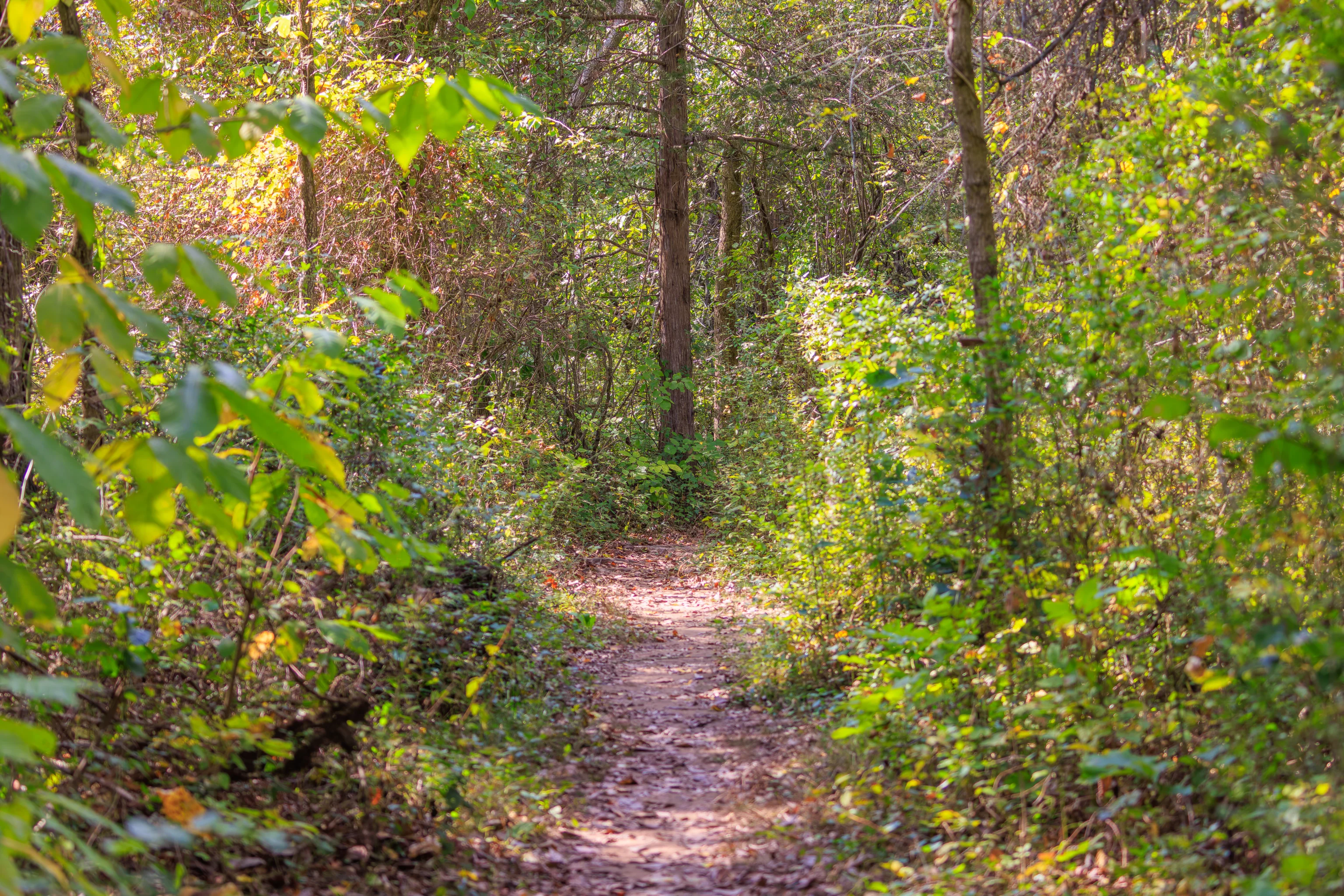
We continued on, following the eastern loop as it runs past a water treatment facility.
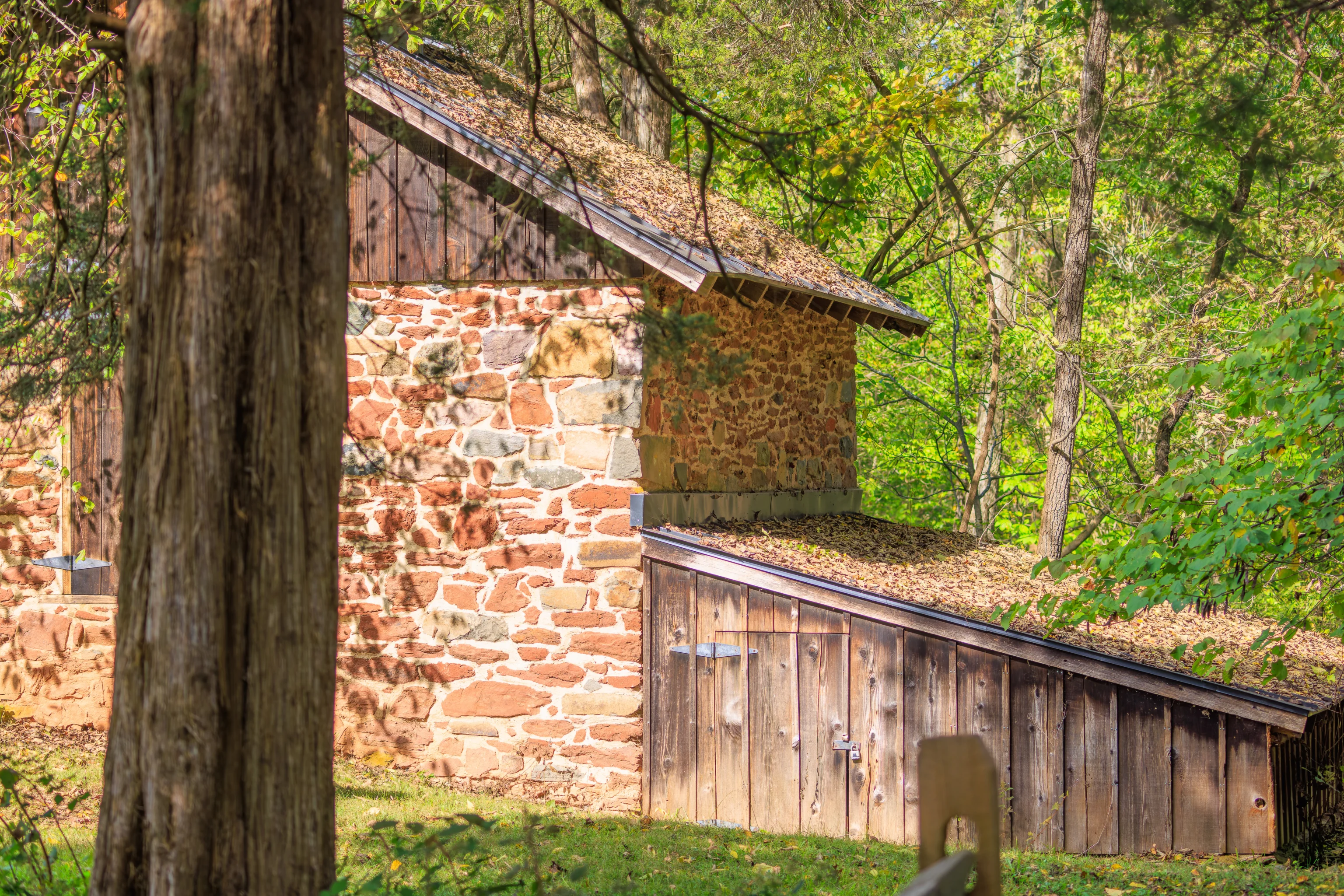
The eastern loop curves to the west and reaches this building, an Ice House, near the park’s parking lot. A sign describes this historic structure:
In winter this building was filled with ice cut from the Potomac River. The thick stone walls and many layers of straw provided sufficient insulation to preserve supply of ice for summer use. When the family needed ice, large chunks were retrieved from under the straw and taken to the house.
The ice house was probably built sometime between 1876 and 1889. It remained in use until the mid-1930s and was restored by the Northern Virginia Regional Park Authority in 1983.
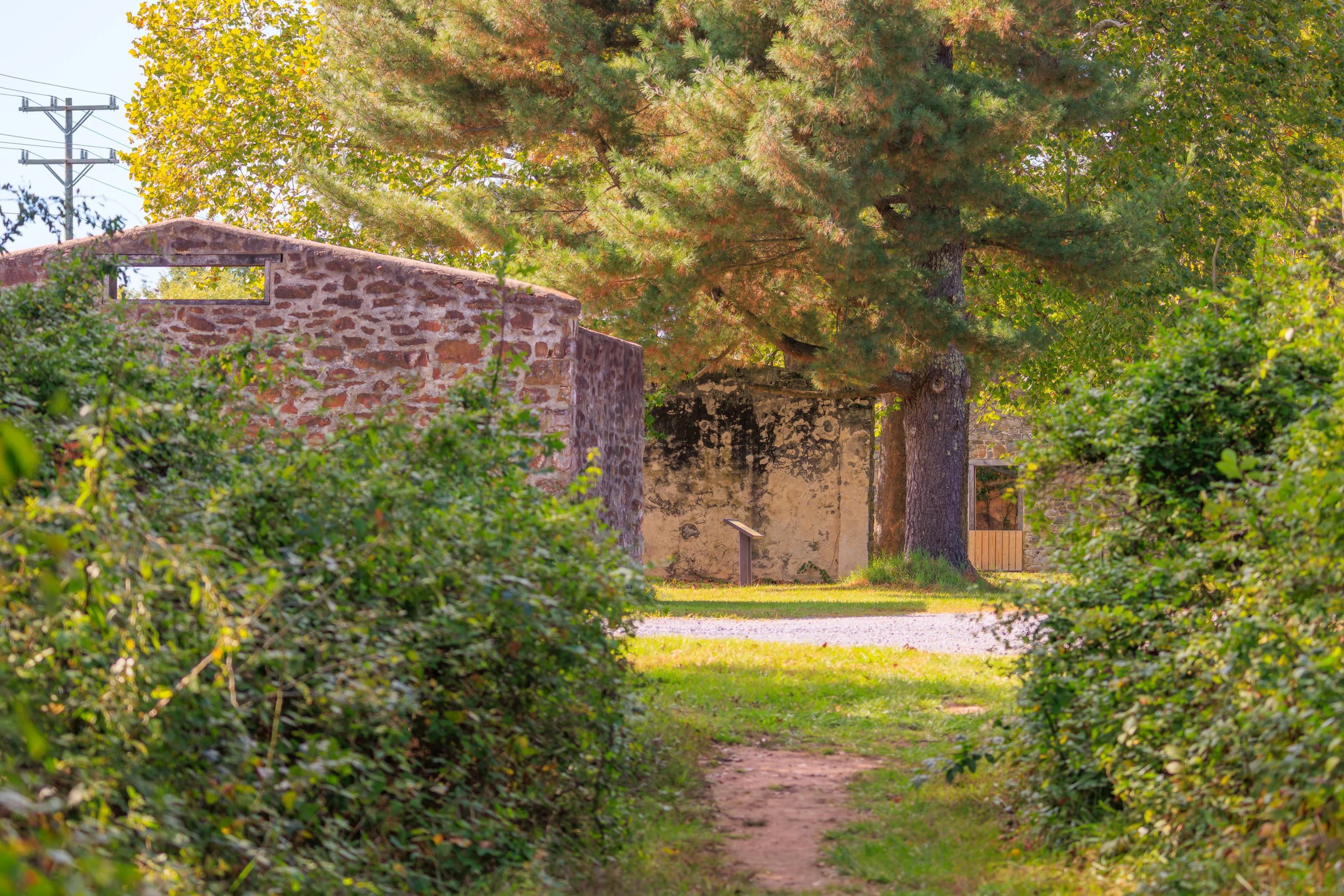
There are a few other historic buildings by the parking lot as well, though they’re best described as ruins.
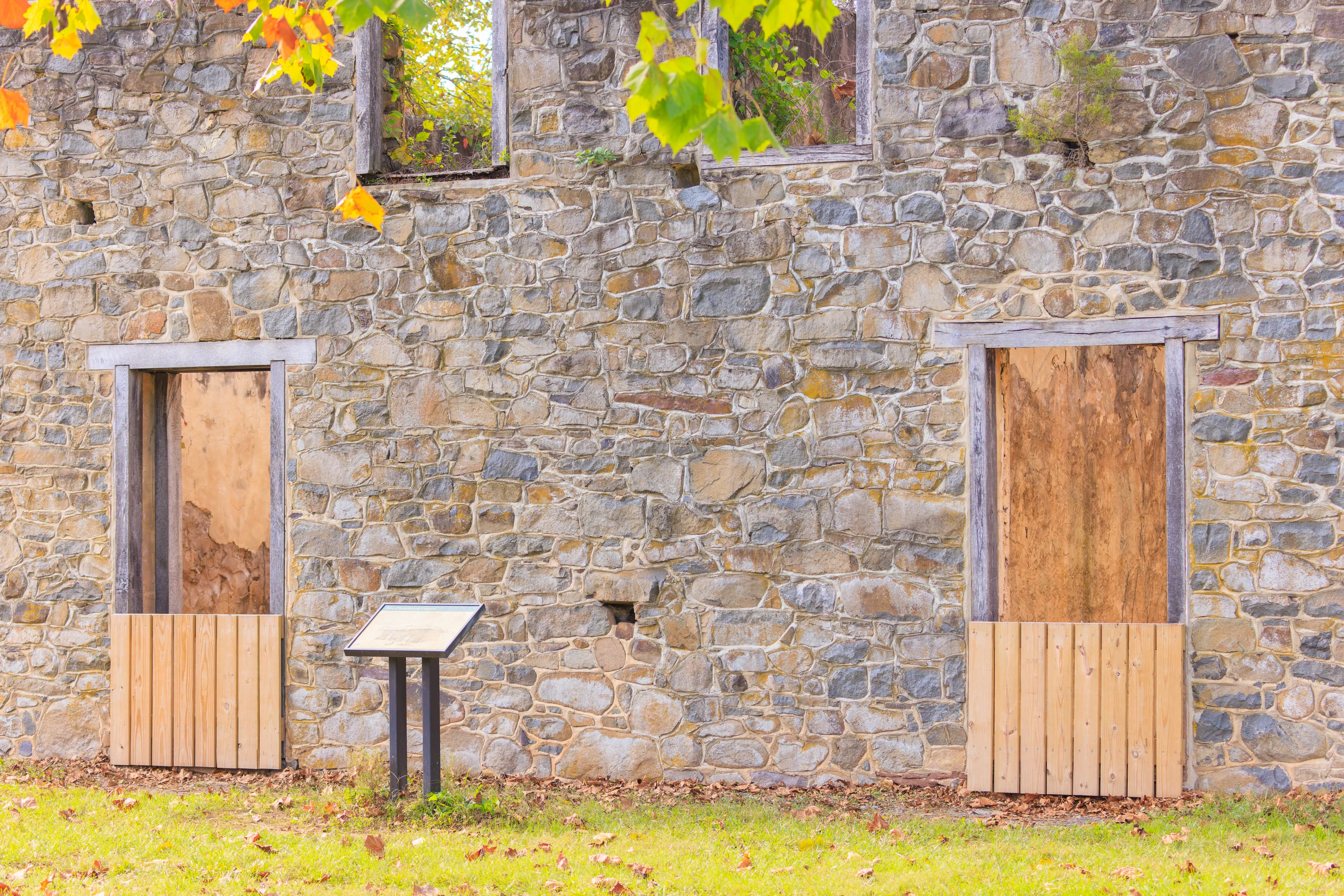
This building is a Two-Chambered Granary. The sign in front provides a brief description:
The two-chambered granary was used for storing threshed grain until it was either sold or consumed. The presence of two chambers indicates that the owner could grow two different crops and store them simultaneously. Grain was often transported across the Potomac River at Edwards Ferry, the southernmost river crossing in Loudoun County. The C & O Canal on the Maryland side of the river was also commonly used to transport Virginia grown crops throughout Maryland into Washington, D.C.


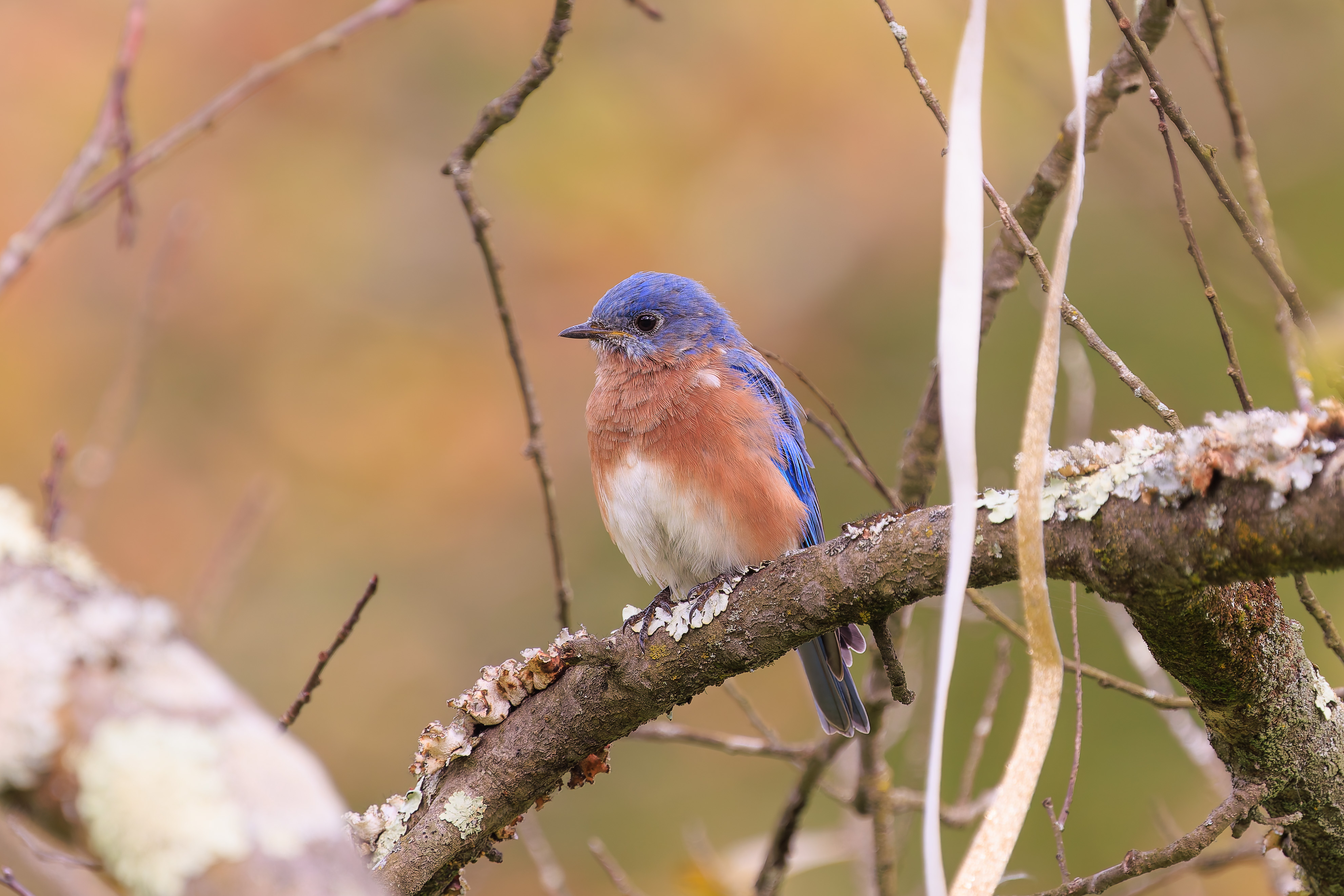
One Reply to “A Bluebird Day at the Meadowlark Botanical Gardens”